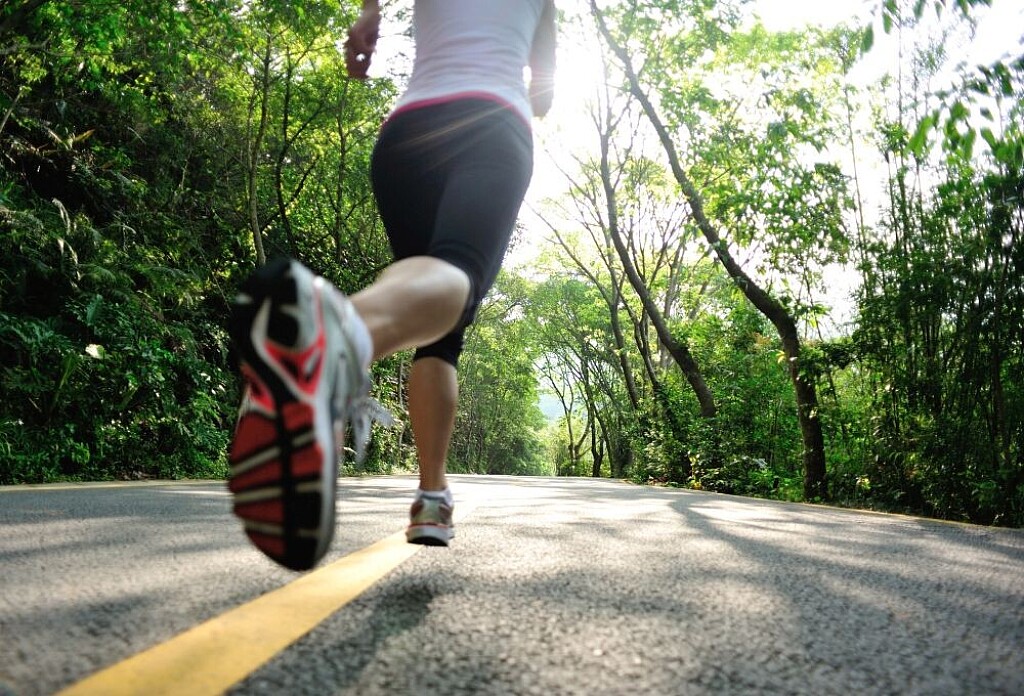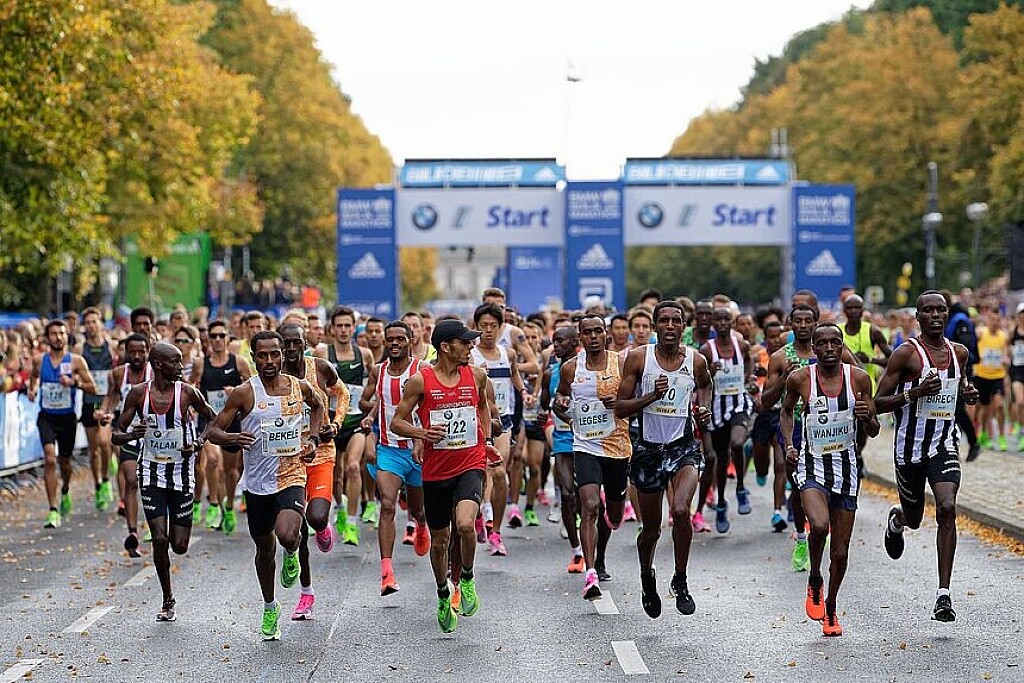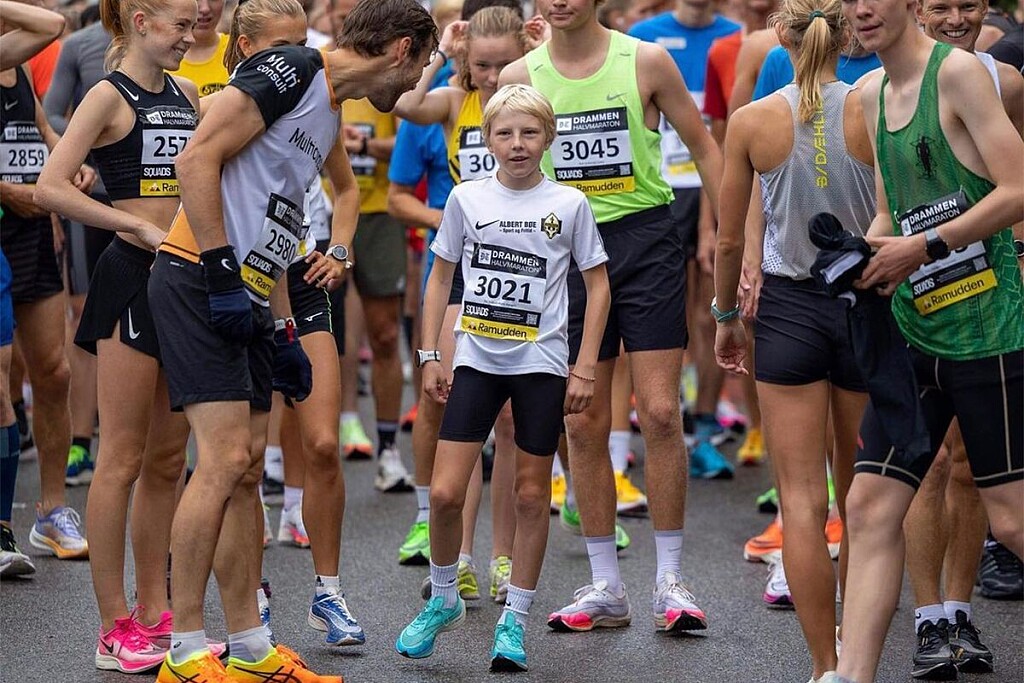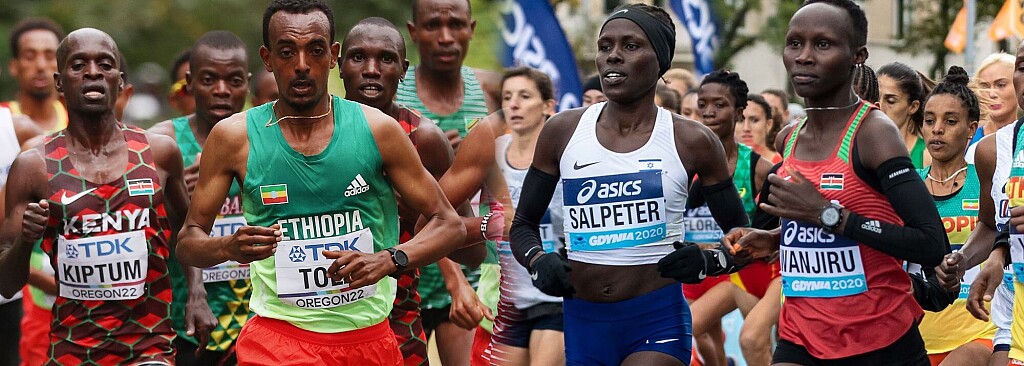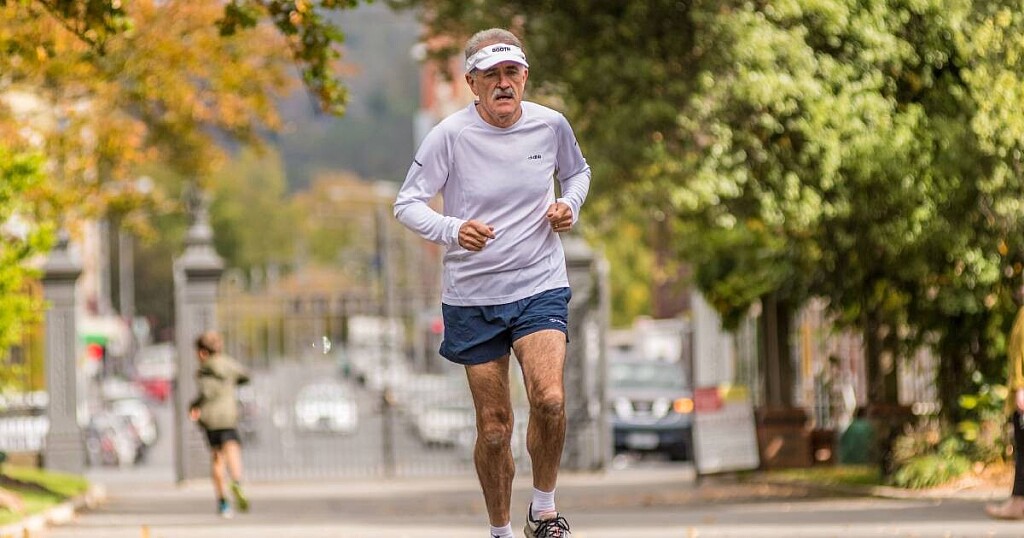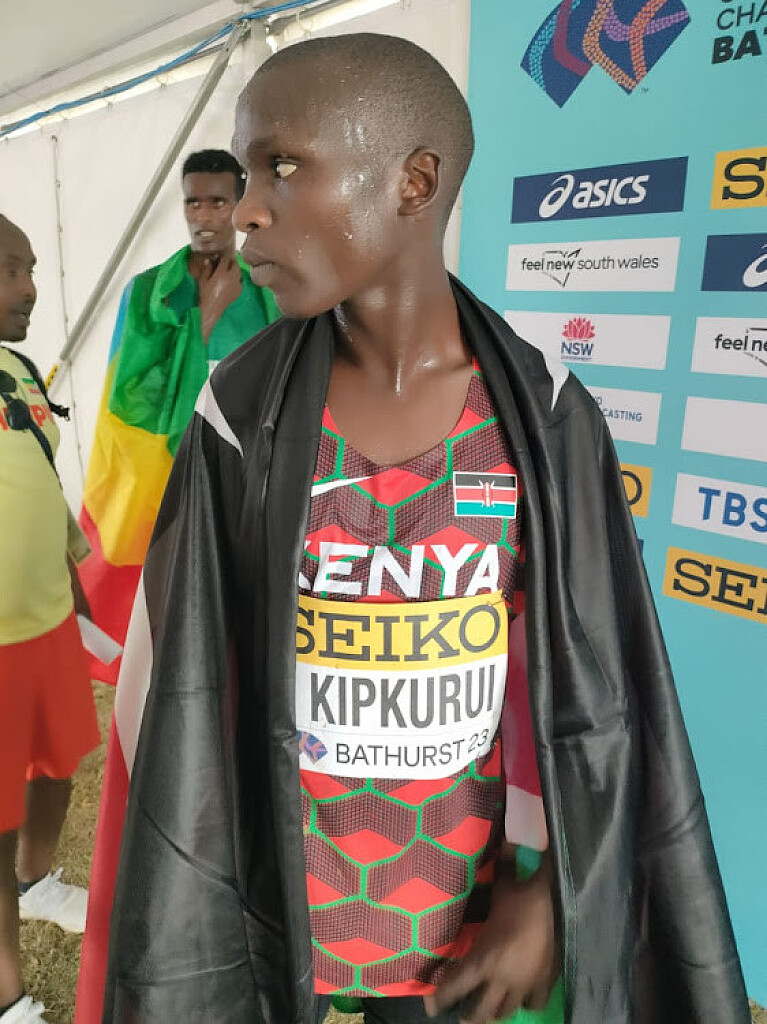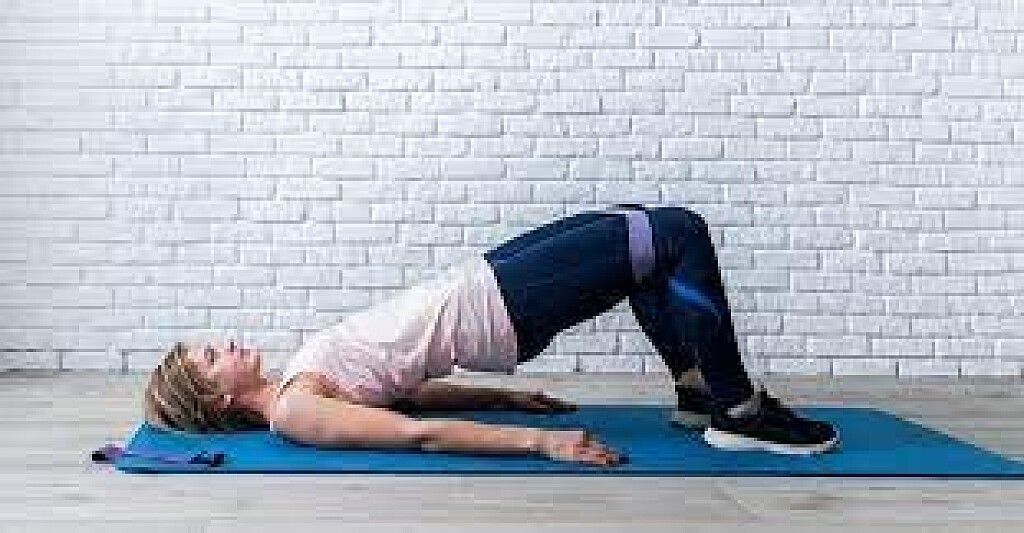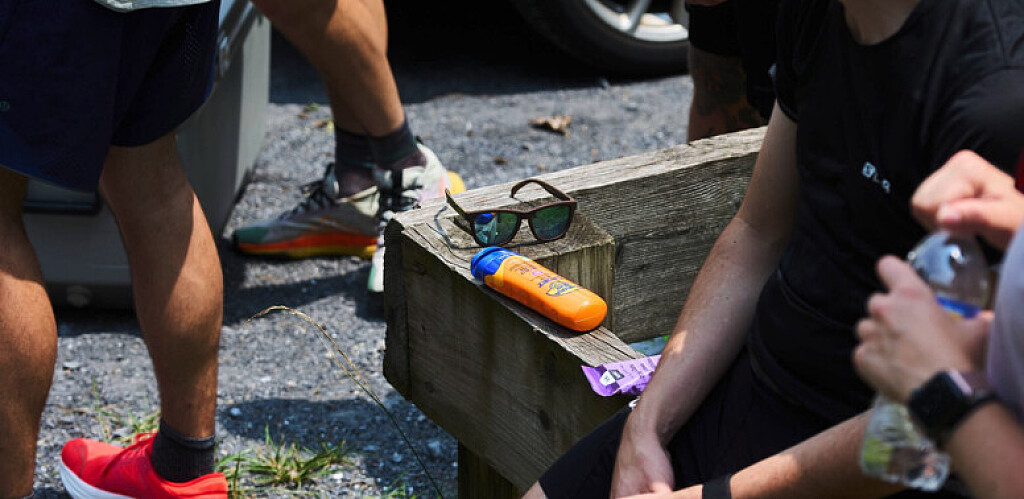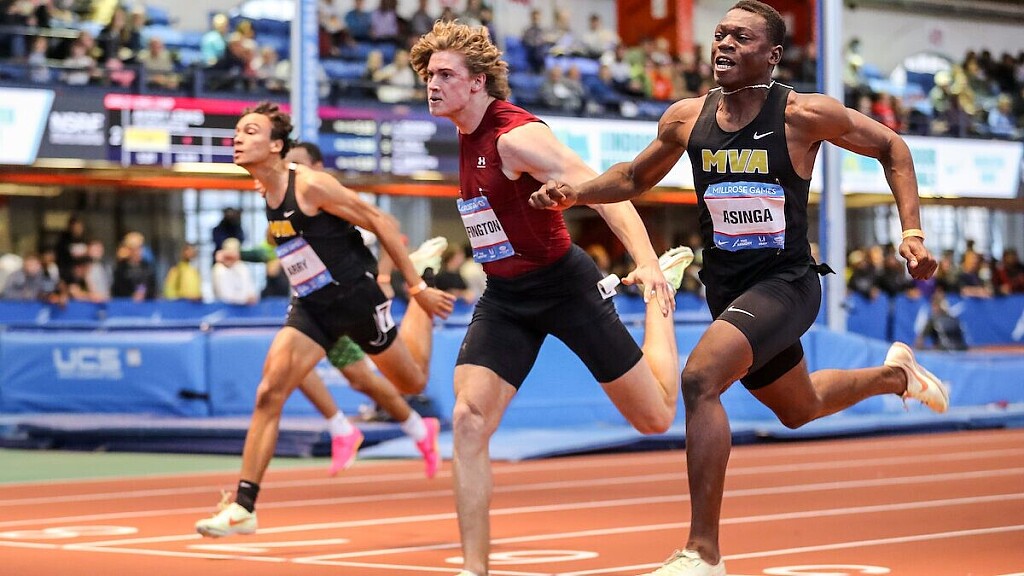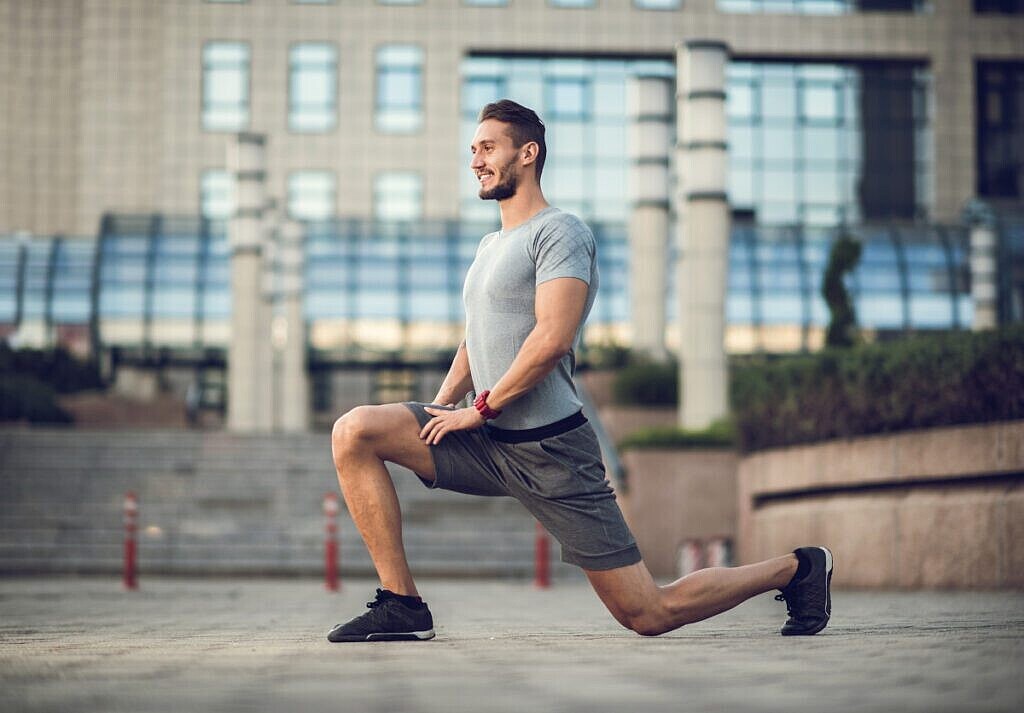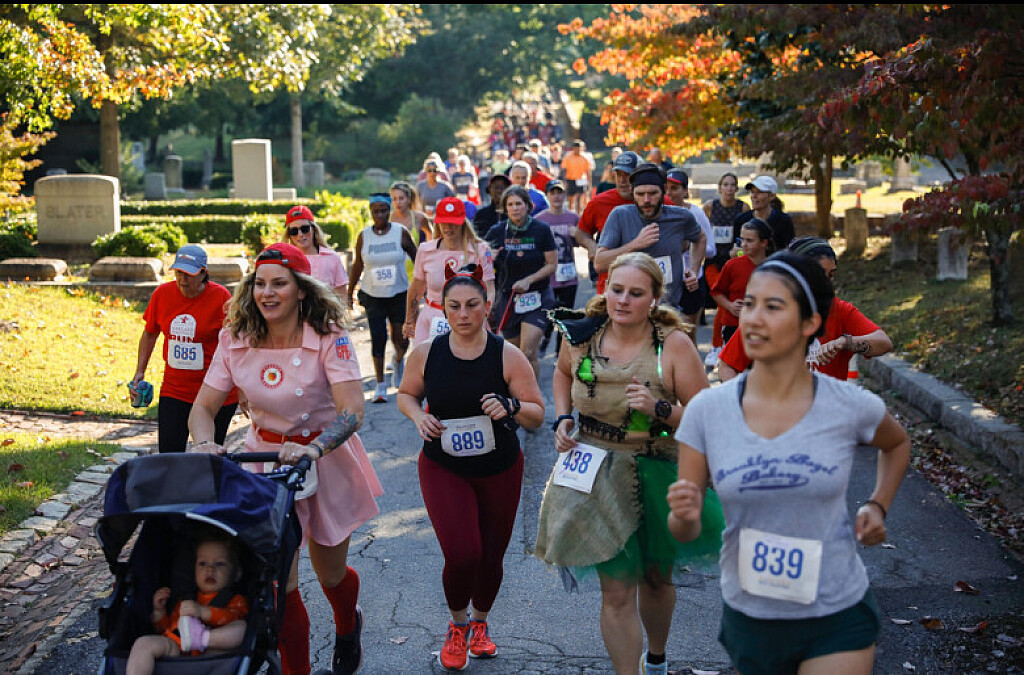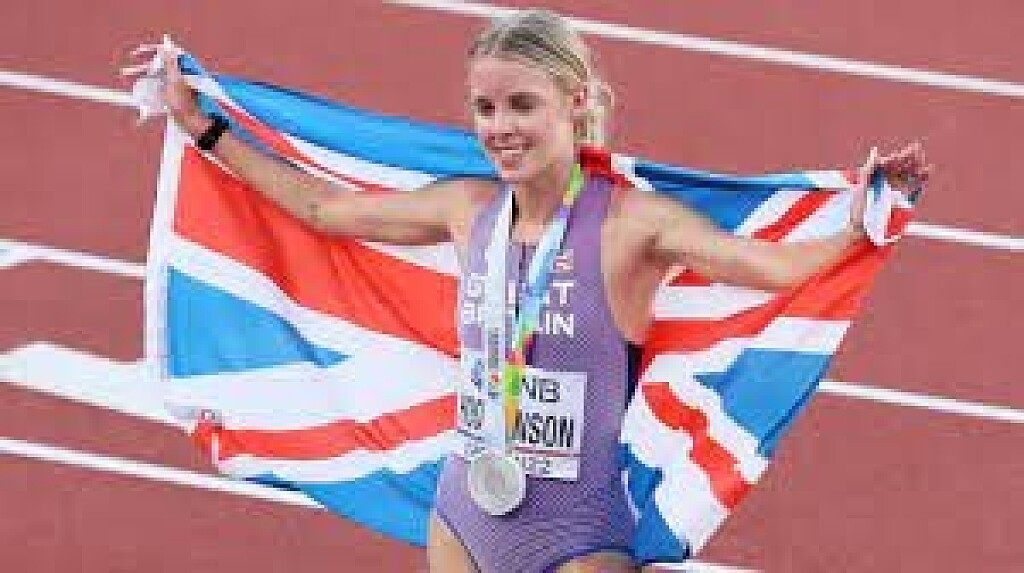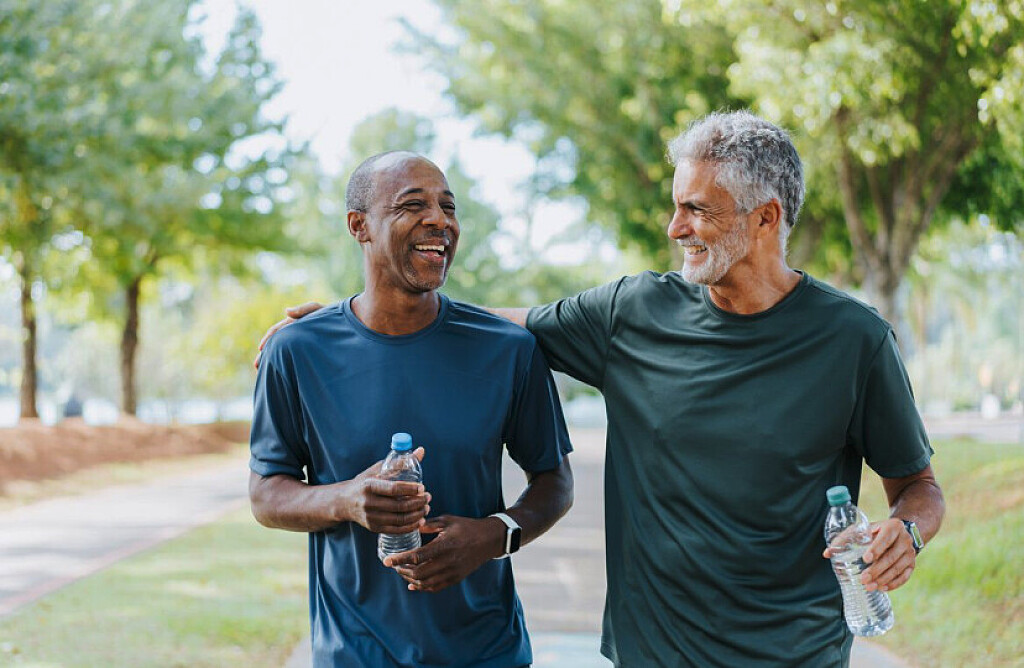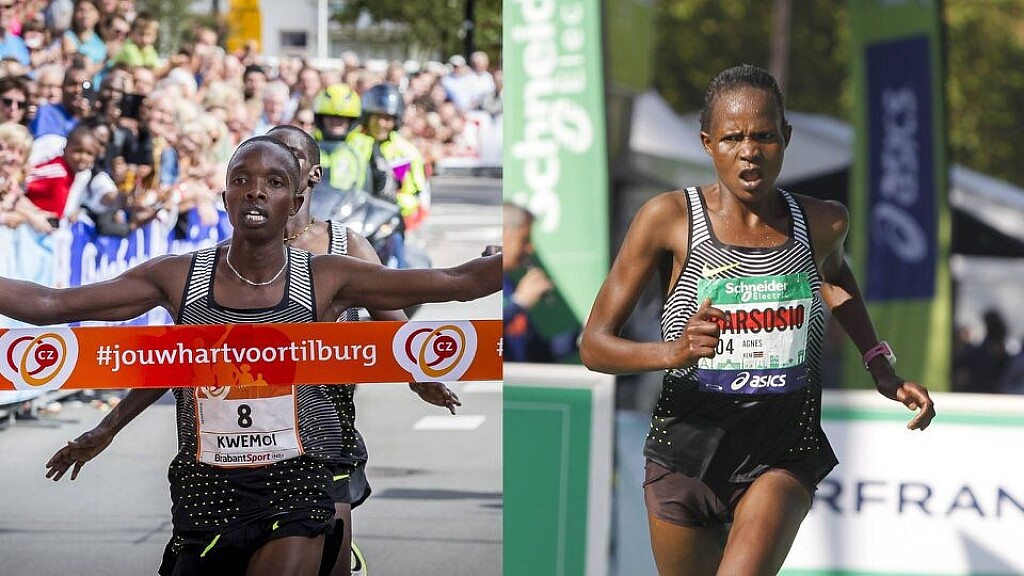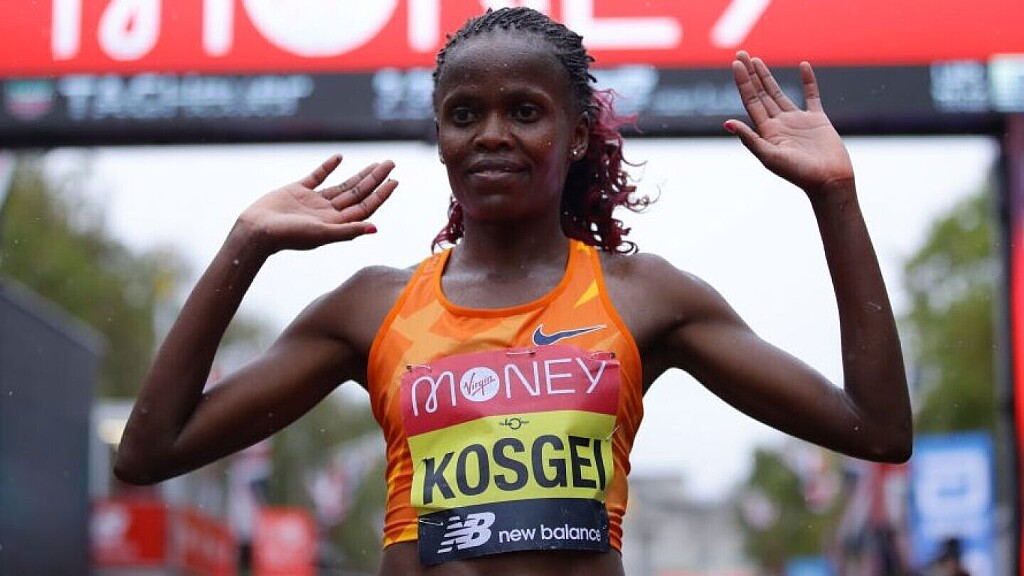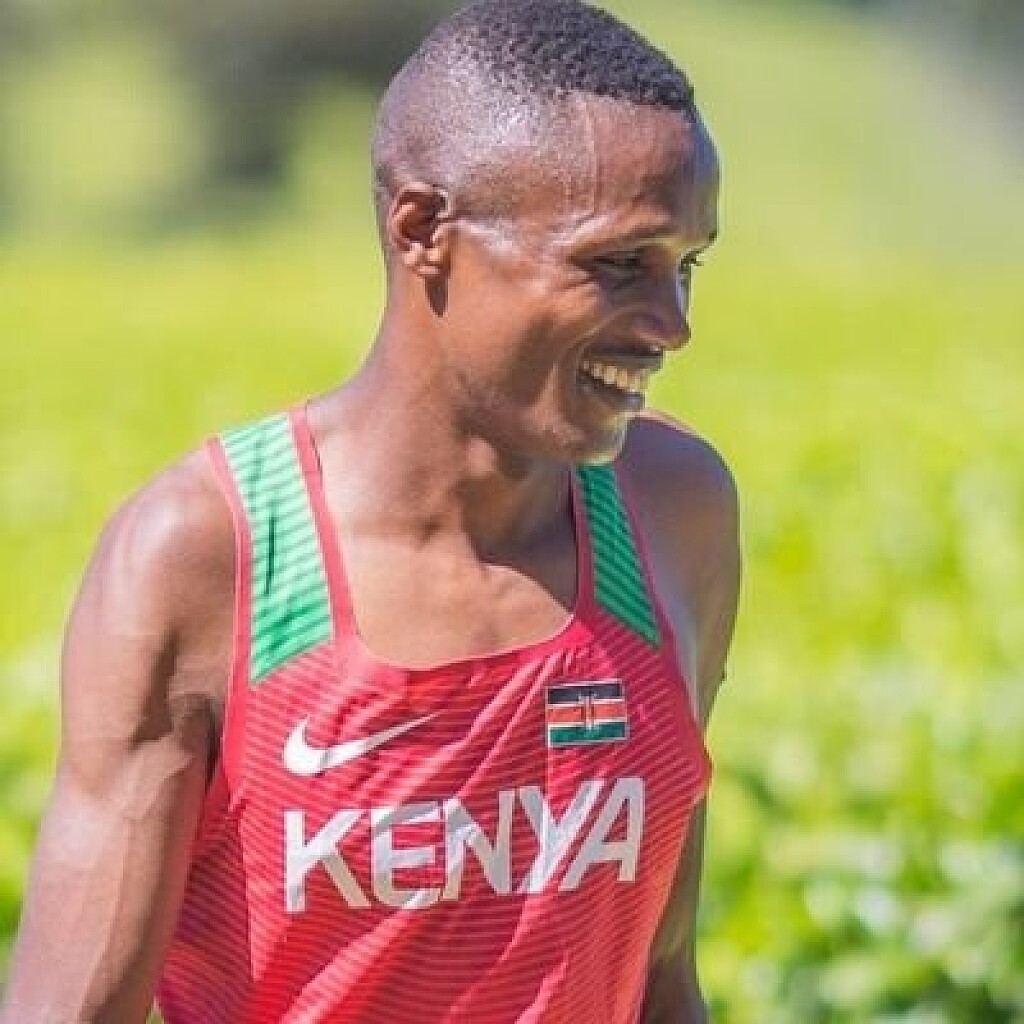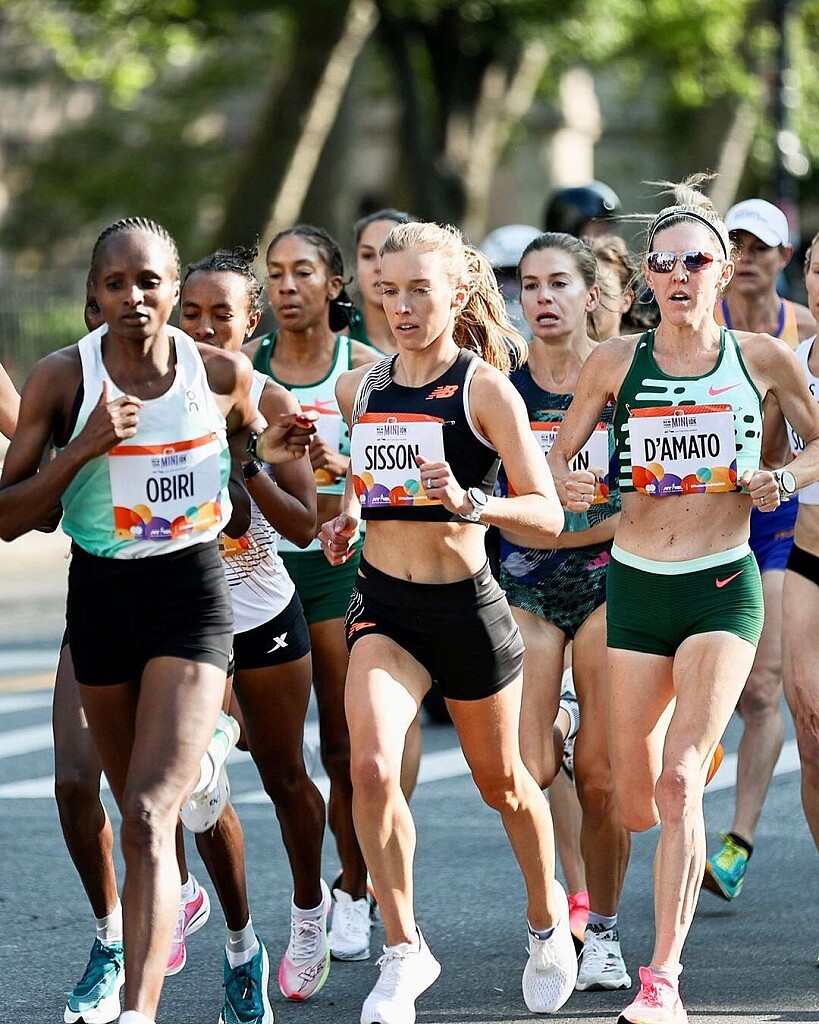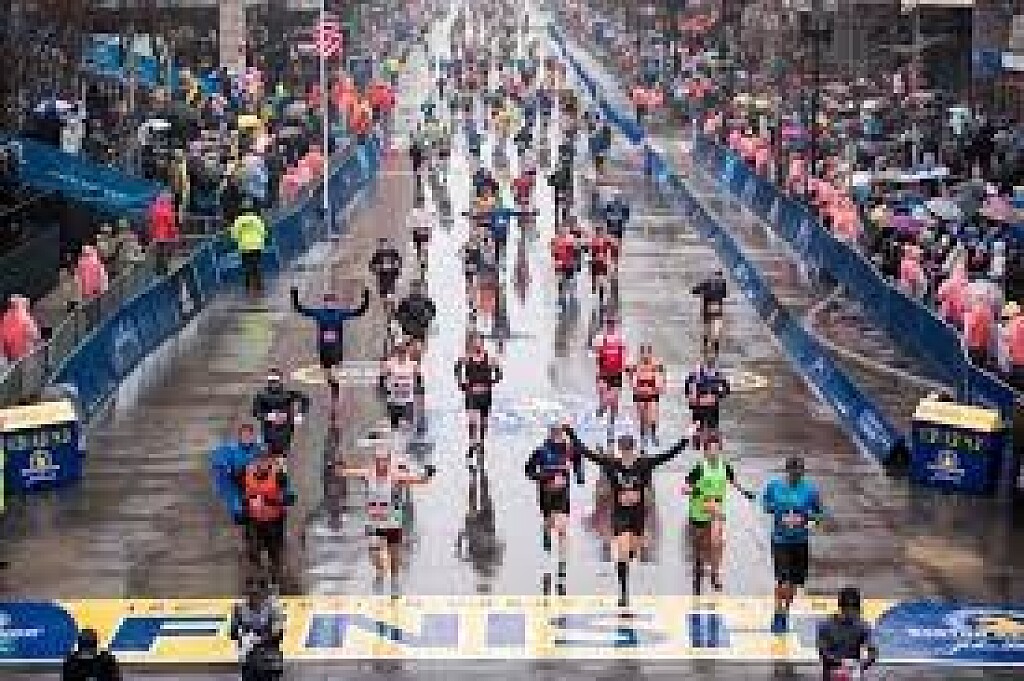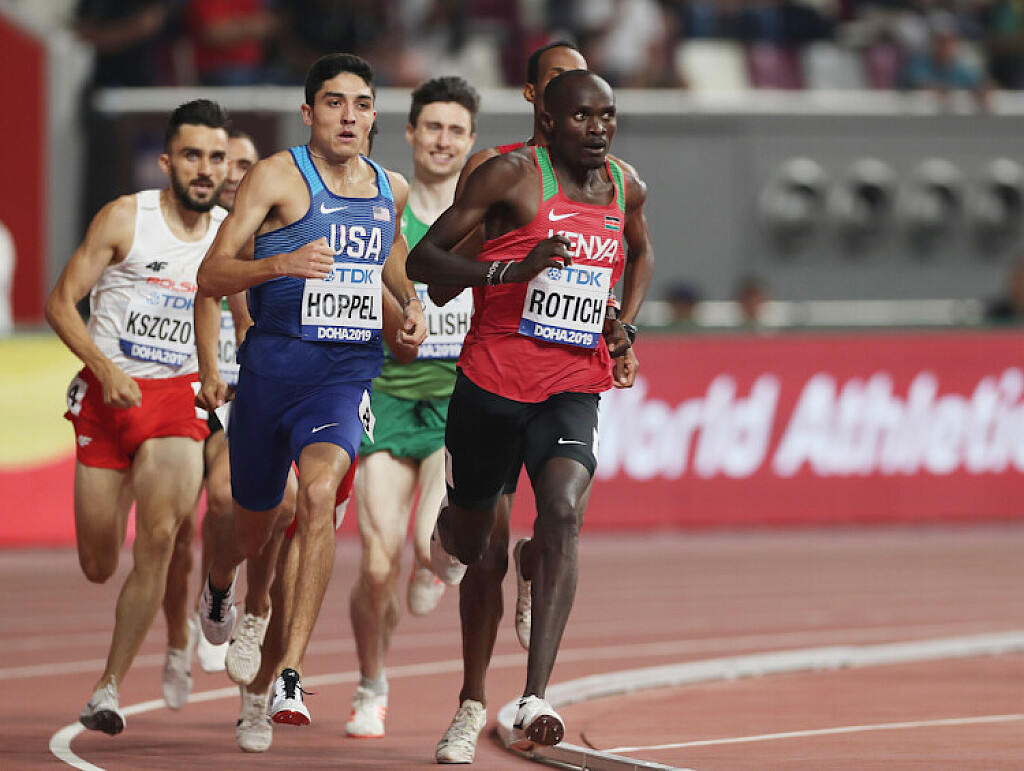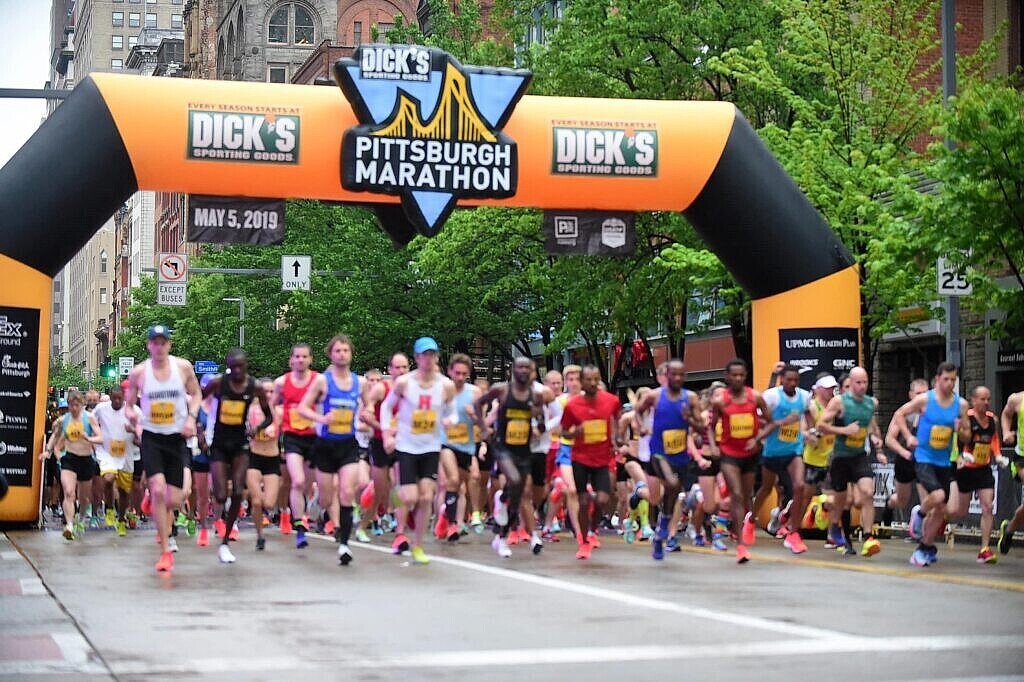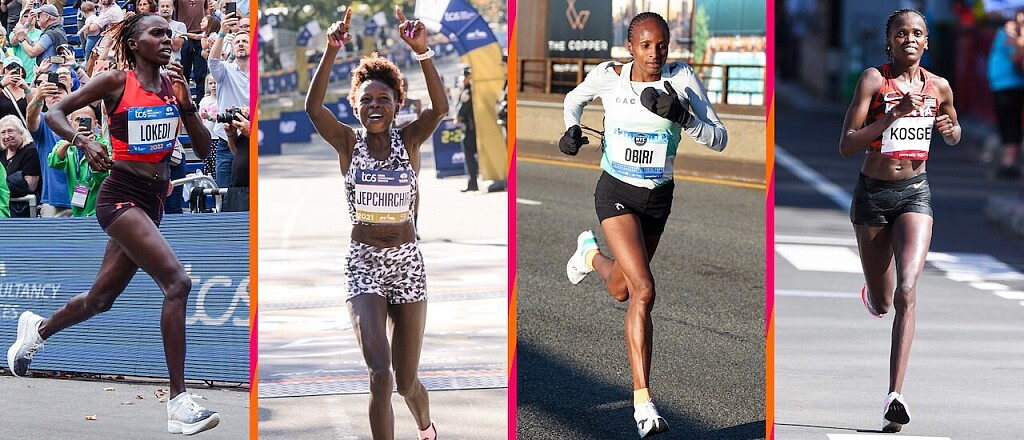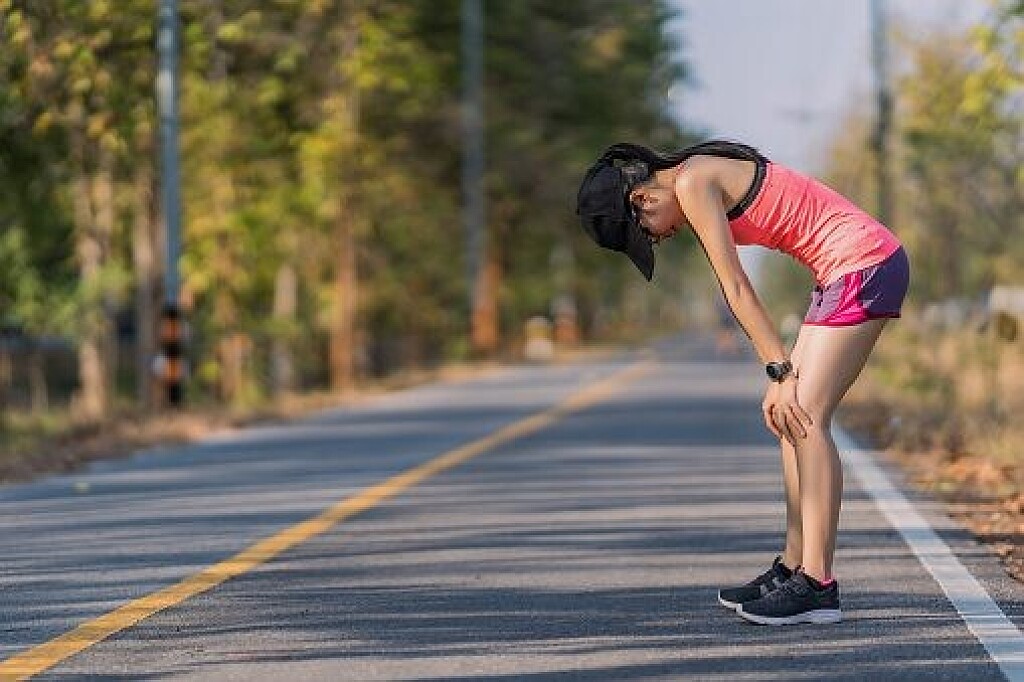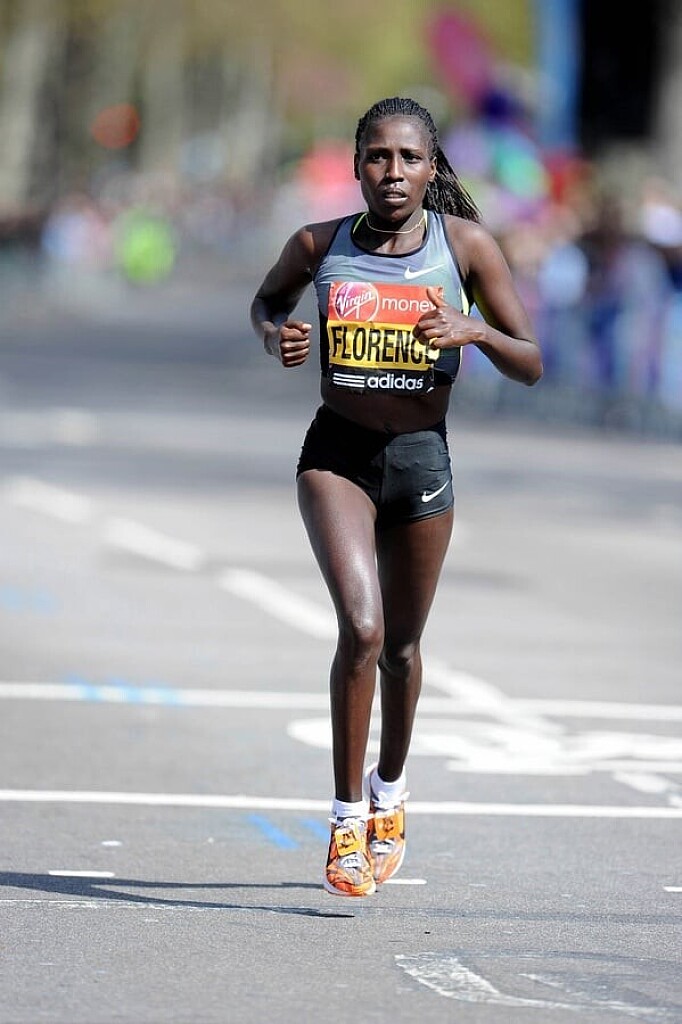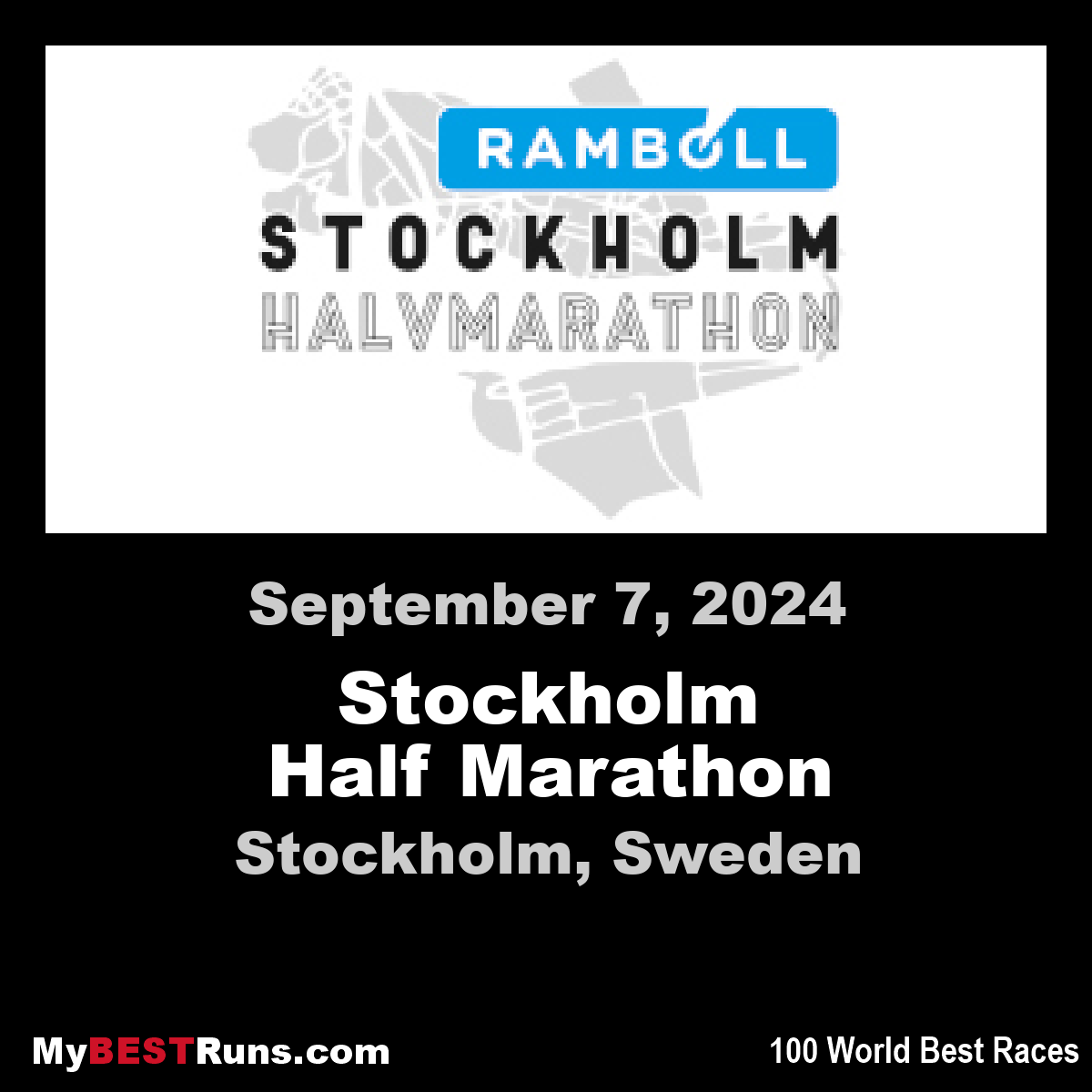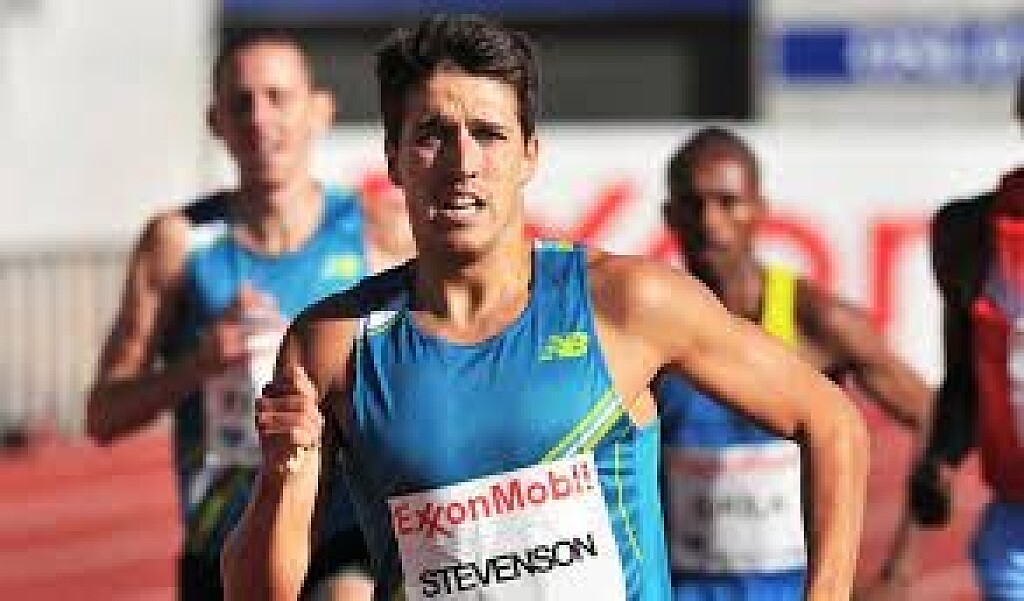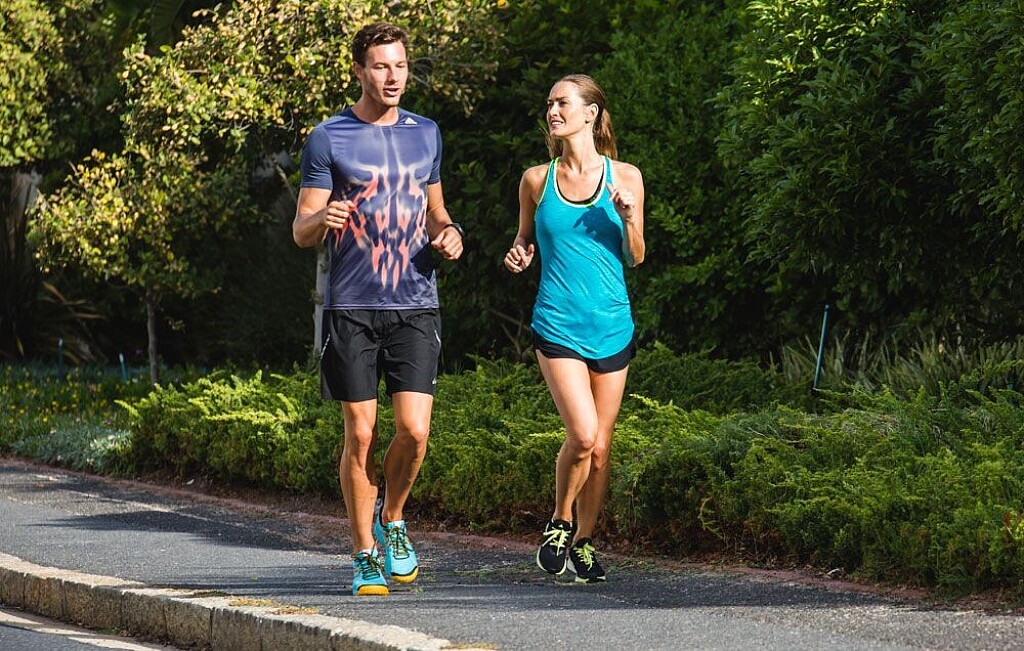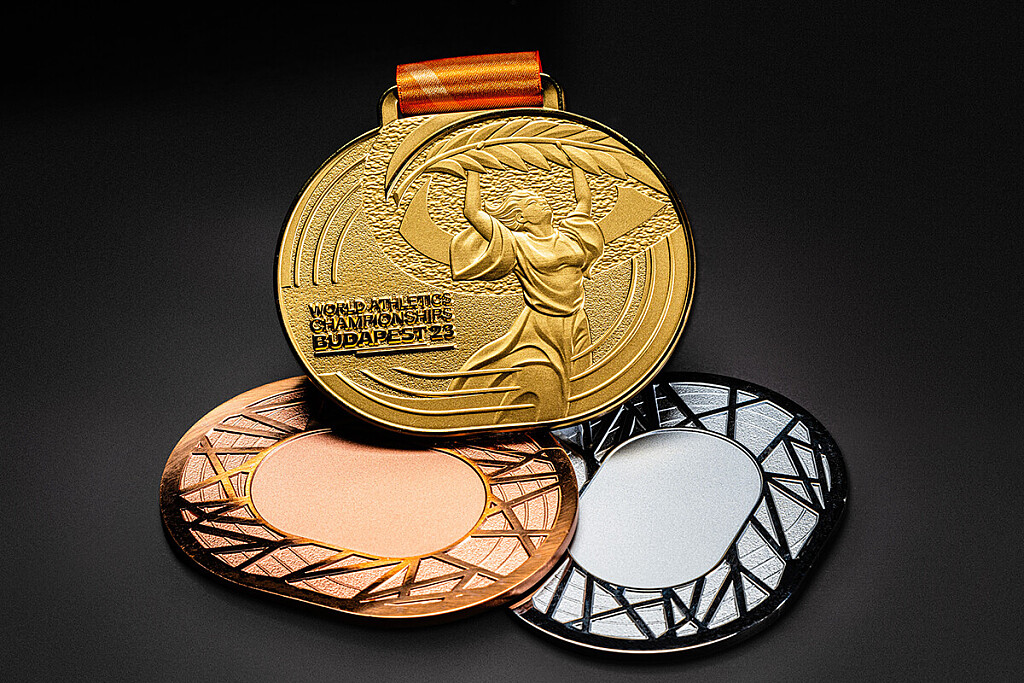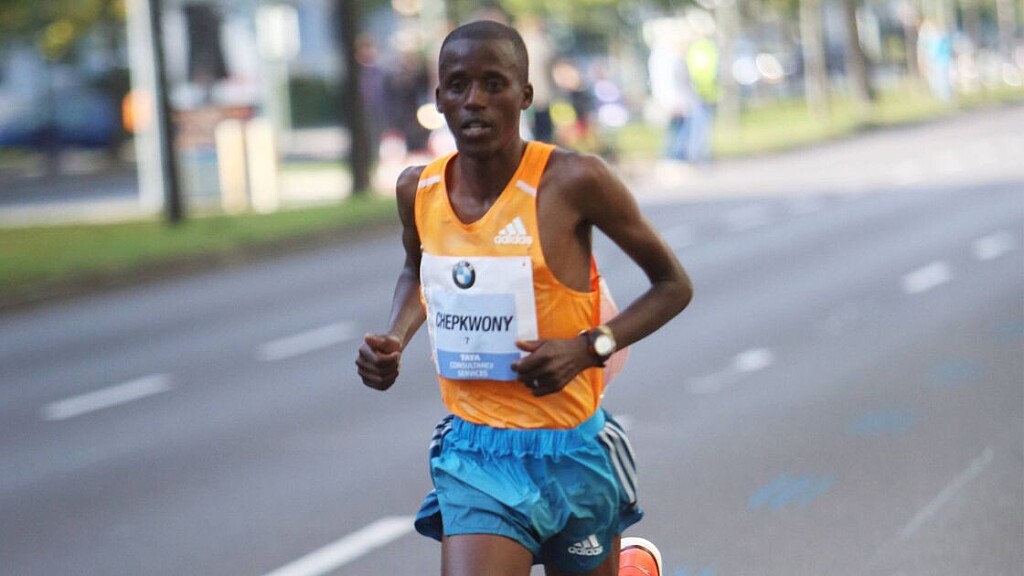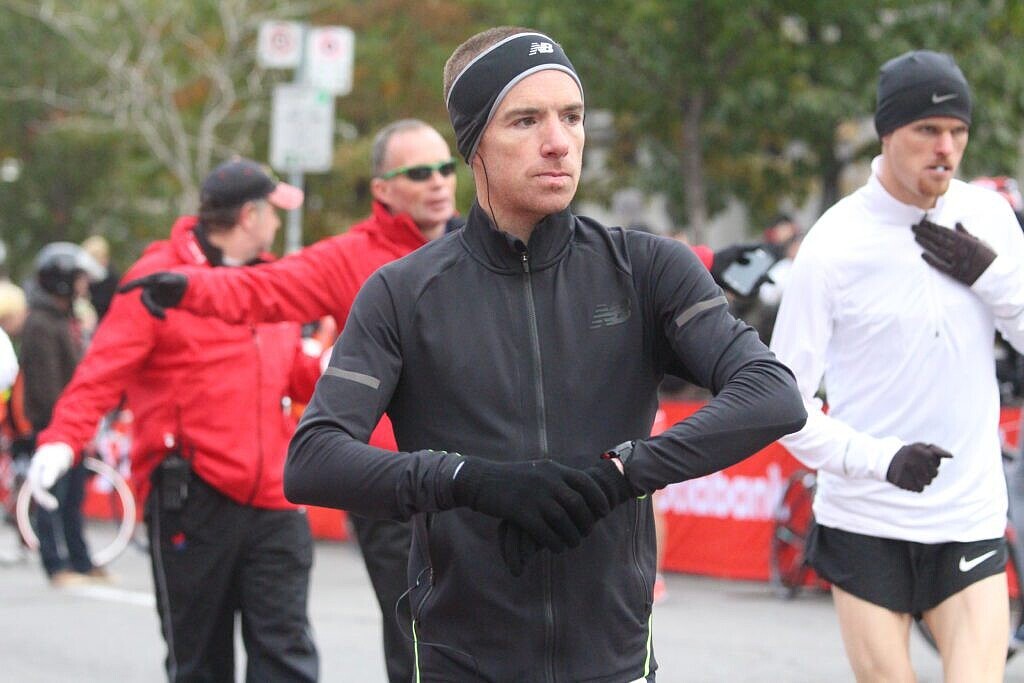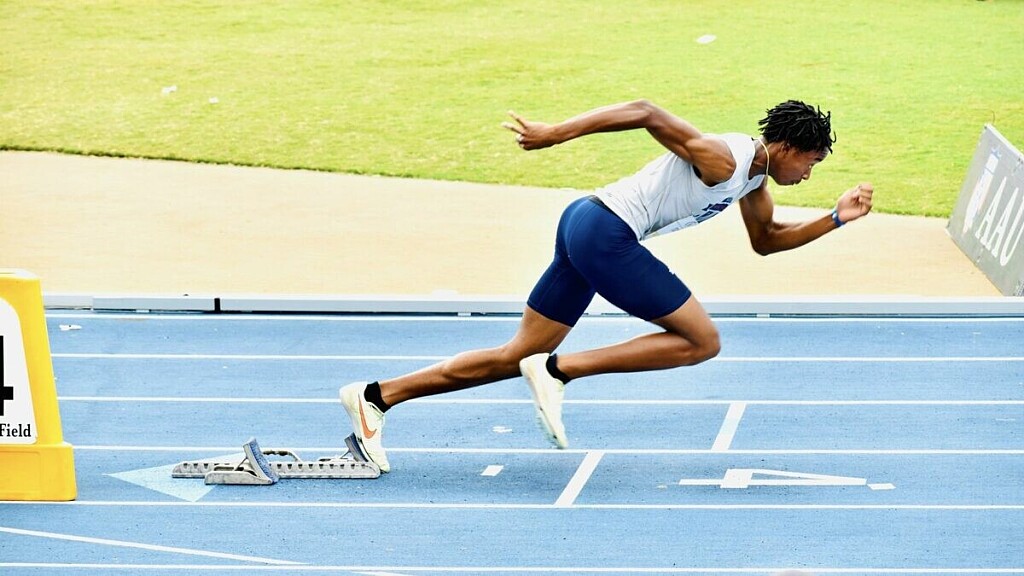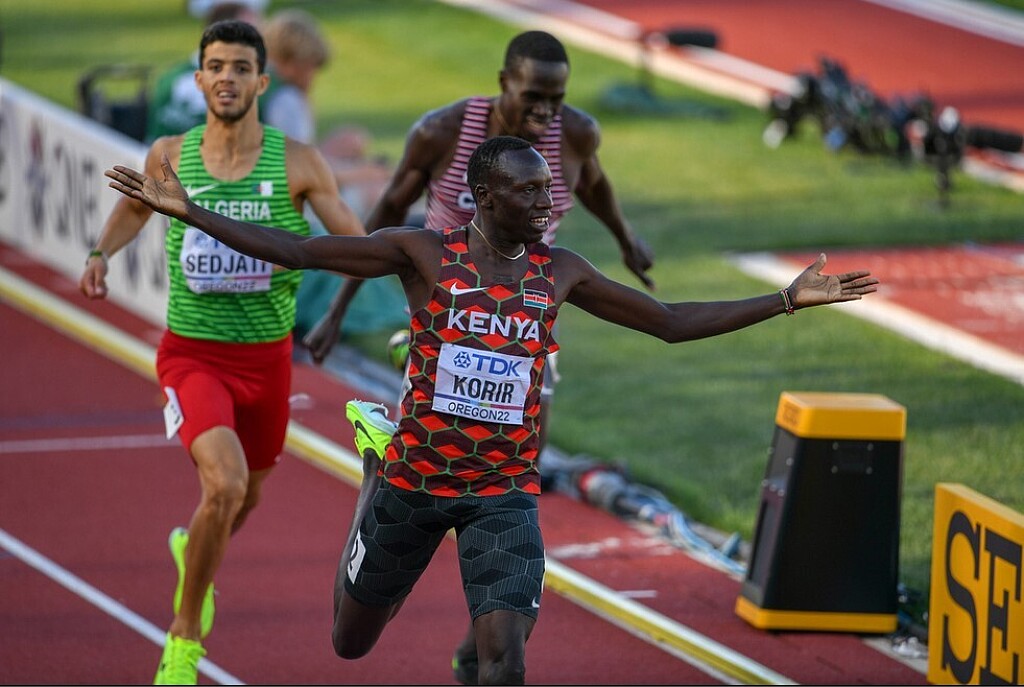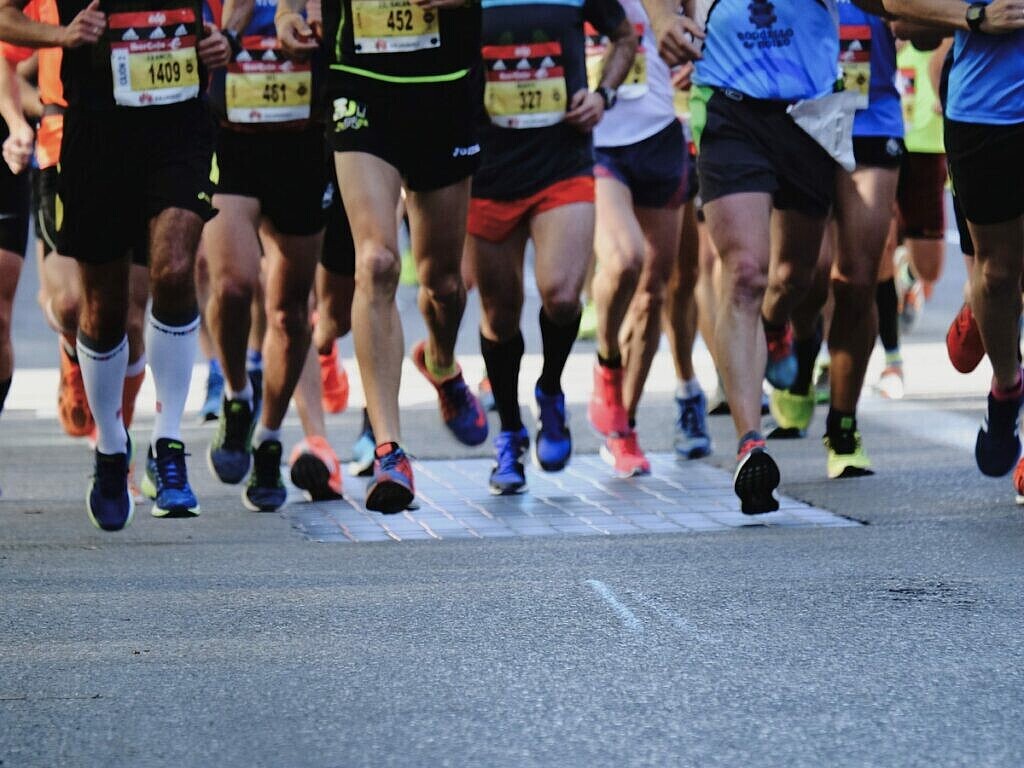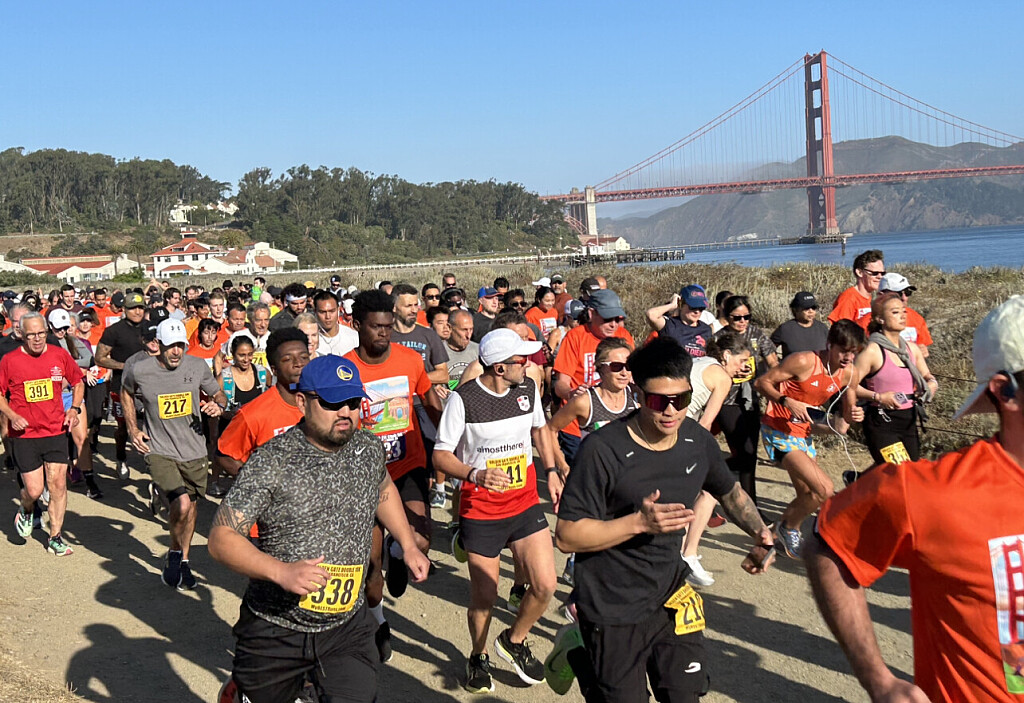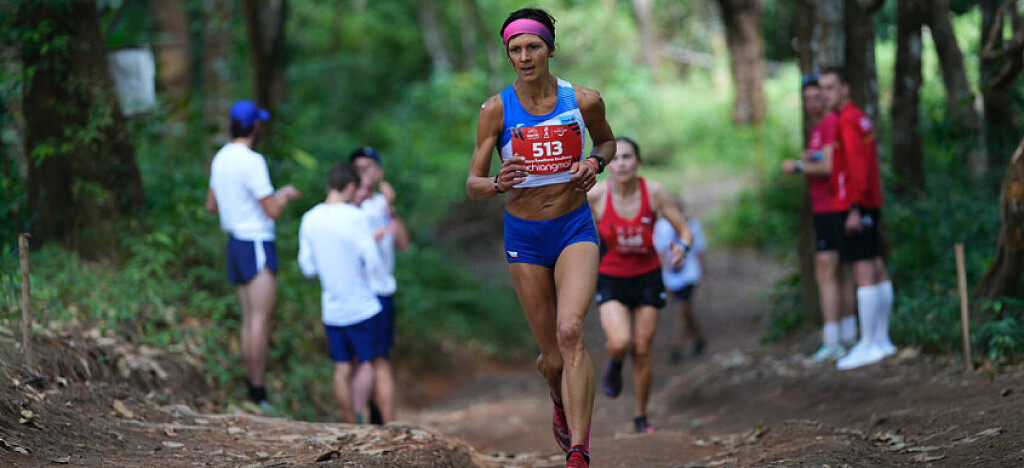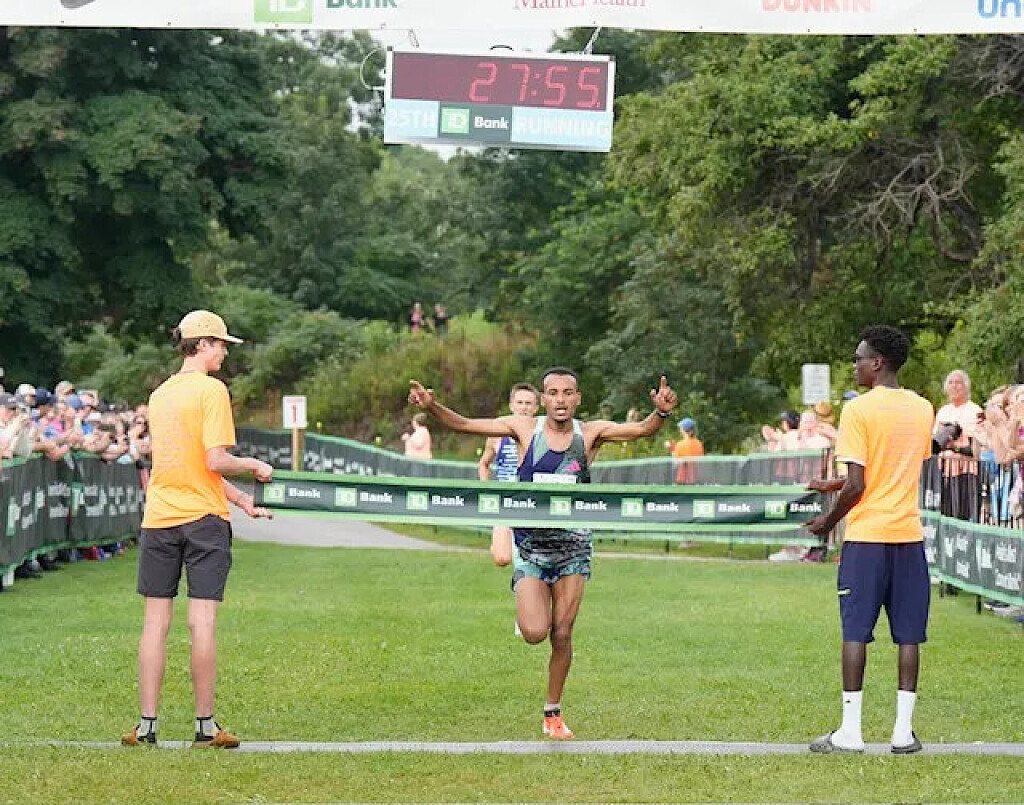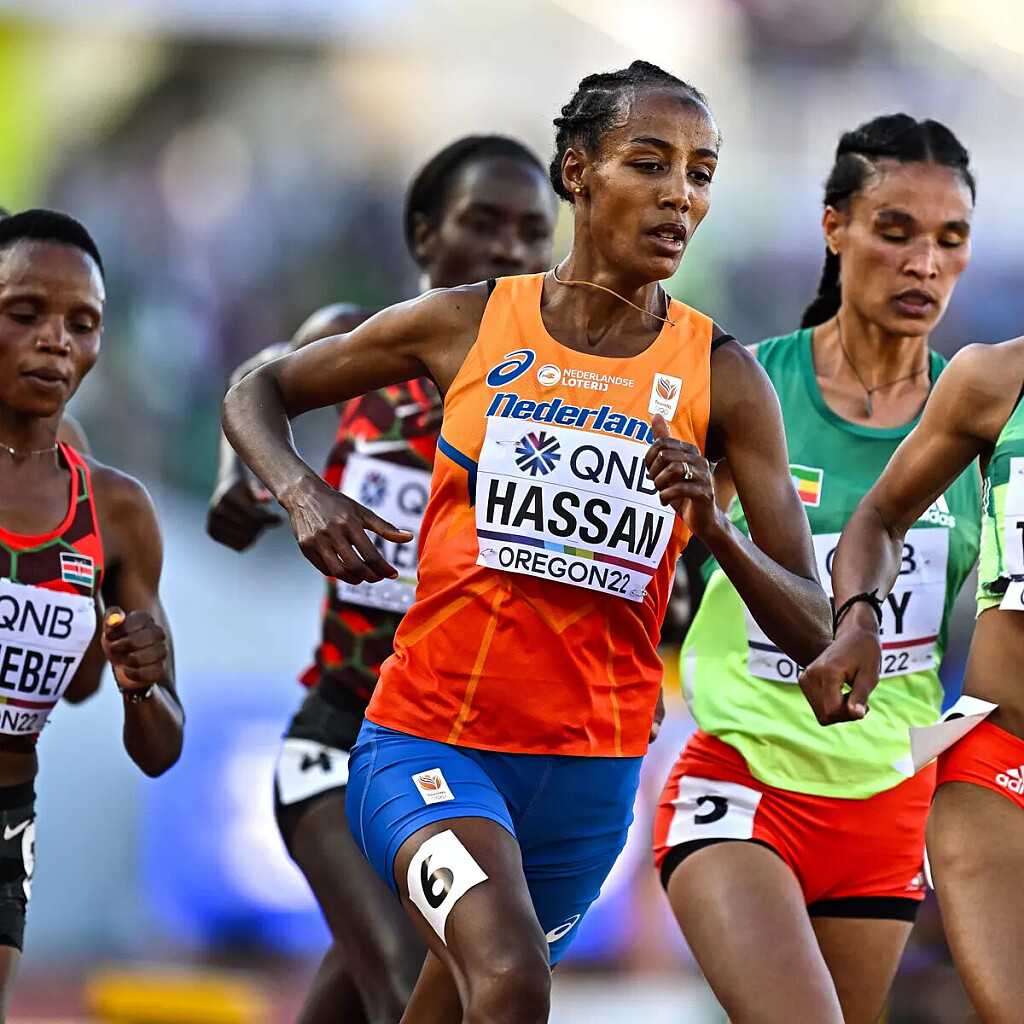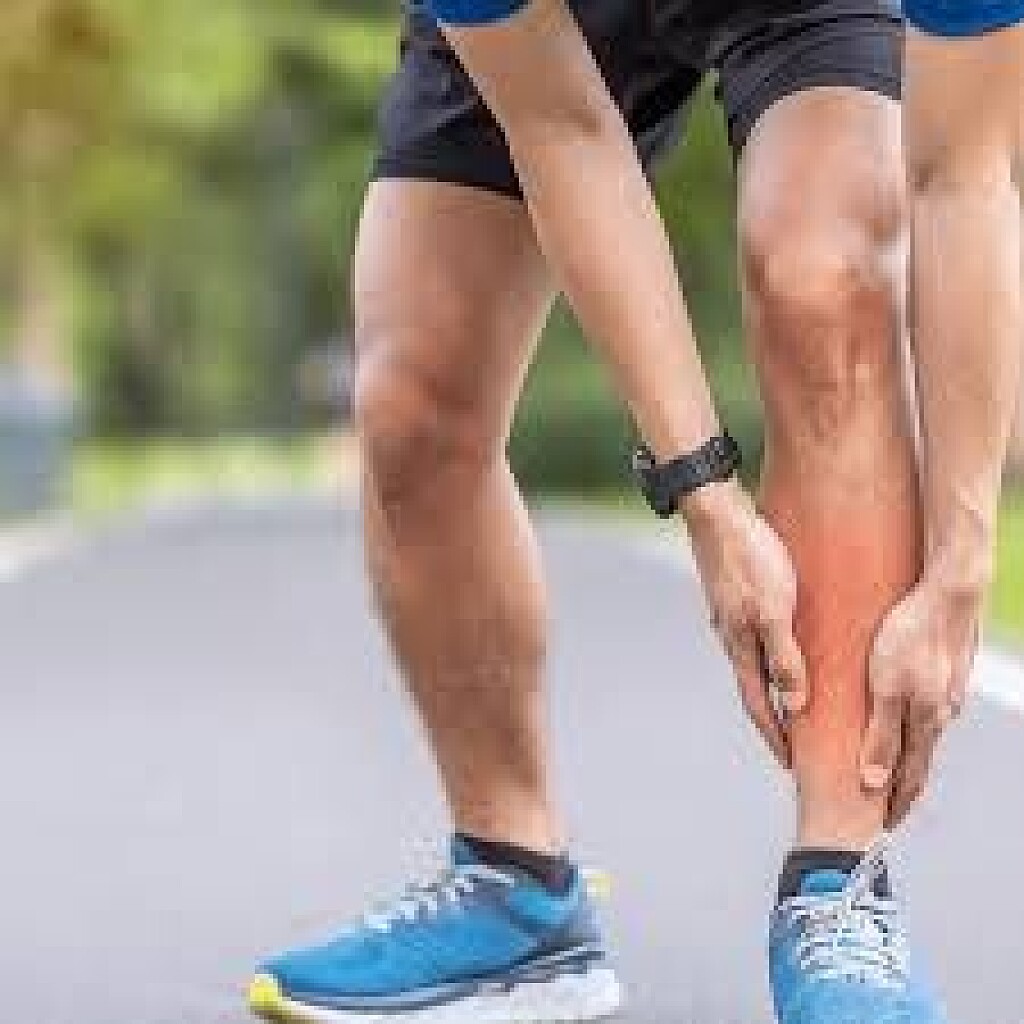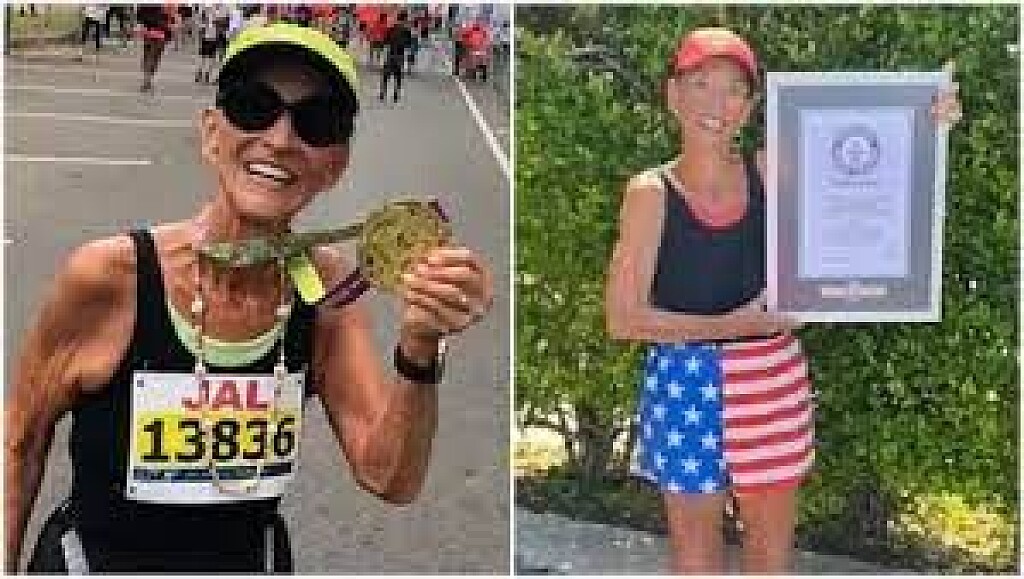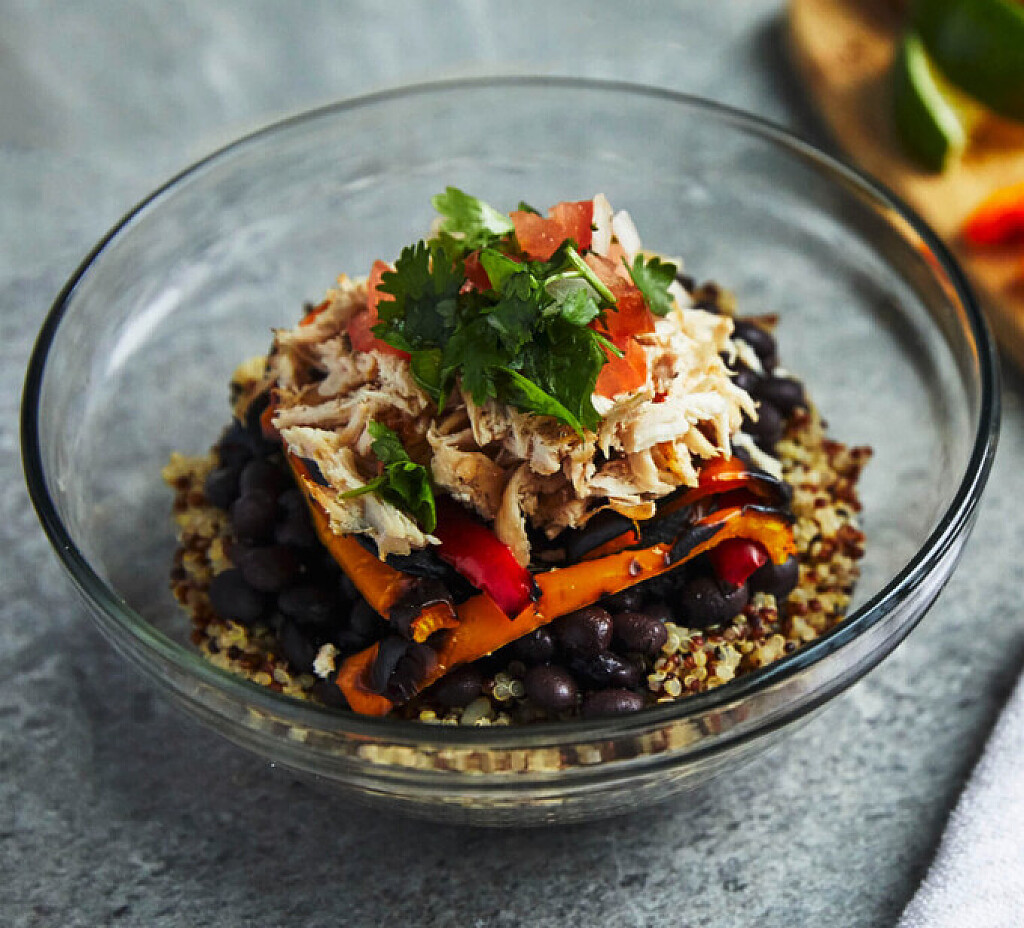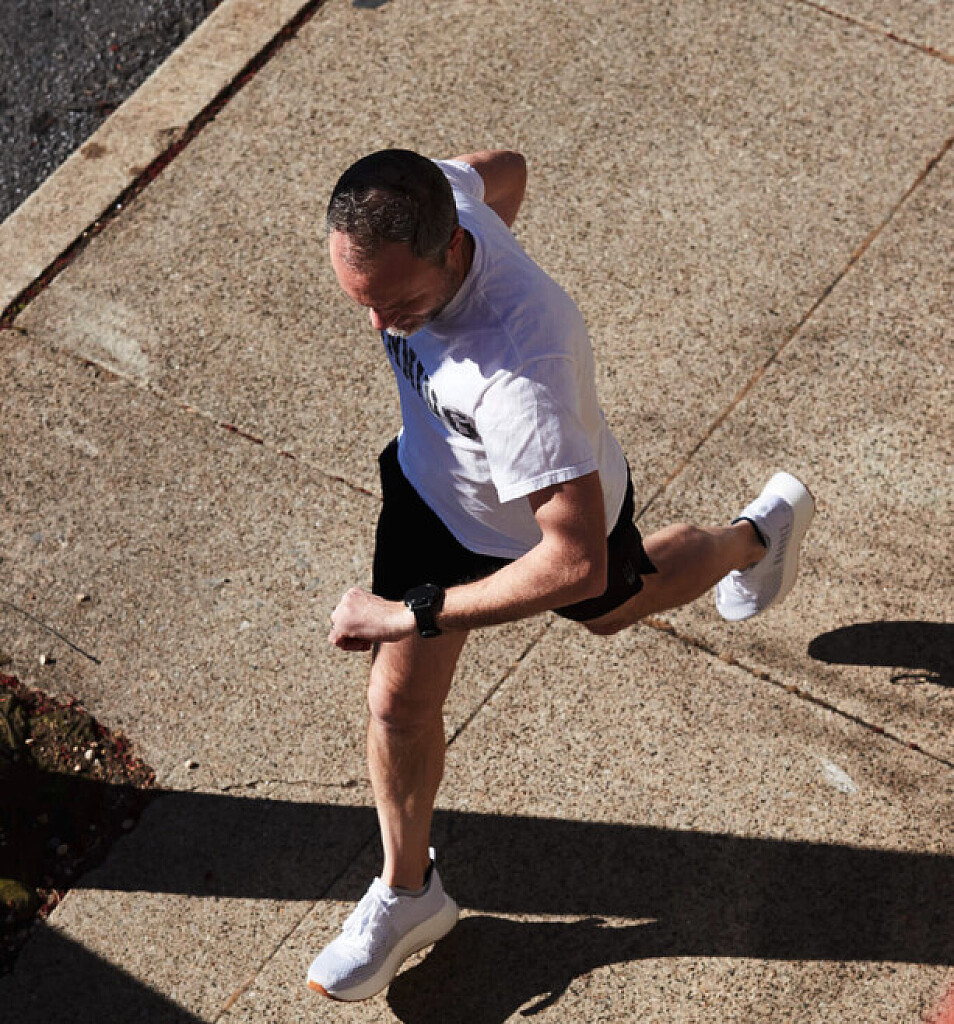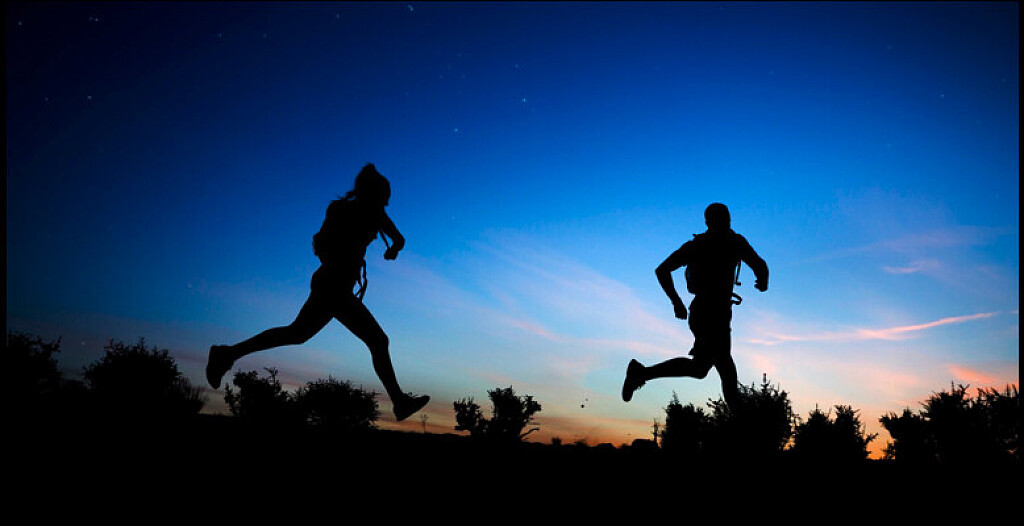Running News Daily
Running News Daily is edited by Bob Anderson in Mountain View, California USA and team in Thika Kenya, La Piedad Mexico, Bend Oregon, Chandler Arizona and Monforte da Beira Portugal. Send your news items to bob@mybestruns.com Advertising opportunities available. Over one million readers and growing. Train the Kenyan Way at KATA Running Retreat Kenya. (Kenyan Athletics Training Academy) in Thika Kenya. Opening in june 2024 KATA Running retreat Portugal. Learn more about Bob Anderson, MBR publisher and KATA director/owner, take a look at A Long Run the movie covering Bob's 50 race challenge.
Index to Daily Posts · Sign Up For Updates · Run The World Feed
Sore, tight calf muscles? Try these dynamic stretches
Anyone who has ever experienced tight, crampy calf muscles knows how extraordinarily painful they can be. While a wide range of issues (from electrolyte imbalances to problems with form) can cause the calf muscles to tighten up, there are a few tried-and-tested ways that ease suffering quickly and effectively. These moves work for anyone–whether you’re in the throes of calf pain or you’re inspired to take preventative action.
Not only does having loose, flexible calves feel better, but it fends off injury, reducing strain on tendons and muscles. It also helps you pick up the pace, allowing for a fuller range of motion and leading to better running mechanics and enhanced performance.

Try to move through these dynamic stretches in a controlled manner without any sudden or jerky movements, gradually increasing the intensity as your muscles warm up.
Calf raises

This one can be done on flat ground or on the edge of a stair or stool to deepen the stretch. Use a wall for support if needed. Stand with your feet hip-width apart and slowly rise onto your toes, lifting your heels as high as possible. Lower your heels back down to the ground, and repeat this movement 10 to 15 times. Use these as a warmup, or any time you want to give your calf muscles a healthy boost of blood flow and enhanced flexibility.
Seated calf stretch
Sit on the floor with your legs extended in front of you, and loop a towel or resistance band around the ball of one foot. Gently pull the towel or band towards you, flexing your ankle. You should feel a stretch along the calf muscle–hold for 20 to 30 seconds, then switch legs.
Downward dog calf stretch
Start in a push-up position (plank) with your hands directly under your shoulders, and push your hips up and back, forming an inverted V-shape with your body. Keep your knees slightly bent and press your heels toward the ground. You should feel the stretch in your calf muscles and hamstrings. Hold for 20 to 30 seconds, drop knees to the floor and relax before repeating.
Calf raises with stretch
Stand with your feet hip-width apart, near a wall or stable surface for support. Rise up onto your toes, lifting your heels as high as you can. Instead of lowering your heels immediately, hold this position for a few seconds or until you really feel the stretch in your calf muscles. Lower your heels back down to the ground, and repeat this movement 10 to 15 times.
Wall calf stretch
Stand facing a wall and take a step back with one leg. Keep your heels on the ground and your toes pointing toward the wall, and lean your hips forward slightly (bending your front knee slightly) to intensify the stretch. You should feel the stretch in the calf of the back leg. Hold for 20 to 30 seconds, then switch legs.
(08/15/2023) Views: 424 ⚡AMPby Keeley Milne
National top athletes will also participate in the BMW BERLIN-MARATHON 2023
This year's BMW BERLIN-MARATHON will take place on September 24 - the sports event is one of the most prestigious marathons in the world. SCC EVENTS, the organizer of the event, is expecting more than 45,000 runners from about 150 nations. In addition to the huge field of amateur athletes, the top international as well as national athletes will be competing.
As already announced in the press release sent out by SCC EVENTS on July 13, 2023, the world record holder Eliud Kipchoge (KEN) and the winner of the TCS London Marathon 2022, Amos Kipruto (KEN), will be at the start in the German capital. With Tigst Assefa (ETH) as course record holder and winner of the BMW BERLIN-MARATHON 2022 and Sheila Chepkirui, winner of the GENERALI BERLIN HALF MARATHON 2022, the women's field is just as elite.
The German record holder will be competing
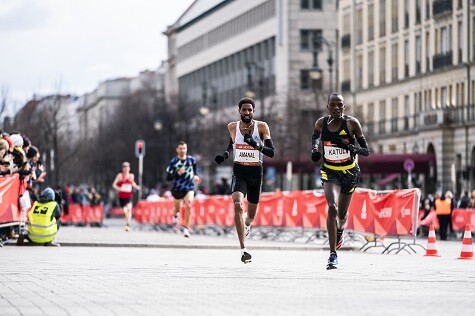
From the ranks of the German starters, Amanal Petros should be the first to be mentioned. The winner of this year's Hannover Marathon holds the German records for both the marathon and half-marathon distances. The MARATHON TEAM BERLIN runner is certainly hoping to achieve a German best time at his race on September 24. At the 2022 European Athletics Championships, Petros won the silver medal in the marathon team classification.
Top German men in Berlin
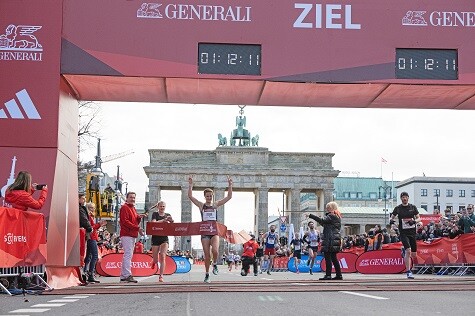
Amanal Petros stood beside teammates Simon Boch, Konstantin Wedel as well as Hendrik Pfeiffer on the podium in the aforementioned European Championship silver-medal team. All four will be competing at the BMW BERLIN-MARATHON. Simon Boch (LG Telis Finanz Regensburg) was German runner-up in the half marathon in the spring and secured the German team title for his team with this performance. Hendrik Pfeiffer, who competes for TK Hannover, won the Hannover Marathon last year. And just like his competition, the 30-year-old is hoping to use the race in Berlin to qualify for the Olympic Games in Paris.
European marathon champions at the start
The German women's marathon team was even more successful than the men at the 2022 European Athletics Championships. With the line-up of Miriam Dattke, Domenika Mayer (both LG Telis Finanz Regensburg), Deborah and Rabea Schöneborn (both MARATHON TEAM BERLIN) and Kristina Hendel (LG Braunschweig), they won the gold medal. The mentioned European champions will run at the BMW BERLIN-MARATHON. For the women, too, the race in Berlin is considered to be an important milestone to make it to the 2024 Olympic Games.
Partnerships with great added value
For the BMW BERLIN-MARATHON 2023, SCC EVENTS announced NORQAIN as its new timing partner. NORQAIN is familiar as a high-quality, family-owned watch manufacturer. The company is based in Nidau, the heart of the Swiss chronograph industry. Christian Jost, Managing Director of SCC EVENTS, is delighted about the commitment of the traditional Swiss watch manufacturer: "Reliability is one of our core values in the mission statement of SCC EVENTS. With NORQAIN, the BMW BERLIN-MARATHON gains a partner whose recipe for success is based on reliability and quality. This partnership has a great added value for us as organiser and for all the participants, who always expect a spirit of innovation and a reliably high standard from the BMW BERLIN-MARATHON."
"As a brand deeply rooted in the world of adventure and exploration, we are thrilled to embark on this multi-year partnership with the BMW BERLIN-MARATHON", said Ben Küffer, Founder & CEO of NORQAIN. "We are honoured to be the Official Timekeeper of the BMW BERLIN-MARATHON, an iconic event that embodies the values of perseverance, determination, and the pursuit of excellence, which are at the core of NORQAIN's DNA.”
The cashless online payment system PayPal has also been one of the partners of the BMW BERLIN-MARATHON for some time. "Anyone competing at the BMW BERLIN-MARATHON is expecting a high-quality sports experience. A fast, simple and secure payment system makes it easier for runners be able to focus on the essential aspects of the event," says Christian Jost.
"We are very happy about the renewed cooperation with SCC EVENTS. Whether at registration, beverage stands or after the race: For easy and convenient payments during the event, runners can pay with the PayPal app using a QR code Athletes can leave cash or cards at home," explains Jörg Kablitz, Managing Director of PayPal Germany, Austria and Switzerland.
Options to secure race entries possibilities and media accreditation
Although registration to participate in the race entry lottery for the 49th BMW BERLIN-MARATHON is now closed, there are still opportunities to secure a race entry for the BMW BERLIN-MARATHON 2023: through our charity partners and our official travel agents. Registration is still open for inline skaters. To apply for accreditation for the BMW BERLIN-MARATHON 2023, you must send a request via the press portal on our website, which is now possible.
(08/15/2023) Views: 463 ⚡AMPBMW Berlin Marathon
The story of the BERLIN-MARATHON is a story of the development of road running. When the first BERLIN-MARATHON was started on 13th October 1974 on a minor road next to the stadium of the organisers‘ club SC Charlottenburg Berlin 286 athletes had entered. The first winners were runners from Berlin: Günter Hallas (2:44:53), who still runs the BERLIN-MARATHON today, and...
more...Norwegian kid runs ridiculously fast 5K
A 15-minute 5K is considered an exceptional mark in men’s distance running that many sub-elites dream of breaking (and that would include 15 minutes and change). On Aug. 10 at the Recordløpet 5K in Drammen, Norway, 13-year-old Per August Halle Haugen did just that, stopping the clock in 15 minutes and 52 seconds to place second overall.
The achievement stands as a remarkable step forward for Halle Haugen, who, in line with expectations, seems to be flourishing as he gets older, trimming 21 seconds off his previous 5K personal best of 16:13 from 2022.
Last year, Halle Haugen ran the second-fastest time ever for a 12-year-old male for 10K, clocking a mind-blowing best of 33:18 (3:20/km).
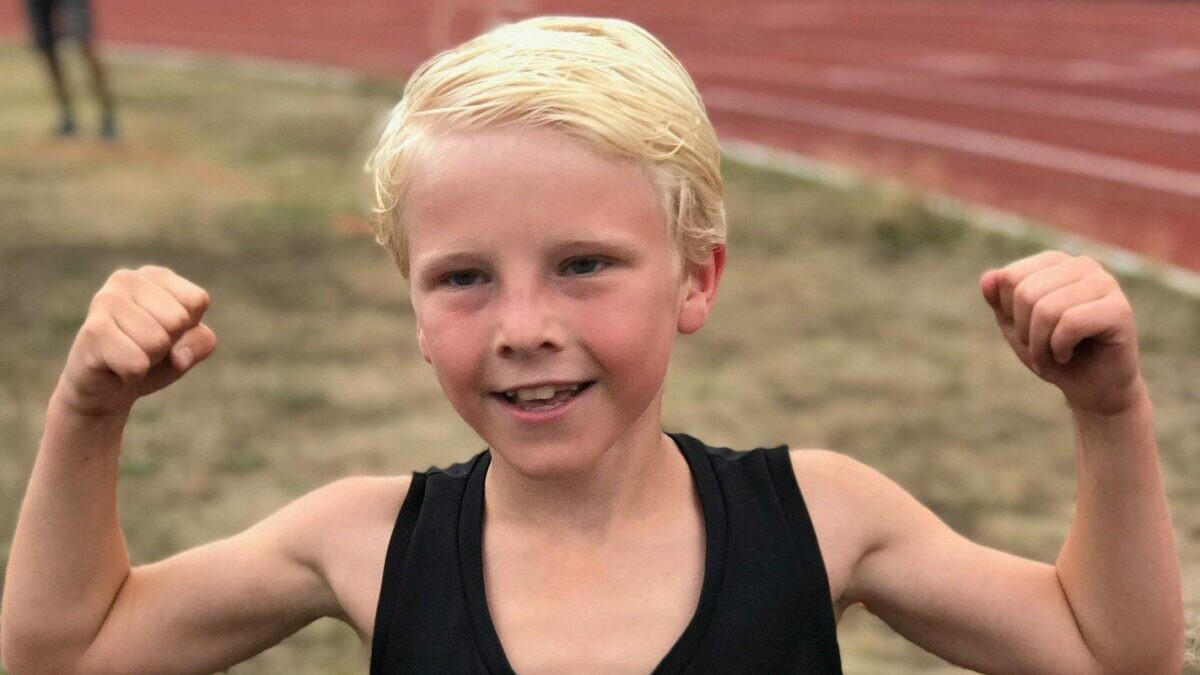
According to Norges Friidrettsforbund (Norway’s governing body for athletics), there are no age-specific rewards or competitions for children under the age of 13, so Halle Haugen participates in local road races.
Halle Haugen is endowed with a strong genetic inclination for distance running: his grandfather, Per Halle Haugen, represented Norway in the sport 40 years ago, achieving a time of 13 minutes and 27 seconds in the 5,000m. His mother and coach, Gunhild Halle Haugen, boasts personal bests of 15:09 for 5,000m and 31:47 for 10,000m. His older brother Simen, born in 1999, ran a time of 13 minutes, 37 seconds for 5,000m last year.
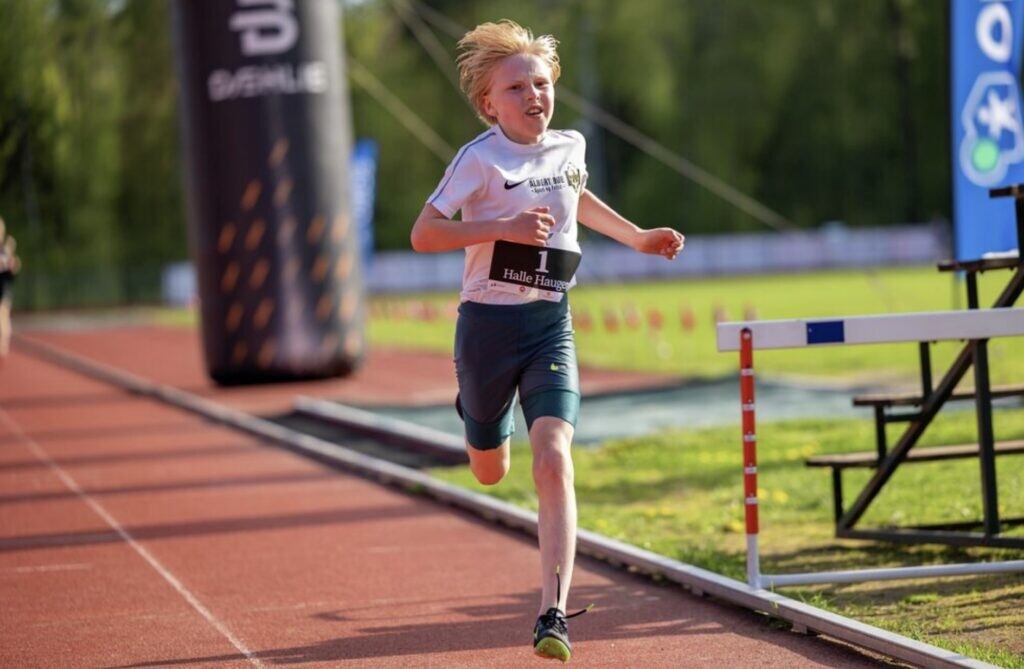
Halle Haugen’s time is still 20 seconds off the U13 age-group 5K world record; nevertheless, he undoubtedly holds a promising future, sharing a trajectory similar to the achievements of his compatriot Jakob Ingebrigtsen, who is widely regarded as the most prolific Norwegian distance runner in history. Ingebrigtsen began competing on the track at age 14 and recorded a 2,000m time of 5:52.50. Halle Haugen’s best over the same distance is 6:02.
(08/15/2023) Views: 574 ⚡AMPby Marley Dickinson
World Athletics Championships Budapest 23 preview: marathon
In Oregon last year, Tamirat Tola ran his way into the World Championships history books with the fastest ever winning time in the men’s marathon: 2:05:36. Thirteen months on, the 31-year-old Ethiopian has the chance to add his name to the select band of marathon men to manage a successful title defence.
Only three have achieved the feat thus far: Spain’s Abel Anton (1997, 1999), Jaouad Gharib of Morocco (2003, 2005) and the Kenyan whose championship record Tola broke in Oregon, Abel Kirui (2009, 2011).
Tola was a class apart in 2022, the 2016 Olympic 10,000m bronze medallist showing his track pedigree as he blitzed the final 10km circuit in 28:31 to finish a decisive 1:08 clear of compatriot Mosinet Gerenew, also the silver medallist in Doha in 2019.
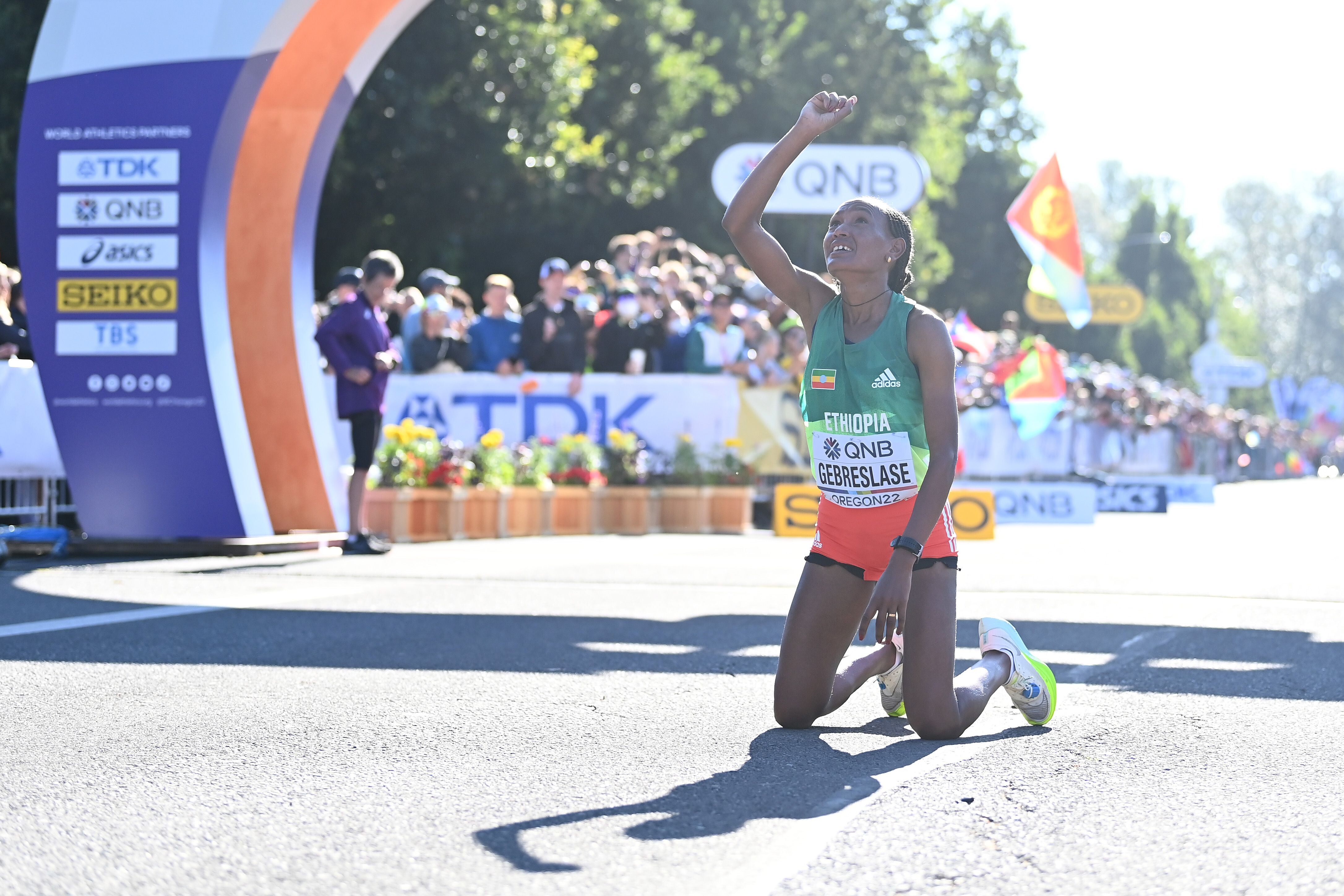
Tola, who was the marathon runner-up at the 2017 World Championships, has maintained his form this year, finishing third at the London Marathon in April in 2:04:59, behind Kelvin Kuptum (2:01:25) and Geoffrey Kamworor (2:04:23).
Neither of those two Kenyans will be on the start line in Budapest, but the defending champion will face two rivals from Kenya who have run faster than him in 2023. Timothy Kiplagat stands third on the world list with the 2:03:50 he clocked as runner-up to Belgium’s Bashir Abdi in Rotterdam in April. Abdi, the bronze medallist in Eugene, will be absent in Budapest but Kiplagat will be joined on the Kenyan team by Joshua Belet, runner-up at the Hamburg Marathon in April in 2:04:33. The third Kenyan in the field is Titus Kipruto, fourth at this year’s Tokyo Marathon in 2:05:32, who set a PB of 2:04:54 as runner-up in Amsterdam last year.
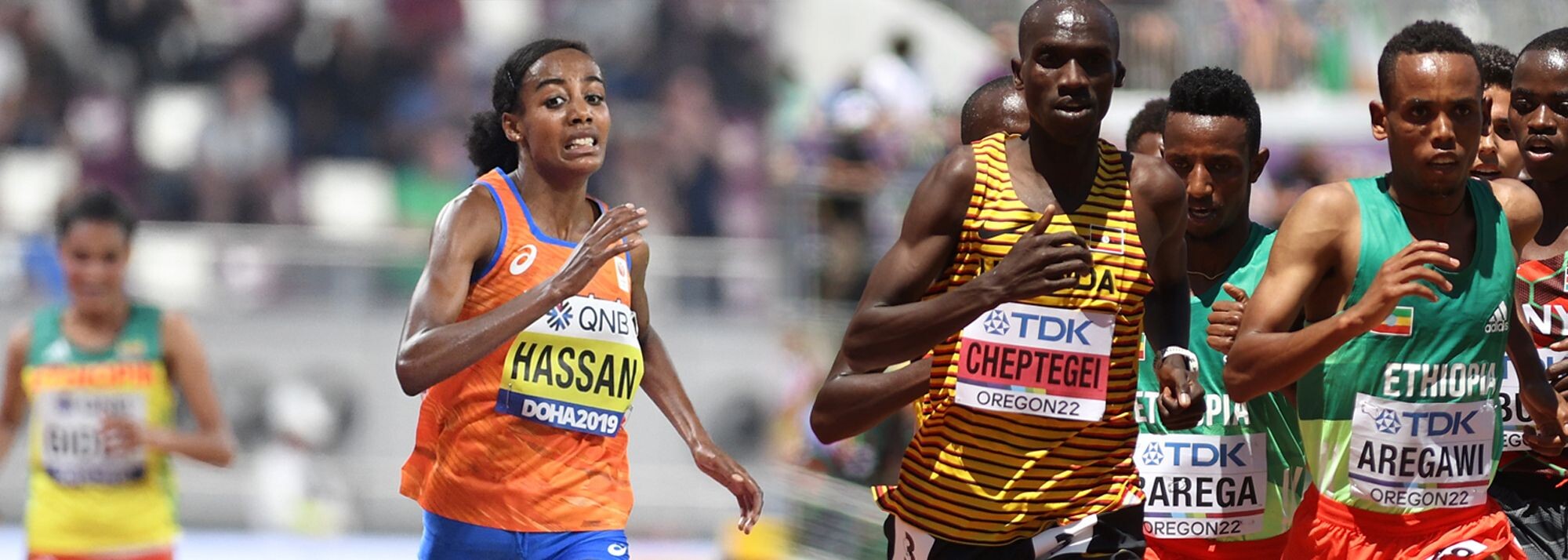
Ethiopians have finished first and second at the last two World Championships and Tola will have notable support in Budapest. Milkesa Mengesha, the 2019 world U20 cross-country champion, won the Daegu Marathon in April and clocked a best of 2:05:29 in Valencia last December. Chalu Deso won in Tokyo in March in 2:05:22. Leul Gebresilasie finished second and fourth at the last two London Marathons and has a best of 2:05:12. Tsegaye Getachew placed third in Tokyo in April in 2:05:25.
Not that the race looks like being an exclusive battle between the two established East African giants of distance running.
Abdi Nageeye of the Netherlands was runner-up to Eliud Kipchoge in the 2021 Olympic marathon in Sapporo. The 34-year-old finished third in New York last November and in Rotterdam in April.
Tanzania’s Alphonce Felix Simbu is a seasoned major championship marathon campaigner. The 31-year-old earned world bronze in London in 2017 and Commonwealth silver in Birmingham last year. He also finished fifth and seventh in the last two Olympic marathons.
Commonwealth champion Victor Kaplangat is joined on the Ugandan team by Stephen Kissa, who set a national record of 2:04:48 in Hamburg last year. Morocco’s Mohamed Reda El Aarby placed second in New York in 2021 and fourth last year.
There are a host of other sub-2:06 performers in the field: Israel’s European bronze medallist Gashu Ayale, Kaan Kigen Ozbilen of Turkey, Eritreans Goitom Kifle and Oqbe Kibrom, plus the Japanese duo Kenya Sonota and Ichitaka Yamashita.
Ayale’s Israeli teammate Marum Terifi is the second-highest placed runner from last year’s race on the entry list. He finished 11th in Oregon and then took silver at the European Championships in Munich.
Veteran Spaniard Ayam Lamdassem was sixth in Munich but fifth at global level in the Olympic marathon in 2021. Another 41-year-old on the start line will be the remarkable Ser-od Bat-Ochir. The Mongolian is unlikely to be troubling the medal contenders but will be contesting his 11th successive World Championships marathon – his 16th successive global championship marathon, having also contested the past five Olympic marathons.
Women's marathon
In Oregon last year Gotytom Gebreslase won in the fastest ever time in a women’s championship marathon, 2:18:11, but the Ethiopian will have to beat two of the six fastest women of all time if she is to successfully defend her title in Budapest.
The 2011 world U18 3000m champion was unable to keep up with one of them on the rolling hills of Boston in April, finishing 10th in her only marathon of the year in 2:24:34 – eight places and 2:44 behind compatriot Amane Beriso Shankule, who was runner-up to two-time world champion Hellen Obiri.
At 31, the formerly injury-plagued Beriso produced a stunning performance in Valencia in December last year, upsetting world 10,000m champion Letesenbet Gidey’s world record attempt with a victory in 2:14:58, putting her third on the world all-time list behind Kenyans Brigid Kosgei (2:14:04) and Ruth Chepngetich (2:14:18).
Gebreslase will also have to contend with Rosemary Wanjiru, who moved above Gidey to sixth on the world all-time list with a winning time of 2:16:28 in Tokyo in March. The 28-year-old Kenyan, fourth in the world 10,000m final in Doha in 2019, clocked one of the fastest marathon debuts in history, 2:18:00, as runner-up to Ethiopia’s Tigist Assefa in Berlin last year.
In addition to Gebreslase, five other finishers from the top 10 in Oregon last year will be on the start line: bronze medallist Lonah Salpeter from Israel and fourth-placed Nazret Weldu of Eritrea, plus Keira D’Amato of the US (eighth), Japan’s Mizuki Matsuda (ninth) and Mexico’s Citiali Moscote (10th).
The loaded field also includes the second-fastest woman of 2023, Ethiopia’s Tsehay Gemechu, the runner-up to Wanjiru in Tokyo in 2:16:56, who finished fourth in the 5000m in Doha in 2019, and Bahrain’s 2017 marathon world champion Rose Chelimo.
The Ethiopian challenge will be strengthened by world 10km record-holder Yalemzerf Yehualaw, who ran 2:17:23 on her marathon debut last year then won in London later in 2022 before finishing fifth at this year’s edition of the race. Wanjiru, meanwhile, is joined on the Kenyan team by 2014 world half marathon bronze medallist Selly Kaptich, who was third in Berlin in 2019, and Shyline Jepkorir, a winner in Enschede in April in 2:22:45.
At 36, the veteran Kaptich is four years younger than Australia’s two-time Commonwealth medallist Lisa Weightman, who showed her enduring class with 2:23:15 for fourth place in Osaka in February.
Another notable entrant is Poland’s Aleksandra Lisowska, who broke away in the final 2km to win the European title in Munich 12 months ago.
Bat-Ochir made his world debut in Paris back in 2003 and boasts a highest placing of 19th in Daegu in 2011. He finished 26th in Oregon last year, his second-best global performance. His appearance in Budapest will match Portuguese race walker Joao Viera’s tally of 11 – two shy of Spanish race walker Jesus Angel Garcia’s record.
(08/14/2023) Views: 433 ⚡AMPby World Athletics
World Athletics Championships Budapest 23
From August 19-27, 2023, Budapest will host the world's third largest sporting event, the World Athletics Championships. It is the largest sporting event in the history of Hungary, attended by athletes from more than 200 countries, whose news will reach more than one billion people. Athletics is the foundation of all sports. It represents strength, speed, dexterity and endurance, the...
more...Tasmanian 69-year-old, Michael Booth runs 100th marathon
To run just one marathon is a massive achievement for most people — Launceston's Michael Booth has just finished his 100th.
The 69-year-old hit the milestone when he crossed the finish line at the Sunshine Coast Marathon in Queensland on Sunday, finishing in a time of just under four and a half hours.
"It's quite momentous," he said.
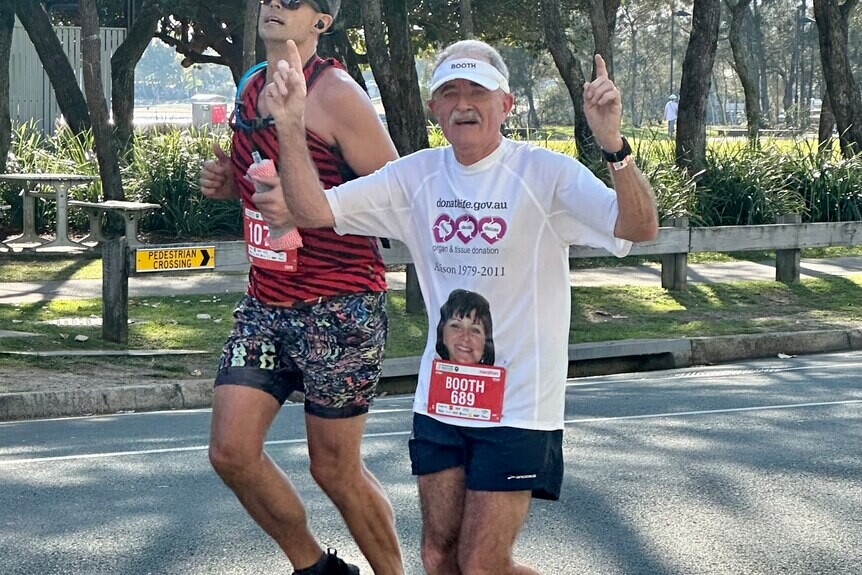
"I never started off running marathons thinking that I'd reach a certain number. I just did it because I enjoyed running.
"As I got into the 80s I could see a finish line up over the horizon, but it still wasn't necessarily a goal. I just kept running because I enjoyed it.
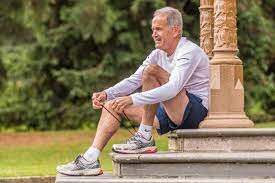
"As I got closer into the 90s, I thought, 'Gee I'm going to do 100.'"
It was a massive effort, but a low-key celebration for the Riverside grandfather.
"Chocolate milkshake and a nice lunch … I don't drink alcohol so I don't go down that path," he said.
His son Steven and wife Christine were on the course to cheer him on around the multi-lap course on the Sunshine Coast.
"They were having breakfast at a cafe along the track and cheered me on each time I passed," Mr Booth said.
Mr Booth only took up running in 2002 when he was 48, but was quickly hooked. It all started when the retired accountant went for a run with his brother.
"Running up and down Cormiston Road in Riverside with my brother 20 years ago, I wasn't even sure I was going to continue running," he said.
"It felt good and I just kept going."
It is now a part of his life and he has got has some significant running achievements under his belt.
Mr Booth has run the 42-kilometer marathon distance in every Australian state and territory, and also on each continent.
He ran his first marathon in Hobart in 2003 and has since taken his running exploits around the world.
Among the 100 races he has completed are the Boston, Athens, Rio de Janeiro and Great Wall of China marathons.
In 2014 he even took on a marathon in Antarctica. He believes he is the first Tasmanian to do so.
He has now competed in 10 out of 11 Sunshine Coast marathons, and 20 Hobart Cadbury marathons. And the iconic Overland Track in Tasmania is among his favorite runs.
He has taken on many of Tasmania's most well-known running challenges: the Three Peaks, Freycinet Challenge, Triple Top and Point to Pinnacle.
Earlier this year he took his total running distance to 50,000 kilometers.
No plan to stop just yet
Mr Booth also uses marathons to promote organ donation and Donate Life.
He often runs in a shirt featuring an image of his daughter Alison, who died in 2011.
"Alison back in 2011, she was 32, she suffered a brain bleed and our son-in-law Mark wanted to donate her organs and we fully endorsed that," he said.
"Four or five recipients were able to lead lives of better quality due to Alison's donation.
"Even though we lost a dear daughter there was a positive that we've enriched other people's lives. There's no point in burying organs that are in perfect working order."
Despite reaching the impressive milestone, which has been decades in the making, he has no plans to slow down.
"I propose to continue running for the next few years," he said.
"[I'll] see how I go … I think I've got to be more realistic and lower my finishing-time expectations as I'm getting older."
He runs four times a week and has his sights set on the Hobart Cadbury Marathon in January.
"I'll just bow out at some point when my body says, 'Hey Michael, I think we've had enough.'"
Before that, he is aiming to run a marathon with both his son and grandson.
He hopes his running exploits inspire others.
(08/14/2023) Views: 454 ⚡AMPby Damian McIntyre
Coach Kirwa believes Kipkirui will step into Kandie's shoes
National team head coach Julius Kirwa has exuded confidence in Ishmael Kipkurui's potential to effectively step into the shoes of Kibiwott Kandie at the upcoming 2023 World Athletics Championships.
Kandie, who had punched a ticket to fly the country's flag in the 5000m, withdrew from the team owing to a nagging hamstring injury.
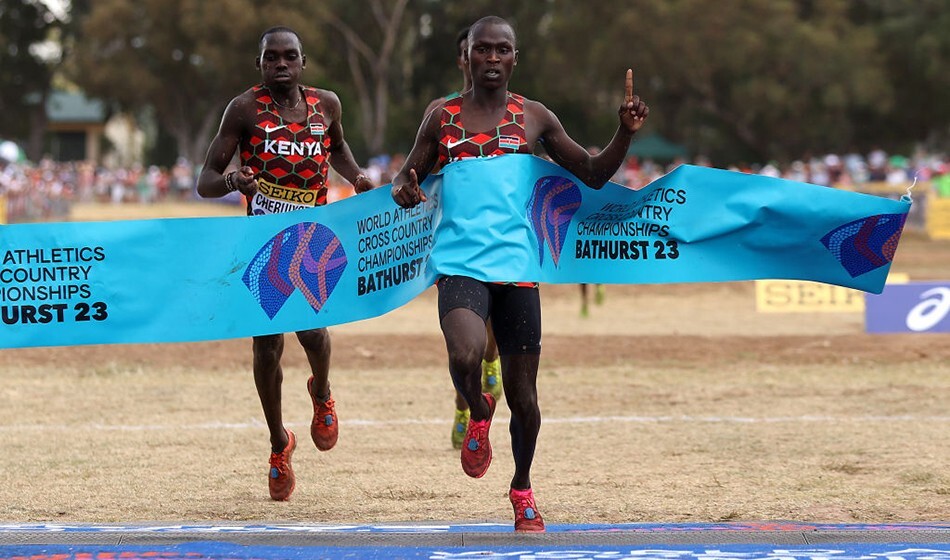
"We made the changes last week. Ishmael is in good form and he has proved himself as a junior athlete. I'm confident he'll live up to expectations," Kirwa said in an exclusive interview on Thursday.
The Commonwealth Games 10,000 metres bronze medallist will miss the World Championships for the second time in a row after staying out of Oregon 22.
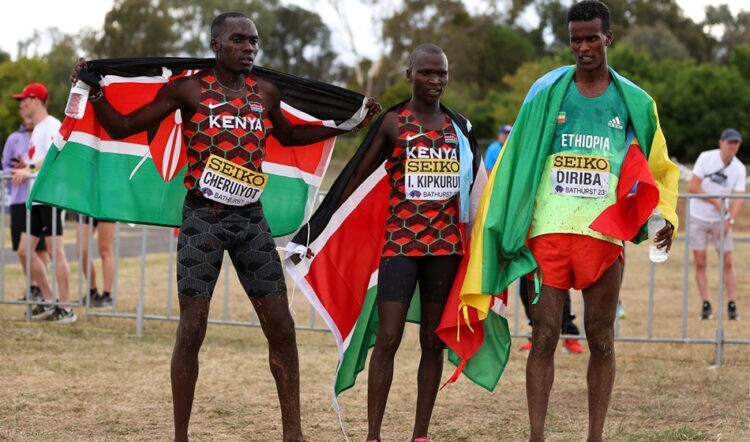
Last year, the World Half Marathon silver medallist, almost sealed a slot on the Kenyan plane to Oregon after clinching the national trials but failed to crack the qualifying time.
He last held forte for the nation at the 44th World Athletics Cross Country Championships in Bathurst, Australia where he finished fifth. His most recent race was in Germany in April during the Adizero Road to Records 10km race, where he finished second in 26:53.
He secured a berth in the men’s 10,000m team despite finishing fourth during the national trials.
“I was in camp for a week when the team reported and training was going on well. I tried to persevere for some days while training but there was no change hence the break to avoid worsening it," said Kandie.
While regretting the unfortunate turn of events, Kandie vowed to bounce back stronger at the World Half Marathon Championships that will be held in Riga, Latvia on October 1.
“I know a lot of people are disappointed I'll not be traveling with the rest of the team to Budapest, especially after I experienced a similar fate last year when I also failed to make it to Oregon," Kandie stated.
Meanwhile, Kirwa has said he is satisfied with the amount of effort expended in practice even as the team continues to put the final touches ahead of their departure to the Hungarian capital.
"We have trained well enough and all the athletes are in good shape. We are expecting a good performance in Budapest later in the month," Kirwa said.
The seasoned gaffer also tipped Kenyan sprint sensation Ferdinand Omanyala to steer the country to unprecedented glory.
"He is in his peak this season and I have no doubt in my mind he'll be pulling off a major surprise at the World Championships," Kirwa said.
(08/14/2023) Views: 409 ⚡AMPby Tony Mballa
World Athletics Championships Budapest 23
From August 19-27, 2023, Budapest will host the world's third largest sporting event, the World Athletics Championships. It is the largest sporting event in the history of Hungary, attended by athletes from more than 200 countries, whose news will reach more than one billion people. Athletics is the foundation of all sports. It represents strength, speed, dexterity and endurance, the...
more...Three exercises to ease back pain in runners
A sore back can be a discouraging thing to face as a runner–while you’d love to get out and log some miles, recurrent back pain can be extremely limiting. The jury is out on what, exactly, gives runners achy backs, and it’s probably unique to each person. Maybe you had back issues before you began running, you’re struggling with running form, or you are facing some muscle imbalances.
A study published in Scientific American determined that runners with sore backs often had weaker deep core muscles. Whatever the cause of your pain, there are a few exercises you can do to become an all-around stronger, pain–free runner with a health, mobile spine.

Glute Bridges
Glute bridges engage the glutes and hamstrings, which play a significant role in maintaining proper hip alignment (helping with both structural tolerance and great form) during running.
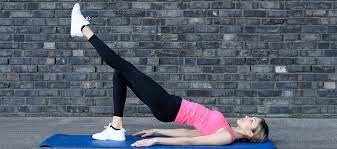
Lie on your back with your knees bent and feet flat on the floor. Lift your hips off the ground, squeezing your glutes at the top. Lower down and repeat for 12–15 reps, pausing at the top of the pose and holding your glute bridge for longer once you gain strength.
Planks
We all know and love planks (or we should!). Planks target the core muscles and helping to improve stability and support for the spine.
Start by holding a plank position on your forearms and toes, ensuring your body forms a straight line from head to heels. Hold for 20-30 seconds, gradually increasing the duration as you become more comfortable.
Cat-Cow Stretches
This yoga-inspired stretch helps to align the spine and mobilize it, while giving the back muscles a great stretch.
Start on your hands and knees and arch your back like a cat (rounding the spine), then drop your belly towards the floor while lifting your head and tailbone (cow pose). Repeat this movement for 8–10 rounds, pausing at each end of the stretch to take a few breaths or add some gentle side-to-side movement.
Even if you’re on board with adding these exercises to your pre or post-run routine, it is always a great idea to check in with a medical practitioner when you’re experiencing back pain, and important to do so if pain worsens or isn’t alleviated after a few days rest.
(08/14/2023) Views: 394 ⚡AMPby Keeley Milne
What Runners Should Know About Hydrating With Coconut Water
This tropical drink can provide a perfect refresher on a hot day, while offering up key nutrients for runners.
Figuring out your hydration needs is essential as a runner. But let’s face it, water probably isn’t what you’re craving to quench your thirst every day. One drink that might add more excitement to your hydration plan: coconut water.
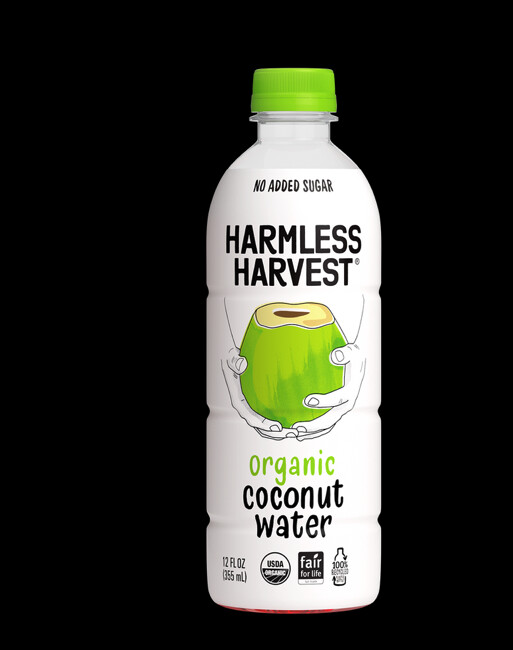
Coconut water is the liquid that’s found in young coconuts, and it contains naturally occurring minerals, says Yasi Ansari, MS, RDN, CSSD, certified specialist in sports dietetics and national media spokesperson for the Academy of Nutrition and Dietetics.
Coconut water is different from coconut milk, which is pressed from ground coconut flesh and then mixed with either coconut water or freshwater, says Kelly Jones, MS, RD, CSSD, sports dietitian based in Newtown, Pennsylvania. Compared to coconut milk (the kind you’d find in your grocer’s fridge, not the canned condensed variety), which contains anywhere from 45 to 70 calories per cup, and roughly 4.5 grams of fat, coconut water averages around 45 calories per cup and typically contains no fat.
While there’s plenty of beverage options for runners to choose from today, knowing what will optimize your recovery and support your health is important. Here’s what to keep in mind about coconut water in particular.
The Benefits of Coconut Water
1. Offers Electrolytes
“Coconut water is most often praised for being a good source of potassium, with [about] 400 milligrams per cup, which is around the same amount as a medium banana,” says Jones. Consuming potassium may protect your heart, as it’s known to help lower blood pressure. “Potassium is also an important mineral to support hydration and healthy muscle function, though not without adequate sodium,” Jones adds.
Potassium isn’t the only electrolyte you’ll get from coconut water. “Coconut water also provides smaller amounts of the minerals magnesium, calcium, and phosphorus,” Ansari says. Runners lose these electrolytes through sweat and urine, so you need to replenish them, especially when clocking miles on a hot, humid day.
“Sweat loss can depend on climate, heat acclimatization, type of activity, sweat rate, diet, and more,” Ansari adds.
2. Serves Up a Healthy Supply of Vitamin C
Antioxidants are known to help your body’s natural defense mechanisms, and studies link people who eat a diet rich in antioxidants to lower risk of diseases and improved longevity. One important antioxidant in coconut water? Vitamin C.
One cup of coconut water supplies 27 percent of the daily recommended value of this vitamin, which is important in protecting your cells from the damage of free radicals, and supporting your immune system. “According to the FDA, the closer we get to 20 percent of a daily value, we’re getting a high source of that mineral or vitamin,” Ansari says.
3. Supports Your Overall Health
“While more research is needed on coconut water and its benefits on human health, coconut water has been linked to playing a role in blood sugar control, offering antioxidant properties, and supporting heart health and blood pressure,” Ansari says.
One study, published in the International Journal of Medical Research & Health Sciences, backs this up, showing that coconut water can help improve blood pressure, thanks to its potassium content and this mineral’s effects on blood flow.
Coconut water may be also help when it comes to drinking enough. If you’re replacing your normal glass of water with coconut water simply because you love it and it makes you drink more liquids, than that’s a win for your hydration, which then supports your overall health, as well as your run performance.
The Downsides of Coconut Water
One catch on the electrolyte content in coconut water: It doesn’t contain much sodium. “Since sodium is the mineral lost in the highest amounts during exercise, it’s what’s missing from coconut water for those who rely on it as a sports drink,” says Ansari. In other words, if you’re clocking a lot of miles and sweating a ton, you probably don’t want to substitute coconut water for your go-to sports hydration.
“When it comes to sports and ensuring athletes are rehydrating appropriately, electrolyte-enhanced beverages on the market that offer sodium are going to be the most optimal choice to help minimize hyponatremia risk [a lower-than-normal level of sodium in the bloodstream]—headaches, altered mental status, nausea, and vomiting can result from hyponatremia,” Ansari says.
Also, if you’re using coconut water to fuel your runs, it might not offer the carbs you need to sustain your effort. “Once we get closer to an hour [of running], the carbohydrates that are offered in other sports beverages can help sustain energy and blood sugar better [than coconut water],” Ansari says. “For those training less than an hour, coconut water can be a safe alternative [to electrolyte drinks] as long as you’re not losing too many fluids through sweat.”
How to Make Coconut Water Part of Your Running Hydration Plan
If you love coconut water and want it to play a role in your run nutrition, Ansari suggests making your own product that contains coconut water and sufficient sodium.
“I advise clients who enjoy coconut water during exercise to add 1/8 teaspoon of salt, which adds 300 milligrams of sodium. For those who sweat heavily and know they are heavy salt sweaters, 1/4 teaspoon per 16 ounce bottle may be appropriate,” says Jones.
Ansari also suggests alternating with an electrolyte-enhanced beverage that contains more sodium and supports adequate hydration. She also recommends pairing coconut water with a salty snacks, like pretzels, olives, pickles, trail mix, or salted peanut butter and jam sandwiches.
What to Know Before You Buy Coconut Water
When shopping for coconut water, Jones recommends looking for cold-pressed varieties, meaning it has not been treated with heat, which may damage some nutrients and antioxidants, such as vitamin C.
Some coconut waters also have high amounts of added sugars. The daily guideline for Americans suggests less than 10 percent of calories come from added sugars, and the American Heart Association recommends men keep daily added sugar consumption to 36 grams and women stick to 25 grams.
However, very active individuals may need more sugar than the average population, Ansari says. “What’s important to remember is that athletes need energy. Carbs fuel workouts. Electrolyte-enhanced products that contain carbs are going to help boost energy especially when consumed during a workout and when topping off energy stores prior to a workout,” she says.
If you’re drinking coconut water before, during, or after a run, it’s okay to get those added sugars to support your efforts. However, aim to limit your daily consumption of added sugars, looking for coconut water products with lower amounts.
Coconut Waters We Love
(08/13/2023) Views: 386 ⚡AMPby Runner’s World
Strava’s New Tool Helps Runners Calculate Carbon Savings
Strava's newest tool lets commuters check their estimated carbon savings when running, walking, or biking on the platform
Last week, Strava, the ubiquitously connected fitness app, announced a new tool allowing runners to check their estimated carbon savings when running, walking, or biking on the platform.
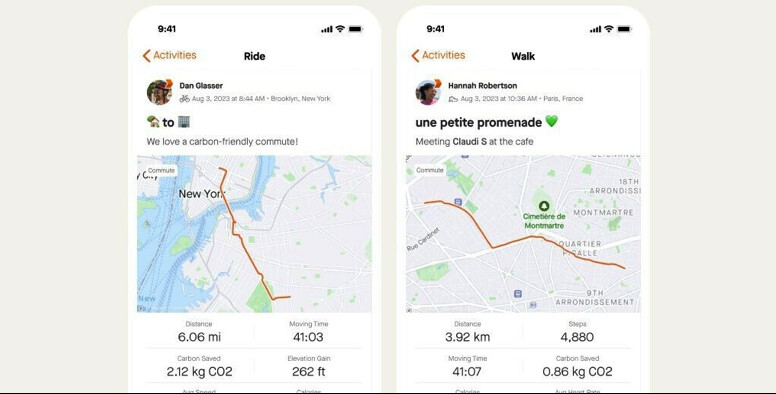
Strava hopes that the feature will further spotlight carbon savings and encourage more environmentally friendly modes of transportation among its users.
With more and more companies mandating a return to offices, commuting is back on the rise, and with global gas prices also on the rise, many commuters may turn to cycling or walking to work as an alternative. The app update will display the amount of carbon saved on user activities labeled as “commute,” which Strava hopes influences the platform’s more than 100 million users to choose less carbon-intensive means of commuting.
“At Strava, we are proud to consistently provide our community with product features and updates that motivate them to be more active,” said Brian Bell, Strava’s vice president of global communications and social impact. “The new feature unlocks a universal action that anyone on Strava can be part of, and our hope is that when armed with the power to choose between a less eco-friendly form of commuting versus a more human-powered approach—they bias towards the more sustainable option.”
Since 2020, Strava has given free access to city planners, advocacy groups, and researchers to de-identified, aggregated commuting data via Metro, Strava’s proprietary web platform. Strava community members that opt-in can anonymously contribute to this dataset, which helps planners identify opportunities in their communities for infrastructural changes.
With this update, Strava has given its subscribers yet another tool that can be used for more than just tracking their runs or rides.
(08/13/2023) Views: 484 ⚡AMPby Runner’s World
This Marathoner Started Running 40 Years Ago to Avoid Happy Hours
Now the sport is a major part of his life and a top source of freedom and happiness.
I started running to avoid happy hour—it’s true!—but it became so much more to me than that.
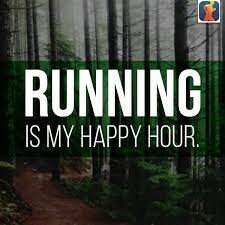
I played lacrosse in high school and college, so I ran as part of my training for the game. But in 1983, I started running after work to stay in shape and as a balance to the stress of starting a new career. To be totally honest, as an insurance broker in Chicago, there were too many opportunities to drink! Lunch, happy hour, and then we went out after dinner. So running afforded me the opportunity to say “I can’t drink at lunch because I’m running after work,” which also meant I’d miss the happy hour! In the beginning I had no real idea as to how to run, but I did read. I loved the books by George Sheehan and I read Runner’s World cover to cover! Runner’s World was one of my major sources for training plans back in the day. There were no apps in 1983, and I still don’t use training apps, although I love Strava. Eventually, I found races and then running clubs for a more collaborative experience.
Racing changed everything because it focused my running into competition and I then became engaged in improvement. I ran my first race in 1983 just a few months into my training. It was called the Fell 10K, and it was held in Winnetka, Illinois. My 10Ks eventually lead to marathons.
Running was a great way to meet people and to find more running groups, but the bug bit hard after my fifth marathon. I was living in Los Angeles in the 80s and became involved with a premier track club, and ran as part of the LA Celebrity Team in the Los Angeles Marathon in 1990. That allowed me to meet more runners and triathletes.
Eventually I would go on to run the Boston Marathon, New York City Marathon, Chicago Marathon, London Marathon, and the Berlin Marathon. Then in honor of my 60th birthday in 2019, I made it my goal to run 60 marathons, and my 60th marathon was the Boston Marathon.
My “why” hasn’t changed much, if at all over the years. I am a runner. It’s in my DNA. Of course, I am prepared for the day I might not be able to run but honestly I don’t think it will ever happen. It makes me feel alive—the feel of the wind on my face, the sound of my feet hitting the pavement, the smell of nature, and of course, there is no better time to think than when you are running. It’s very freeing for your brain because your body is occupied and fulfilled by the movement. One thing that made a huge impact on my running in my 60s was stretching more. I hated stretching, and in the first 37 years of my running life I only stretched when I was a member of a track club in Los Angeles. However, in 2020, luckily I found StretchLab and it changed my life—not just my running life, but everything, from getting into and out of the car to getting off the floor. My times also improved as my increased mobility translated to a much smoother form and fewer injuries.
I also work out at Orangetheory Fitness, play hockey, and continue to run half marathons with friends. I plan to run my fourth Boston in 2028 for my 70th birthday, but otherwise my marathon days are behind me.
For me there is no life without running—any runner would understand that. Although my mileage has decreased in recent years, it’s simply a part of my life like eating, or traveling, or working.
My first 10 years as a runner I watched my race time’s drop and my finishes improve. Those were heady days and I loved the competition. But a time will come when you have to face the fact you are getting slower. And when that happens, you will need to decide whether you can just run for the pure joy of it without a PR or whether you will let your ego sabotage something you love. I am completely at peace with running slower for the rest of my life in exchange for not running at all. In fact, I am grateful just to be able to do it at all.
These three tips have made my running journey a success:
1. Stretch more often
You have to be flexible. Two horrendous things occur when you are not mobile: First, you will get slower and second, you will get injured. Need I say more?
2. Cross train
Cross training provides the ability to run faster and further as you take the stress off your legs. Also, the training can help you have fewer injuries.
3. Listen to your body
To my fellow runners I want to emphasize taking care of yourself. I followed a simple rule. If it hurts to walk, I don’t run. If I have a chest cold or lung infection I don’t run. Rest is remarkable. Once you get over the fear of missing training you will enjoy the thrill of regaining your fitness level over and over. I won’t lie to you: I hate rest days but I’ve learned they help me to extend my ability to run injury free and that’s priceless.
John’s Must-Have Gear
→ Garmin Fenix 6: Is there anything more important than measuring your time and distance? This also measures heart rate while you are running, and it even tracks your sleep.
→ Asics Gel Kayano Running Shoes: I enjoy all their products and have trained for most of my 60 marathons (and countless other races) in their shoes. The engineering is second to none.
→ GymBoss Timing Device: I have been running the Jim Galloway style (that’s the walk/run method) for 17 years, and this little device makes it so easy.
(08/13/2023) Views: 399 ⚡AMPby Runner’s World
Does Sunscreen Expire? Experts Answer Your Qs
Here’s how to tell if your sunscreen needs a refresh. Plus, the best ways to store it for optimal efficacy.If you’re like many runners, you might have the same bottle of sunscreen sitting in your bathroom cabinet for longer than you can remember. And, like many, you probably face a common dilemma: Keep or toss?
The simple verdict: Sunscreen definitely expires, so toss yours if it’s past its prime.
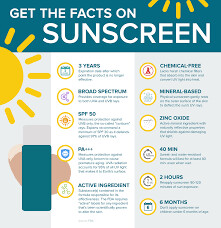
MORE FROM RUNNER'S WORLD ON APPLE NEWS
According to the Skin Cancer Foundation, slathering on sunscreen every day can prevent premature skin aging and slash your melanoma risk by 50 percent. (ICYMI, melanoma is the most dangerous form of skin cancer.) But sunscreen that’s passed its expiration date won’t do your skin any good.
As runners, we log more hours in the sun than most people, which puts us at greater risk for sunburn and skin cancer. We owe it to our skin (and overall health!) to give it the best sun protection possible.
Here, we explain why sunscreen expires and how to tell if yours has.
Why does sunscreen expire?
Sunscreen contains active ingredients that shield your skin from UV rays. In chemical sunscreens, you may find ingredients such as octisalate and/or avobenzone. According to the Skin Cancer Foundation, these ingredients absorb UV rays like a sponge before they can do any damage. In mineral sunscreens, common ingredients include titanium dioxide and zinc oxide, which physically block the rays before they enter your skin.
Over time, these active ingredients break down. When this happens, they become less effective at protecting your skin from harmful UV rays, leaving your skin vulnerable to sunburn and damage, says Cameron Rokhsar, M.D., the founder and director of the New York Cosmetic, Skin, and Laser Surgery Center and an associate clinical professor of dermatology at Mount Sinai Hospital in New York City.
Therefore, it’s essential to keep tabs on your sunscreen’s status. Using an expired product is not only pointless, but it can give you a false sense of security during sunny runs.
Are there signs to look for that show my sunscreen has expired?
“Unfortunately, there’s no reliable way to test if a sunscreen has expired,” says Shari Lipner, M.D., Ph.D., a dermatologist with Weill Cornell Medicine in New York City. However, some sunscreen manufacturers print an expiration date on the bottle or label.
For products that don’t have that expiration date (or if you threw the packaging away), know that all sunscreen manufacturers have to prove that their product will remain effective for at least three years, per the U.S. Food and Drug Administration (FDA). If that’s the case, write the purchase date on the bottle to track how long you’ve had it, Lipner suggests. Consider your sunscreen expired at the three-year mark.
Sunscreen can also expire earlier if exposed to heat, humidity, and sunlight. According to the Cleveland Clinic, chemical sunscreen is especially vulnerable because the active ingredients tend to be more unstable when exposed to heat than mineral sunscreen ingredients.
The takeaway? Don’t rely on expiration dates alone. “If you notice any changes in the consistency, color, or scent of the sunscreen, it could indicate that it’s expired or undergone some degradation, and it’s best not to use it,” Rokhsar says.
For example, many chemical and mineral sunscreens contain inactive ingredients that help the formula spread evenly. When these ingredients break down, you may notice that the sunscreen is gritty and/or tough to rub into your skin, according to the Cleveland Clinic.
You may also experience skin reactions like acne and rash when inactive ingredients degrade, Rokhsar says. Plus, many sunscreens contain preservatives. When these deteriorate, bacteria and fungi are more likely to grow inside the container, leading to skin infections and acne, the Cleveland Clinic notes.
So, if you start breaking out or developing rashes after using your sunscreen, it’s time to get a fresh bottle.
What’s the best way to store sunscreen?
“To extend the life of your sunscreen and ensure its effectiveness, store it in a cool, dry place,” Rokhsar says. In other words, don’t leave it in your car during hot summer runs or on top of your towel during beach days. Excessive heat breaks down the active ingredients that protect your skin from harmful UV rays, Rokhsar explains.
A better approach: Apply sunscreen before leaving home so you don’t have to keep it in your car during your run. “If you’re at the pool or beach, I suggest wrapping [the sunscreen] in a towel,” Lipner says. You can also stash it under some shade or keep it in the beverage cooler.
Also, keep the container tightly closed to prevent exposure to air, “which can also contribute to the breakdown of the active ingredients,” Rokhsar says.
So, can you use expired sunscreen?
Using sunscreen that’s gone bad won’t protect your skin from the harmful UV rays that cause skin damage and cancer. You’ll likely irritate your skin to boot. So, toss your sunblock if it’s passed its expiration date, it’s been three years since you purchased it, or you notice changes to the product or your skin.
You can prolong the shelf-life of your sunscreen by storing it in a cool, dry place. However, you don’t need to worry about expiration dates if you use sunscreen the way you should. “If you’re using sunscreen properly, which means applying a generous amount [or about a shot glass’ worth] and reapplying frequently, such as after swimming or sweating, a bottle shouldn’t last more than a season,” Rokhsar says.
(08/13/2023) Views: 357 ⚡AMP
by Runner’s World
100m world junior record holder suspended for doping
Suriname’s Issam Asinga, who only two weeks ago stunned the athletics world by shattering the U20 100m world record at the South American Championships in Sao Paulo, Brazil, has been provisionally suspended by the Athletics Integrity Unit (AIU) for the alleged use or presence of a prohibited substance . The suspension, which went into effect Wednesday and was announced by the AIU on Friday, is for the presence of GW1516, a substance that modifies how the body metabolizes fat, and which can boost endurance.
Provisional suspensions are issued before a hearing to determine whether the charges warrant any official punishment.
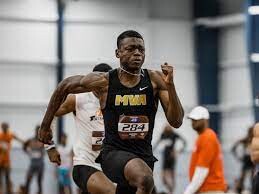
Botswana’s Nijel Amos, who won silver in the 800m at the 2012 Olympics in London, received a provisional suspension last year for the presence of the same metabolite ahead of the World Athletics Championships in Eugene, Ore. He ended up receiving a three-year ban.
GW1516 was originally developed to treat obesity and diabetes, but is not approved for human use, since it was discovered to be carcinogenic. It is banned in and out of competition, and not eligible for Therapeutic Use Exemption (TUE). A USADA bulletin from 2019 says GW1516 is also sometimes known as cardarine or endurobol and has been found in some supplements, even though it is illegal. In 2017, there were 31 sanctions worldwide related to its use.
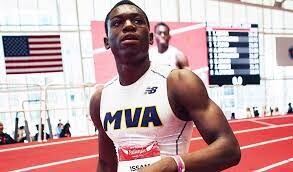
The 18-year-old Asinga clocked an impressive 9.89 seconds with a tailwind of (-0.8m/s) on July 28 to become the first South American sprinter to break the 10-second barrier in the 100m. His blazing run surpassed the previous record of 9.91 seconds set by Botswana’s Letsile Tebogo at last year’s World U20 Championships in Cali, Colombia, and also broke the South American area record, bettering the 10.00 mark set by Brazil’s Robson da Silva in 1988.
In addition to claiming a world record in Brazil, Asinga’ also picked up a free PlayStation 5 with his performance. A tweet posted last week shows retired American sprinter Justin Gatlin handing Asinga the video game console with the caption “The special moment when Justin Gatlin promised Issam Asinga a PS5 if he ran a legal 9.8 and he delivered!”
Asinga has made headlines in the 2023 season, running for Montverde Academy near Orlando, Fla. Earlier this year, he beat world champion Noah Lyles in a 100m race to break the U.S. high school record, and a week later, broke Lyles’s 200m high school record in 19.97 seconds.
The provisional suspension appears to have dashed Asinga’s dreams for gold at the World Athletics Championships in Budapest later this month, where he was set to run the double. The sprinter has plans to head to Texas A&M University in the NCAA on a full track and field scholarship this fall.
(08/12/2023) Views: 517 ⚡AMPby Running Magazine
Dynamic vs. static stretching: Which is better?
Both have benefits depending on when and why you’re stretching.
Stretching is an essential component of any runner’s routine, aiding in flexibility, performance, and injury prevention. When it comes to stretching, there are two main techniques: dynamic stretching and static stretching, each offering distinct advantages for runners.
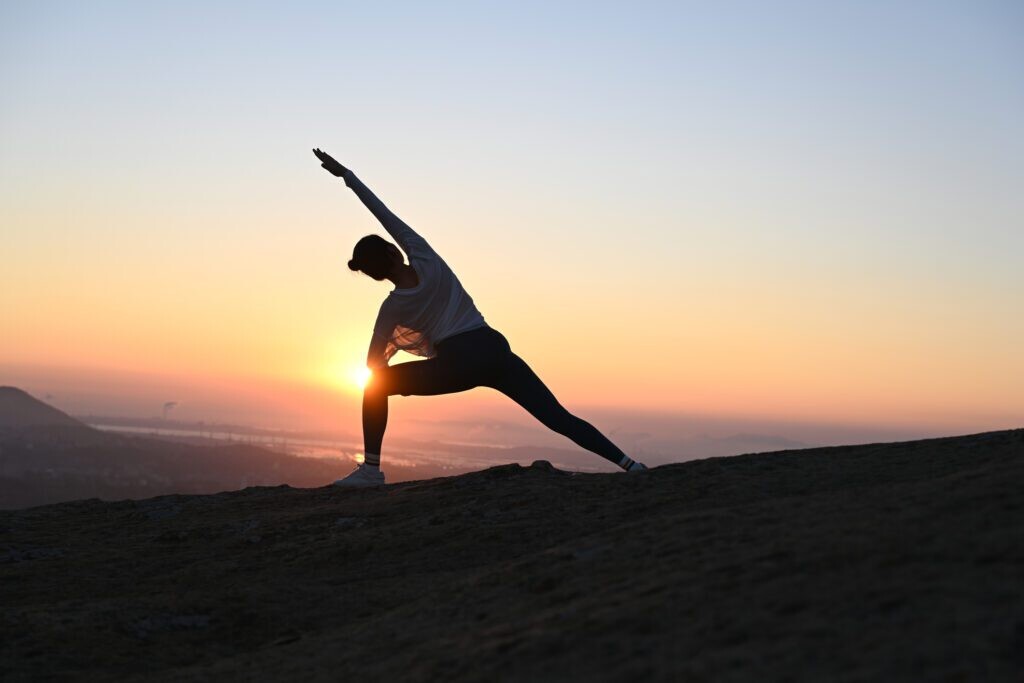
Dynamic stretching
Dynamic stretching involves controlled movements that mimic the actions of the activity about to be performed. This type of stretching is particularly advantageous for runners as it helps warm up the muscles and joints, increasing blood flow and heart rate.
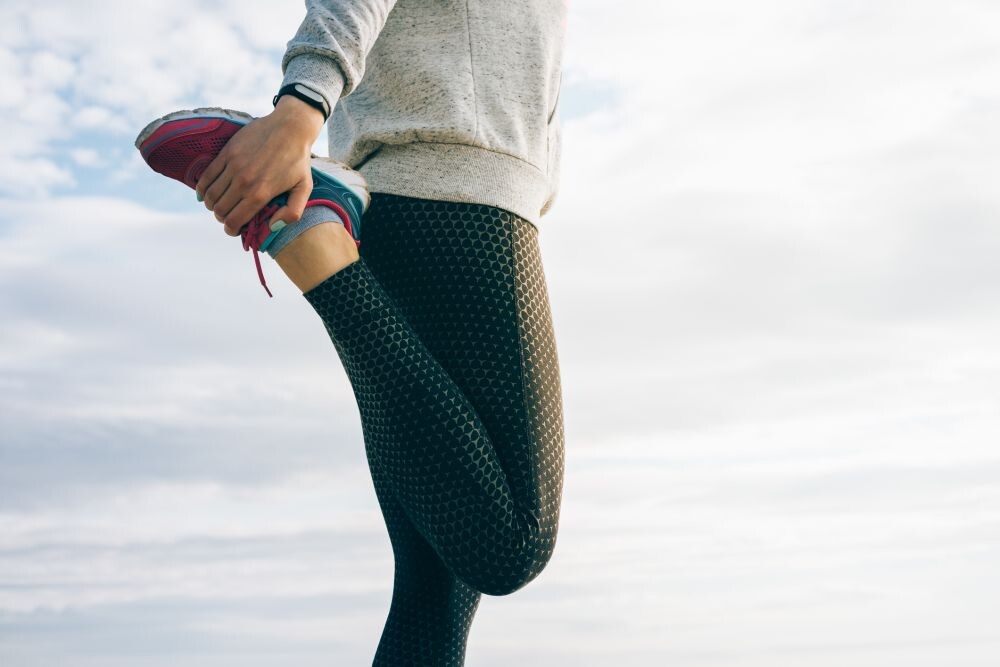
The continuous, rhythmic motions of dynamic stretches prepare the body for the impending workout by improving range of motion and promoting better neuromuscular coordination. Leg swings, high knees, and walking lunges are examples of dynamic stretches. They activate the nervous system, enhancing muscle responsiveness and power output. Incorporating dynamic stretching into a pre-run routine can lead to improved performance and reduced risk of injury.
Static stretching
Static stretching entails holding a stretch for a prolonged period, usually 15-60 seconds. While static stretching can be beneficial post-workout for enhancing flexibility and aiding in recovery, its application before a run is debated. Some studies suggest that performing static stretches before a run might lead to decreased muscle power and performance due to temporarily relaxed muscles. However, static stretching post-run, when muscles are warm and pliable, can help prevent muscle imbalances and maintain overall flexibility.
Dynamic vs. static: a balance
The key is to find the right balance between dynamic and static stretching. Pre-run, focus more on dynamic stretches to elevate heart rate and activate muscles. Gradually transition into movements that mimic the running stride to enhance range of motion and promote blood flow to the muscles. As the body warms up, these dynamic stretches should become more running-specific, such as leg swings or high knee marches.
Post-run, static stretching can be incorporated to improve flexibility and maintain muscle health. Stretching muscles that have been worked during the run, such as hamstrings, quads, and calves, can aid in recovery and prevent tightness. Holding stretches for 15-60 seconds without bouncing can gradually improve muscle length over time, reducing the risk of injury and enhancing overall flexibility.
(08/12/2023) Views: 439 ⚡AMPby Brittany Hambleton
Wait … Is It Okay to Run in a Cemetery?
A strongly-worded sign in Eugene, Oregon, sparked debate: Fair game or a somber spot?
Just south of the University of Oregon, sits the Eugene Masonic Cemetery—a ten-acre hilly plot that’s filled with Douglas Fir Trees and wood-chip trails. In a city renowned for its rich running history, it’s relatively common to see runners using the paths as a neighborhood cut-through or spot to work in some hills.
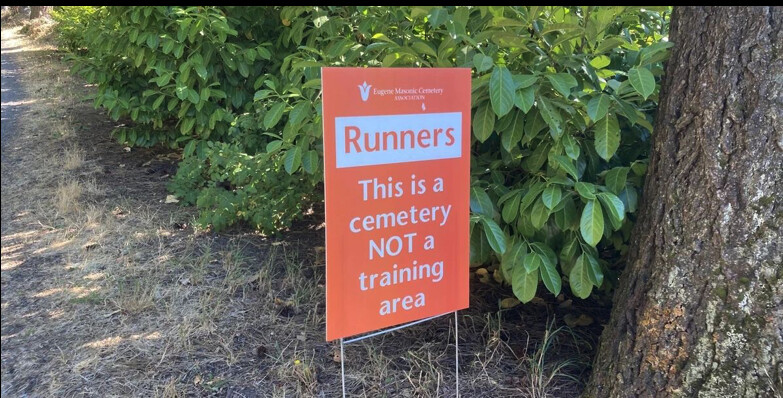
But last month, some residents started to notice red signs: “Runners, this is a cemetery NOT a training area.” The signs prodded discussion on Twitter, with some users scorning them while others emphasized the need to respect the dead. Some pointed out that seven blocks north is the Eugene Pioneer Cemetery, a slightly bigger area, which is a common warm-up spot for athletes competing at nearby Hayward Field.
Cemeteries can be a confusing middle ground between a green space and a solemn place of remembrance, and it brings up an ethical question: When is it okay to run in a cemetery?
Striking a balance
The Eugene Masonic Cemetery is private property—it’s an active burial ground. But Shawn Walker, the president of the Board of the Eugene Masonic Cemetery Association, clarifies that outsiders are still welcome in the space.
“I think it can be helpful for visitors to keep in mind that the cemetery is first and foremost a cemetery,” he said to Runner’s World in an email. “Visitors come to the cemetery to grieve, remember those who have passed on, and seek solace. Other ‘non-cemetery’ related activities are fine and encouraged as long as the activities do not disrupt the cemetery’s primary role.”
Not all cemeteries are privately owned; different types have emerged over the years. Take the Oakland Cemetery in downtown Atlanta. Oakland is the oldest cemetery in the city, founded in 1850, but it’s also the oldest public park.
The City of Atlanta owns the 48-acre space, but it operates differently from a church graveyard or military cemetery (don’t try to run in Arlington National Cemetery). Oakland is a “Victorian rural garden cemetery,” says Sandy White, the Director of Adult Programs and Volunteers at the Historic Oakland Foundation. Early cemeteries were connected with churches, but as cities grew, governments realized they needed more space to bury the dead, says White. But instead of a somber, religious space, these area were also used as parks.
In fact, during the Victorian period (1837 to 1901), it was common for families to visit cemeteries for leisure. During a time when diseases like yellow fever and cholera were rampant, families would pack a lunch and visit their dead relatives. Nowadays, you’re less likely to see a charcuterie board in front of a gravestone, but some cemeteries still retain those park-like qualities.
Fifteen years ago, the Historic Oakland Foundation created the Run Like Hell 5K. “At the time, [the foundation] was really searching for things that would be good fundraisers and respectful of the grounds and of the people that are buried in Oakland, but at the same time, really serve the modern communities that were built up around,” White says.
The race—which features a costume contest—has become the largest cemetery race in the U.S. with 219 runners toeing the line at this year’s April edition. The money raised from the race helps keep the cemetery humming through beautification and preservation projects, and it’s a key part of Oakland’s identity as a public green space.
“It’s every citizen in Atlanta’s park as much as it’s our cemetery,” White says.
Appreciation is key
Ultimately, running in a cemetery comes down to respect.
Walker says the red signs at the Masonic Cemetery were put up after some runners started taking advantage of the open gates. He says training groups would come to the cemetery and disrupt the peace with drills like sprints and chain runs. Sometimes a coach would even shout and whistle at the athletes.
“We felt that this type of activity and training was not consistent with the environment that we believe is important to maintain in the cemetery,” Walker says.
He admits the red signs might come off as harsh, but it’s tough to convey the message clearly.
“We love having visitors in the cemetery and part of our mission is to maintain and operate the cemetery as a resource for the community,” he says. “I believe it can be perfectly appropriate for runners to run in the cemetery as long as their activities are respectful to other visitors and to the space.”
Rob Rueff is familiar with this balance. His favorite race is a small 5K in Franklin, Indiana, called the Sparkler Sprint. Held on the 4th of July, the race is a fundraiser for the Franklin Community High School cross country team. The course meanders through a local park and the nearby Greenlawn Cemetery, and it reminds Rueff of trips to visit his grandparents as a child. In fact—the race literally goes past their graves.
“It’s like I can feel them cheering me on as I reach the final quarter mile of the race,” he says.
For Rueff, the cemetery is a reflective place of solace—but something he can combine with his passion for running. “When I’m training for races and I’ve hit a wall during training, I’ll drive down and run there,” he says. “I’ll make it a point to run by their graves just to check on things. It helps me clear my head and refocus on my training.”
Sarah Lorge Butler contributed to this report.
(08/12/2023) Views: 491 ⚡AMPby Runner’s World
The Big Money Behind This Year’s World Athletics Championships
From prize money to ticket prices to betting lines—there’s a lot of cash at stake.
The World Athletics Championships Budapest 2023 are set to kick off on August 19, with more than 2,000 athletes from 200 countries vying for the top spots and the prize money that comes with them. Those cash prizes aren’t the only money at stake throughout the competition, though, as ticket prices and betting lines for the nine-day event will also command a lot of attention.
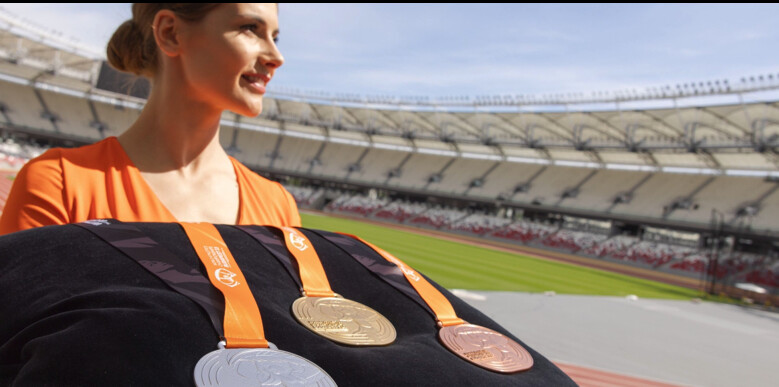
Tickets can be purchased from the meet’s official website, and they are available for 14 sessions, including five morning sessions and nine evening sessions. Six events will take place outside the stadium in Budapest’s city center, including race walking and marathon events, which are free of charge.
Prices for the morning session tickets for Categories One to Four are 3,000 HUF (about $8.50), while premium and premium finish line tickets for the morning sessions are 6,900 HUF ($20). For the evening tickets, the prices will differ between days and categories. Ticket packages are also available; the most expensive will run you 1,958,000 HUF (or just under $5,600) for all nine days. The stadium seats 36,000 spectators.
A lot of money is sure to be made off betting, which continues to gain steam in the U.S., with many now-legal sportsbooks having set odds for the 200-meter race. Unibet Sportsbook has given Noah Lyles the most favored odds at -286, making him their clear favorite to win. Bettors hoping for a longshot should place their bets on Italian Filippo Tortu, who has the longest odds at +25000.
As for the athletes themselves, they’ll be hoping to win a part of the $8,498,000 total prize money being offered this year, in addition to a special prize of $100,000 to be awarded to an athlete should they also set a world record at the event. For individual events, the prize money starts at $5,000 for eighth place and up to $70,000 for the gold. Meanwhile, relay teams will earn between $4,000 and $80,000 per team.
(08/12/2023) Views: 513 ⚡AMPIs Overhydration More Dangerous than Dehydration?
Here's why you need to monitor your water intake
Being human is all about balance. We strive to find an ever-elusive equilibrium between work and life. We go to yoga classes in hopes of improving our physical steadiness. We eat an assortment of fruits and vegetables, but we also munch on chips and dip. And, from a physiological standpoint, our blood cells need balance, too.
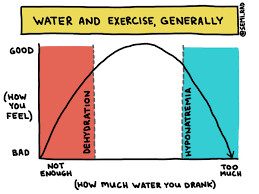
As athletes—especially ones who spend time outdoors during a heat wave—the ethos we usually hear is “hydrate, hydrate, hydrate.” However, a 2020 research article from Stanford University School of Medicine offers a different perspective. In the piece, the study’s lead author notes that overhydrating is actually more dangerous than being dehydrated.
One of the most important things to maintain balance in our blood cells is the sodium-to-water ratio, says Tamara Hew-Butler, associate professor of exercise and sport science at Wayne State University School of Medicine. When you’re dehydrated, you contain less water, causing your blood cells to shrink. However, when you drink some H2O, your cells recover quickly.
When you consume a lot of water (more than three liters in an hour), your sodium levels dip to abnormally low levels, taking you into dangerous territory. If the water count in your body is much higher than your sodium levels, you can develop hyponatremia—a dangerous result of overhydration. “If you drink too much water, all of your cells start to swell,” Hew-Butler says. “That becomes a problem in your brain, because your brain can only swell five to eight percent [beyond its normal size] before it runs out of space in the skull.”
It’s not something to be taken lightly. In some cases, hyponatremia can lead to death, Hew-Butler says. “The amount of water that leads to hyponatremia is different for everyone,” she adds. “It depends on the size of the person, the ambient temperature, and exercise intensity and duration.” However, if you need to quantify it, typically drinking about three liters of water within an hour can cause severe hyponatremia, potentially prompting a seizure, coma, or even death, Hew-Butler says.
Overhydration is a particularly large concern during the summer months. “The first thing that everybody tells you—and it’s not always wrong—is to drink lots of water,” Hew-Butler says. “But, when it’s hot out, more people die from overhydration than they do from dehydration.”
That’s because your blood cells actually retain water as a result of the heat, so you’re not quite as dehydrated as you may think.
This isn’t necessarily new information, Hew-Butler says. “The results of a 1999 study in the American Journal of Emergency Medicine support that hyponatremia is [generally] more common than heatstroke.” She adds that it’s the most common cause of serious illness in the Grand Canyon—more than heat exhaustion, grand mal seizures, nausea, and dizziness.
What should you do to achieve that balance of hydration? Drink to thirst, recommends Allen Lim, a sports physiologist and the founder of sports nutrition brand Skratch Labs. (So yes, that means skipping out on your emotional support water bottle.) However, even when you’re feeling parched, make sure to monitor your H2O intake.
“During exercise, the thirst mechanism will prioritize [sodium] balance over water balance,” Lim says. “As we lose sodium in our sweat, we will naturally drink less water to maintain sodium balance. Since there’s not as much sodium in the body, we don’t drink everything we lose, so we can keep the ratio of water to sodium the same.” Essentially, your body makes you thirsty when that sodium-to-water ratio is skewing high on sodium. And that’s when you should drink water.
You know that old saying, “Listen to your body?” That’s sage advice when it comes to hydration, especially when it’s hot out. “Drinking to thirst is important even though it can result in dehydration,” says Lim. “That dehydration is important to keep the sodium balance correct.”
(08/12/2023) Views: 507 ⚡AMPby Outside Online
7-year-old runs to beat clock in mom's cancer battle
A seven-year-old British girl has completed a multi-day marathon challenge in a desperate bid to pay for a brain biopsy that could help save her mother’s life.
The U.S. Sun reports that Lolita Oakes of North London and her friend Juliet Deilinger, also seven years old, recently ran the 42.2-km marathon distance to help fund Oakes’s mother’s fight against brain cancer.

In 2018, at age 36, Cordelia Taylor was diagnosed with glioblastoma, a form of brain cancer that has an average survival time of 12 to 18 months. Only five per cent of patients live more than five years.
Following aggressive treatment—including surgery that involved removing a quarter of Taylor’s brain without any resulting neurological impairment—Taylor was declared cancer-free this past April. The results of a scan just two months later, however, showed that the cancer had returned and was inoperable.
She told the Sun she is hoping to self-fund a private biopsy and potential targeted treatment of the malignant tumour. The need for timely funding is what inspired daughter Lolita to take up the weeklong marathon challenge.
The run not only succeeded in raising awareness of, and financial support for, her mother’s treatment—nearly three-quarters of the campaign’s $170,000 goal has been raised—but also encouraged others to join in. Lolita and Juliet were joined during the multi-day challenge—which involved running at least 5 km before school every day (and additional kilometres after school) for seven days—by an ever-growing group of friends, schoolmates and teachers.
“It was quite hard, how much I had to run, and the not stopping,” Lolita told the Sun. “The hardest part was when I fell over. It was tiring, but I’m proud of me and Juliet for running the marathon, and doing it for my mum"
Although seeing the challenge through wasn’t easy for Lolita, her mother said she had every confidence her daughter would finish what she started.
“Loli is joyful and spirited, full of happiness and confidence,” said Taylor. “She’s a very determined girl and unbelievably good at saying to herself, ‘I can do this.’”
(08/12/2023) Views: 355 ⚡AMPby Running Magazine
Study suggests moderately active people can have a positive influence on their friends
Encouraging the general population to increase their physical activity levels has long been a frustrating challenge for public health officials, but new research has unveiled a potential new way to reach sedentary individuals: through their physically active friends. According to a study published in the journal Plos One, when sedentary individuals interacted with moderately active friends, they became more active themselves.The study
Researchers at Keene University in New Jersey used previous research analyzing how social interactions with peers can influence individual physical activity levels to develop a mathematical model to simulate how social interactions can shape a community’s physical activity levels over time. Their model showed that their physical activity levels dropped when people stopped socializing. We saw this play out in real-time during the COVID-19 pandemic when most of us were cut off from our peer groups.Their model also showed that when sedentary people interacted regularly with their moderately-active friends, they became more active over time. In other words, those of us who exercise regularly could have a positive impact on our less-active friends, encouraging them to move a little more.

It’s important to note that this study focused specifically on moderately active people. That’s not to say that those of us who are training for marathons or ultras can’t also have a positive impact on our sedentary friends, but a sedentary person may view a marathon runner as having an unattainable level of discipline or enthusiasm for activity, which may not motivate them to get started.How to encourage your sedentary friends to get active
Whether you’re training for a marathon or fitting a few 5Ks in between your busy schedule each week, you can help your sedentary friends warm up to the idea of a more active lifestyle. Here are a few tips to encourage them to get moving:Plan active get-togethers
Meeting your friend for a coffee? Get those coffees to go and invite them on a stroll. Planning a beach day? Bring a beach ball, a frisbee, or some other game that’ll get everyone on their feet. Invite your friends on weekend hikes, suggest signing up for a recreational sports team, or plan to play some backyard games at your next barbecue. Anything that gets people out of their chairs is a win.Try something new together
Your less-active friends may be intimidated to try going for a jog with you, so invite them to try an activity that you’re both novice at instead. Sign up for yoga classes, try a dance class, or sign up for golf lessons. If you’re both new at it, you’re both starting off on a somewhat even playing field.Talk about your running, but not too much
Sharing your running achievements or training plans with your friends can be motivational, but be careful not to over-do it. Your friends don’t want to hear about the splits from your last workout, and talking about your recent chaffing mishap will likely turn them off of the sport. When you talk about running, talk about how it helps you so they can see the potential benefits. “I was had a stressful day at work yesterday, but I went for a run and felt much better,” or “I tried a new route the other day and discovered a really cute neighbourhood that I’d never seen before!” are great ways to lean into the mental or emotional benefits of running.
(08/12/2023) Views: 383 ⚡AMPby Running Magazine
Another big blow! The Athletics Integrity Unit suspends Rodgers Kwemoi and Agnes Barsosio
The 2019 Hangzhou Marathon champion Agnes Barsosio and the 2022 N Kolay Istanbul Half Marathon Rodgers Kwemoi are the latest Kenyans to be summoned by the AIU.
The Athletics Integrity Unit has today, August 11 suspended other two Kenyans days after sanctioning Michael Kunyuga Njenga.
The 2019 Hangzhou Marathon champion Agnes Barsosio and the 2022 N Kolay Istanbul Half Marathon Rodgers Kwemoi are the latest Kenyans to be summoned by the AIU.
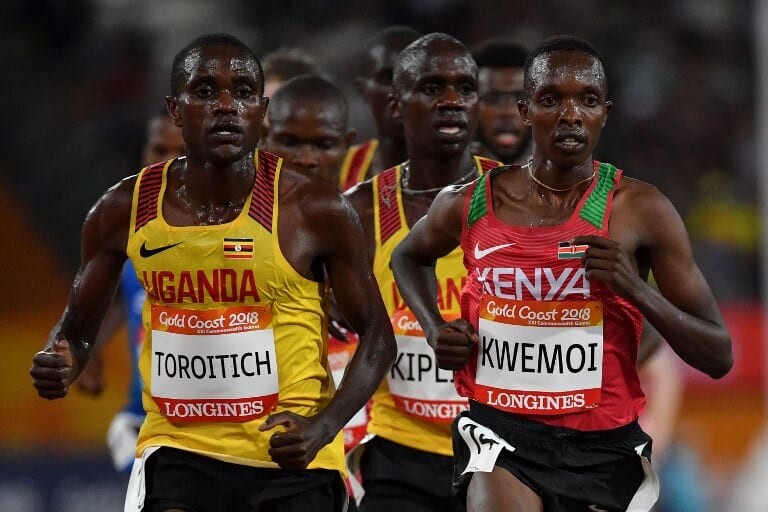
Barsosio has been suspended after testing positive for the use of a Prohibited Substance/Method – ABP. Barsosio has been inactive in athletics since her last race was during the 2021 Lisboa Marathon where she finished fourth.
In a tweet posted on their Twitter account, the AIU said: “The AIU has provisionally suspended Agness Jeruto Barsosio (Kenya) for the use of a Prohibited Substance/Method – ABP case.”
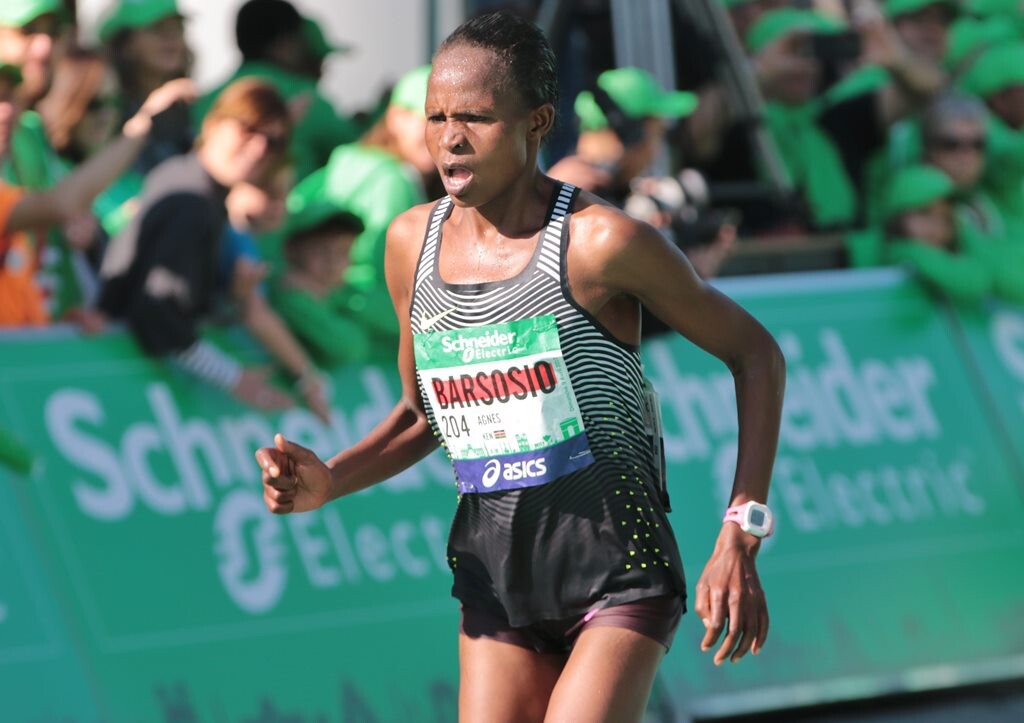
The same case applies to Kwemoi who has also been suspended for the use of ABP. Kwemoi has competed in a series of 10,000m races in Japan. He opened his season with a 10th place finish 31st at the Kanakuri Memorial Middle- and Long-Distance Invitational Meet.
He then proceeded to the 1st Nittaidai Challenge Games and 67th Central Japan Corporate Teams Athletics Championships where he finished ninth and third respectively.
The AIU has also suspended the latest kid on the block, Surinam’s Issam Asinga for the use of Prohibited Substance (GW1516). The 18-year-old has made headlines this year after breaking the Under-20 100m world record at the South American Championships.
The sanction means the trio is suspended temporarily from participating in any competition or activity in Athletics prior to a final decision at a hearing conducted under the World Athletics Anti-Doping Rules or the Integrity Code of Conduct.
(08/11/2023) Views: 549 ⚡AMPby Abigael Wafula
World record holder Brigid Kosgei excited ahead of New York Marathon debut
Brigid is set to showcase her prowess in the New York Marathon as she joins an elite lineup of champions for an exhilarating head-to-head competition.
World marathon record holder Brigid Kosgei is all set to grace the grand stage of the New York Marathon for the very first time on Sunday 5 November.
The anticipation is palpable as she readies herself to compete against an elite field of fellow Kenyan athletes, including defending champion Sharon Lokedi, Peres Jepchichir, and Hellen Obiri.
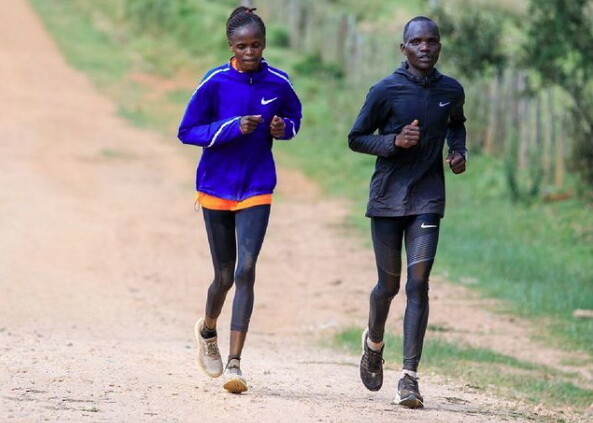
With an impressive track record in her arsenal, Kosgei is bubbling with excitement about the opportunity to add another Major title to her name.
The 29-year-old women's marathon world record holder is no stranger to pushing her limits.
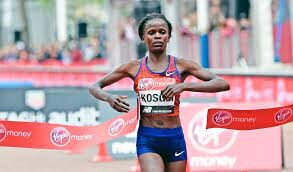
"I am not worried about the course, as I have had success in hilly marathons before," she remarks.
Kosgei acknowledges the challenge posed by her fellow competitors and emphasizes the importance of being in peak form to vie for victory.
Last year's champion, Sharon Lokedi, made an impressive marathon debut by clocking a time of 2:23:23.
Meanwhile, Hellen Obiri clinched victory at the Boston Marathon earlier this year in only her second attempt at the distance.
Peres Jepchichir, the reigning Olympic and 2021 New York City champion, boasts an unparalleled track record. Yet, it's Kosgei who stands out on paper with her astounding personal best of 2:14:04.
The upcoming New York Marathon is set to create history as the reigning champions from the TCS New York City Marathon, Boston Marathon, and Olympics, along with the world-record holder, line up in a thrilling face-off.
The clash of titans promises an unforgettable race that will be etched in the annals of marathon history.
Hellen Obiri, a decorated athlete with two Olympic medals and seven individual world championships medals, stands as a testament to consistent excellence.
Her recent triumph at the Boston Marathon underscores her adaptability and prowess in tackling new challenges.
Jepchichir, on the other hand, boasts a unique feat of winning the Olympic marathon, TCS New York City Marathon, and Boston Marathon.
With two world championships gold medals in the half marathon, she is a force to be reckoned with.
In the midst of these formidable competitors, Brigid Kosgei radiates determination. "I am very excited to make my New York City debut this fall, and attempt to win my fourth different Major."
(08/11/2023) Views: 368 ⚡AMP
by Festus Chuma
TCS New York City Marathon
The first New York City Marathon, organized in 1970 by Fred Lebow and Vince Chiappetta, was held entirely in Central Park. Of 127 entrants, only 55 men finished; the sole female entrant dropped out due to illness. Winners were given inexpensive wristwatches and recycled baseball and bowling trophies. The entry fee was $1 and the total event budget...
more...Returning Kipngetich Ngeno Aiming For Glory In Budapest
National 800m champion Kipngetich Ngeno cannot wait to wear the Kenyan colors once again during the World Athletics Championships that starts on August 19 in Budapest, Hungary.
Ngeno is making a return to Team Kenya for the first time since competing at the 2019 World Championships in Doha, Qatar.
Ngeno clinched victory at the national championships before finishing second at the national trials two weeks later to seal his spot in the Kenyan team.
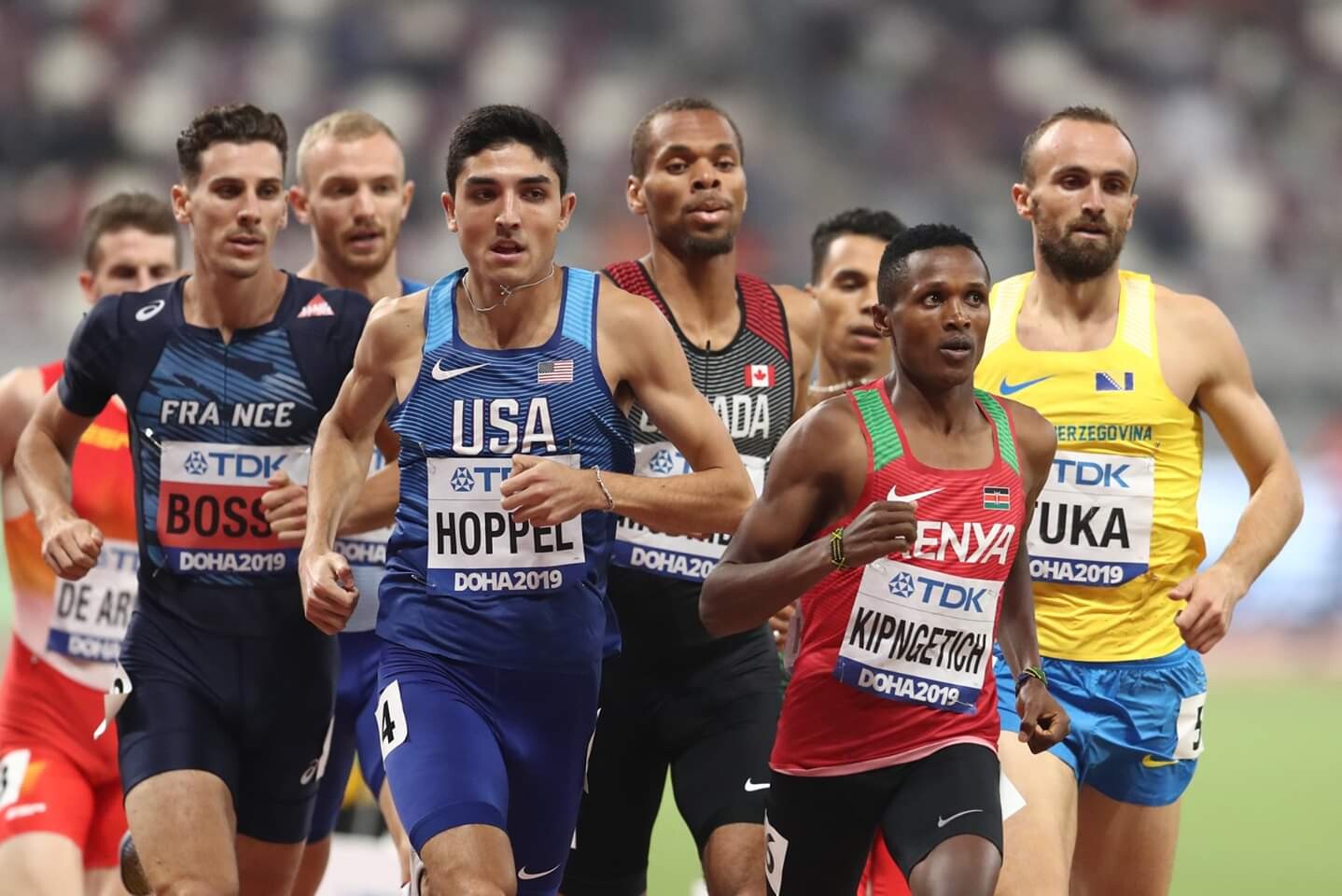
“I have been out for quite some time. I missed the Tokyo Olympics and last year’s Worlds in Oregon. I am of course happy to be back in the national team. It has not been easy in recent years,” Ngeno told Citizen Digital.
“I secured employment with the Prisons Service after which I had to work so hard to reduce weight and come back to my fitness levels. I am happy I am now fully fit.”
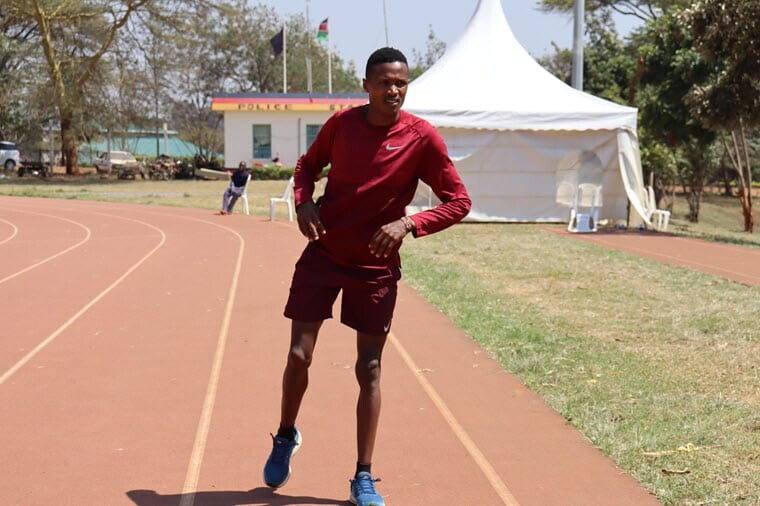
Despite failing to advance past the semis stage in Doha, Ngeno says he drew valuable lessons ahead of this year’s event.
“It was my first World Championship with the senior team. I learned a lot especially on how to control the race in the heats and semis. I am now experienced enough to handle pressure in such an event,” he said.
The 2018 world junior silver medalist believes Kenyans can sweep the podium in the two-lap race where he will team up with defending champion Emmanuel Korir, Olympic silver medalist Ferguson Rotich and the fast-rising Emmanuel Wanyonyi.
“I think it is a very strong team. We need to just manage ourselves in the heats and semis and if we all make it to the finals it will be very difficult to beat us,” said Ngeno who trains at the Kericho Athletics Camp.
(08/11/2023) Views: 444 ⚡AMPby Gilbert Kiprotich
World Athletics Championships Budapest 23
From August 19-27, 2023, Budapest will host the world's third largest sporting event, the World Athletics Championships. It is the largest sporting event in the history of Hungary, attended by athletes from more than 200 countries, whose news will reach more than one billion people. Athletics is the foundation of all sports. It represents strength, speed, dexterity and endurance, the...
more...Obiri, Sisson to Face Off in ASICS Falmouth Road Race
Two high-profile and highly-competitive women in distance running will headline the international elite field at next week’s ASICS Falmouth Road Race. Hellen Obiri and Emily Sisson, both making their Falmouth debut, will face off on the roads for the third time this year when they line up for the seven-mile race on Sunday, Aug. 20.
This year, Obiri has won half marathons in the United Arab Emirates and New York City before winning the Boston Marathon in April. Since her Boston victory, Obiri has also won the B.A.A 10K and was runner-up in the Mastercard New York Mini 10K. Last weekend, she won the Beach to Beacon 10K in Maine.
“The roads and the people of Massachusetts have been good to me so far this year,” said Obiri, a two-time world champion and two-time Olympic silver medalist for Kenya. “I know it will not be easy, but I hope I can keep my record going. It will be nice to test myself before I get back into my preparations for an autumn marathon.”
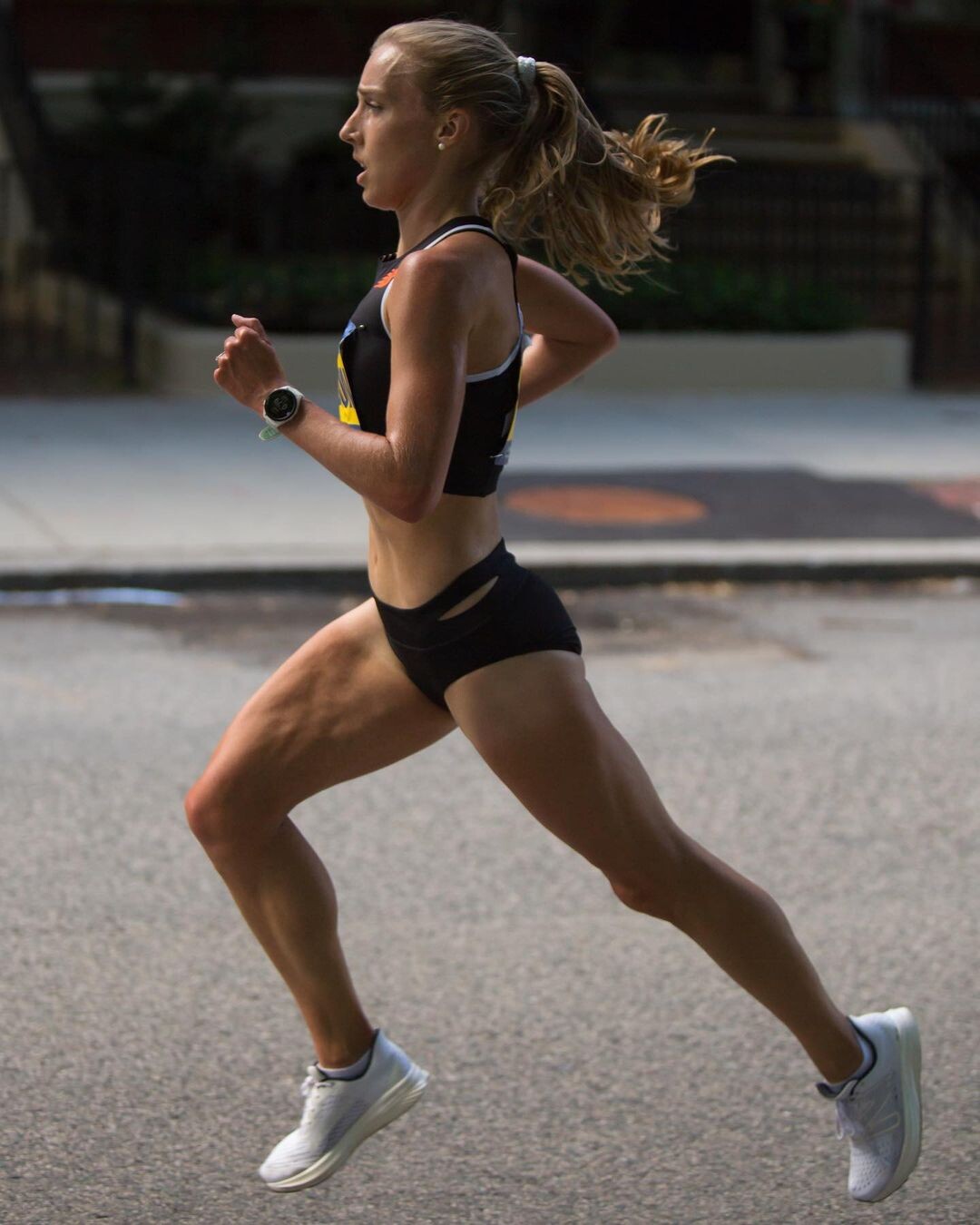
For Sisson, Falmouth is part of the build up to this fall’s Bank of America Chicago Marathon where she will attempt to lower her own American record of 2:18:29 in the event. This past January, she also set the American record in the half-marathon (since broken by Kiera D’Amato) and won the USATF 15km title for the third consecutive year.
“I have not had the chance to race Falmouth before, but I have wanted to ever since I started spending summers in New England,” said Sisson, a graduate of Providence College. “I’m excited for my first Falmouth Road Race to be in the build up to Chicago. I cannot wait to line up in a few weeks time!”
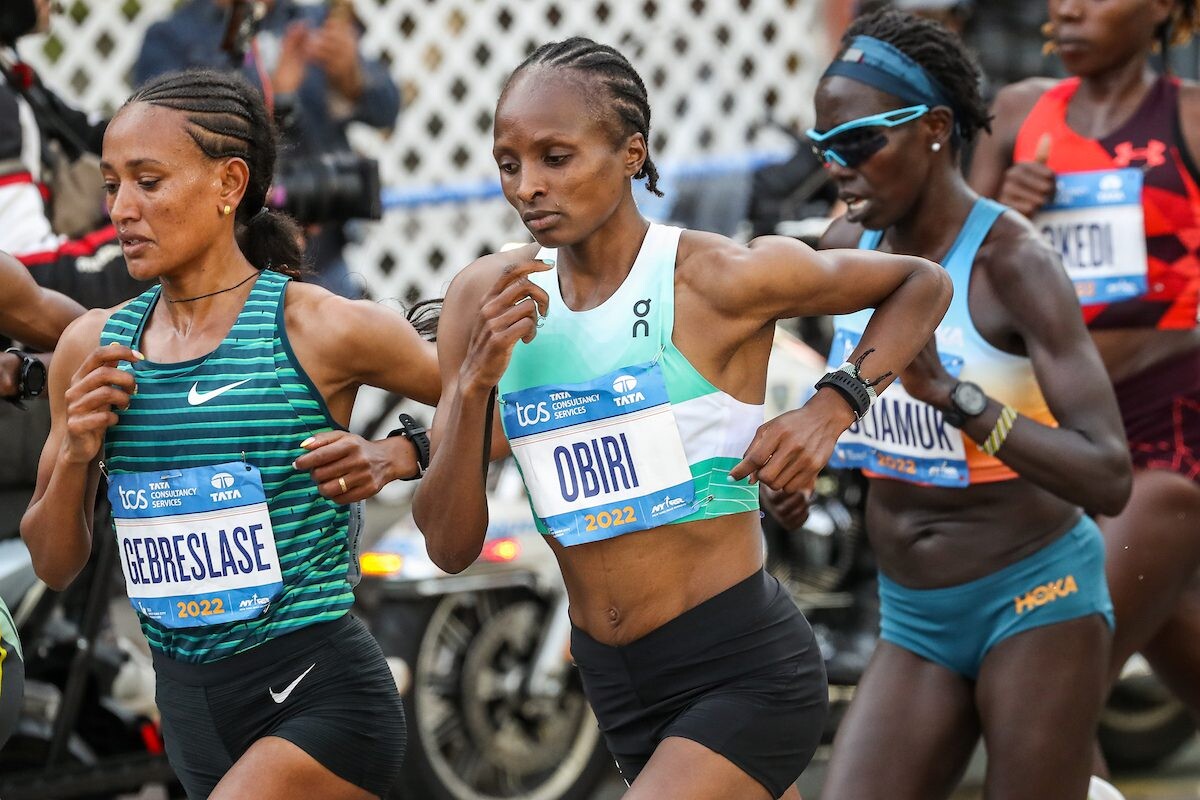
Other top contenders include 2021 Falmouth champion and last year’s runner-up Edna Kiplagat, U.S. 5K Champion Weini Kelati and reigning U.S. 10 Mile champion Fiona O’Keeffe.
Fresh off a victory at last week’s Beach to Beacon 10K in Maine, Addisu Yihune will attempt back-to-back New England wins. The 20-year-old Ethiopian leads the men’s field.
Last year’s third place finisher, David Bett is returning in 2023. Other contenders include 2022 Los Angeles Marathon champion John Korir, two-time Pittsburgh Half Marathon winner Wesley Kiptoo and 2019 NCAA Cross Country Champion Edwin Kurgat.
In the Wheelchair Division, sponsored by Spaulding Rehabilitation, Daniel Romachuk, who set the course record in 2019, will chase his fifth Falmouth win. He championed last year’s race by three and a half minutes over Hermin Garic, the 2021 Falmouth winner who is also returning this year.
In the women’s race, 2022 champion and course record holder Susannah Scaroni will defend her title. Scaroni has dominated the road circuit in 2023 winning the Boston Marathon, New York Mini 10K and AJC Peachtree Road Race in Atlanta. Scaroni will face 2021 women’s champion Emelia Perry and 2022 third place finisher Yen Hoang who won the B.A.A. 10K earlier this year.
The 51st running of the ASICS Falmouth Road Race is the culmination of an entire weekend of running that kicks off with the Falmouth Elite Mile, held this year on Friday evening for the first time. The women’s field is led by former Oregon standout Susan Ejore of Kenya and three-time NCAA Champion Dani Jones. It also includes Belmont, Massachusetts high school phenom Ellie Shea.
The men’s race will welcome the deepest men’s field in its history. Olympic gold medalist Matthew Centrowitz will make his first trip to Falmouth to toe the start line with some of the nation’s top middle-distance runners. Past winner Craig Engels also returns this year as does Seekonk, MA native Johnny Gregorek, a World Championship qualifier who won the Guardian Mile in Cleveland last month and Vince Ciattei who won last weekend’s Beale Street Mile in Memphis.
In the Wheelchair division, both Romanchuk and Garic will also compete as will Scaroni, Perry and Hoang in the women’s race.
“From the track to the roads, there is going to be exciting racing to witness all weekend in Falmouth,” said Jennifer Edwards, Executive Director of Falmouth Road Race, Inc. “It’s an honor to welcome so many legends and future legends of the sport who will lead our field of 10,000 to the finish line.”
The Falmouth Track Festival which includes the Falmouth Elite Mile will be held at 7 p.m. Friday, Aug. 18 at Falmouth High School. The ASICS Falmouth Road Race gets underway at 9 a.m. on Sunday, Aug. 20 with athletes running the traditional course starting in Woods Hole and ending at Falmouth Heights Beach.
(08/11/2023) Views: 495 ⚡AMPFalmouth Road Race
The Falmouth Road Race was established in 1973 and has become one of the premier running events of the summer season. Each year the race draws an international field of Olympians, elite runners and recreational runners out to enjoy the scenic 7-mile seaside course. The non-profit Falmouth Road Race organization is dedicated to promoting health and fitness for all in...
more...Registration for 128th Boston Marathon presented by Bank of America Begins September 11
With nearly one month to go until registration opens for the 128th Boston Marathon presented by Bank of America, the Boston Athletic Association reminds athletes of what to expect during registration week, September 11-15. The 128th Boston Marathon will feature a field size of 30,000 athletes and will mark the first Boston Marathon with Bank of America as presenting partner.
REGISTRATION TIMETABLE
Qualifier registration will open on Monday, September 11 at 10:00 a.m. ET and will close on Friday, September 15, 2023, at 5:00 p.m. ET. The B.A.A. will use the same registration process for qualified runners as it used for the 2021, 2022, and 2023 races, allowing any athlete who has achieved a currently valid Boston Marathon qualifying time to submit a registration application during Registration Week, September 11–15.
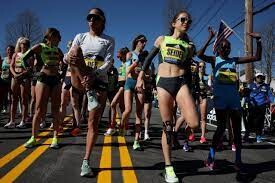
Registration will be held within the B.A.A.’s online platform Athletes' Village. Registration is not on a first-come, first-served basis – all applications will be accepted until 5:00 p.m. ET on Friday, September 15 and treated in the same manor regardless of when they are submitted during the application period.
PRE-VERIFY YOUR QUALIFYING TIME
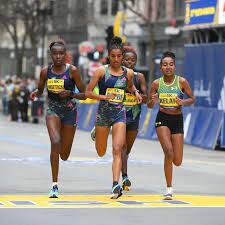
To enhance the Boston Marathon registration experience, the B.A.A. is offering a special pre-verification period for 128th Boston Marathon qualifying times. Athletes who plan to register for the 128th Boston Marathon between September 11-15 may take part in this pre-verification, helping to expedite their registration application in September.
Please note that verifying a qualifying time during the pre-verification period does not enter you in the Boston Marathon. Rather, it simply allows us to confirm and verify one’s qualifying time early so that when applying between September 11-15, the athlete’s qualifying information is already in our system.
Pre-verification submission is open within Athletes’ Village through August 23. Additional information is available here.
QUALIFYING WINDOW & STANDARDS
The 2024 Boston Marathon qualifying window began on September 1, 2022, and will close at 5:00 p.m. ET on Friday, September 15, 2023. If space is still available after the conclusion of Registration Week, registration will re-open on Monday, September 17.
Qualifying standards for the 128th Boston Marathon can be found here. Achieving a Boston Marathon qualifying standard does not guarantee acceptance into the event. Those who are fastest among the pool of applicants in their age and gender group will be accepted.
ENTRY FEE
The entry fee for accepted qualifiers will be $230 USD for United States residents and $235 USD for international residents. Participants will have the opportunity to purchase registration insurance at the point of registration. Entry fees will only be processed once an athlete is accepted into the Boston Marathon.
129TH BOSTON MARATHON
The qualifying window for the 129th Boston Marathon, scheduled to take place on April 21, 2025, will begin on September 1, 2023. Registration details for that race will be announced following the 2024 Boston Marathon.
ABOUT THE BOSTON ATHLETIC ASSOCIATION (B.A.A.)
Established in 1887, the Boston Athletic Association is a non-profit organization with a mission of promoting a healthy lifestyle through sports, especially running. The B.A.A. manages the Boston Marathon, and supports comprehensive charity, youth, and year-round programming. The Boston Marathon is part of the Abbott World Marathon Majors, along with international marathons in Tokyo, London, Berlin, Chicago, and New York City. Starting in 2024, the Boston Marathon’s presenting partner will be Bank of America. The 128th Boston Marathon is scheduled to take place on Monday, April 15, 2024. For more information on the B.A.A., please visit www.baa.org.
(08/10/2023) Views: 398 ⚡AMPBoston Marathon
Among the nation’s oldest athletic clubs, the B.A.A. was established in 1887, and, in 1896, more than half of the U.S. Olympic Team at the first modern games was composed of B.A.A. club members. The Olympic Games provided the inspiration for the first Boston Marathon, which culminated the B.A.A. Games on April 19, 1897. John J. McDermott emerged from a...
more...The core exercises all runners should be doing
Core strength is important for runners as it stabilizes the body, enhances running posture, and optimizes overall performance. While there are hundreds of exercises that improve core strength, not all are created equal. Runners should focus on performing anti-rotation exercises if they want to move the performance needle.
Anti-rotation for better running form

A strong core ensures efficient energy transfer from the lower body to the upper body, reducing wasted movement and potential injury. For runners, core exercises that focus on anti-rotation are particularly beneficial. These exercises, like Pallof presses and plank variations with controlled twists, mimic the demands of running by challenging the core to resist rotation. This reinforces stability during each stride, preventing excessive twisting and maintaining proper alignment, ultimately improving running efficiency and safeguarding against imbalances.
Try adding the following exercises to your strength training regime to improve your running form and run faster for longer.
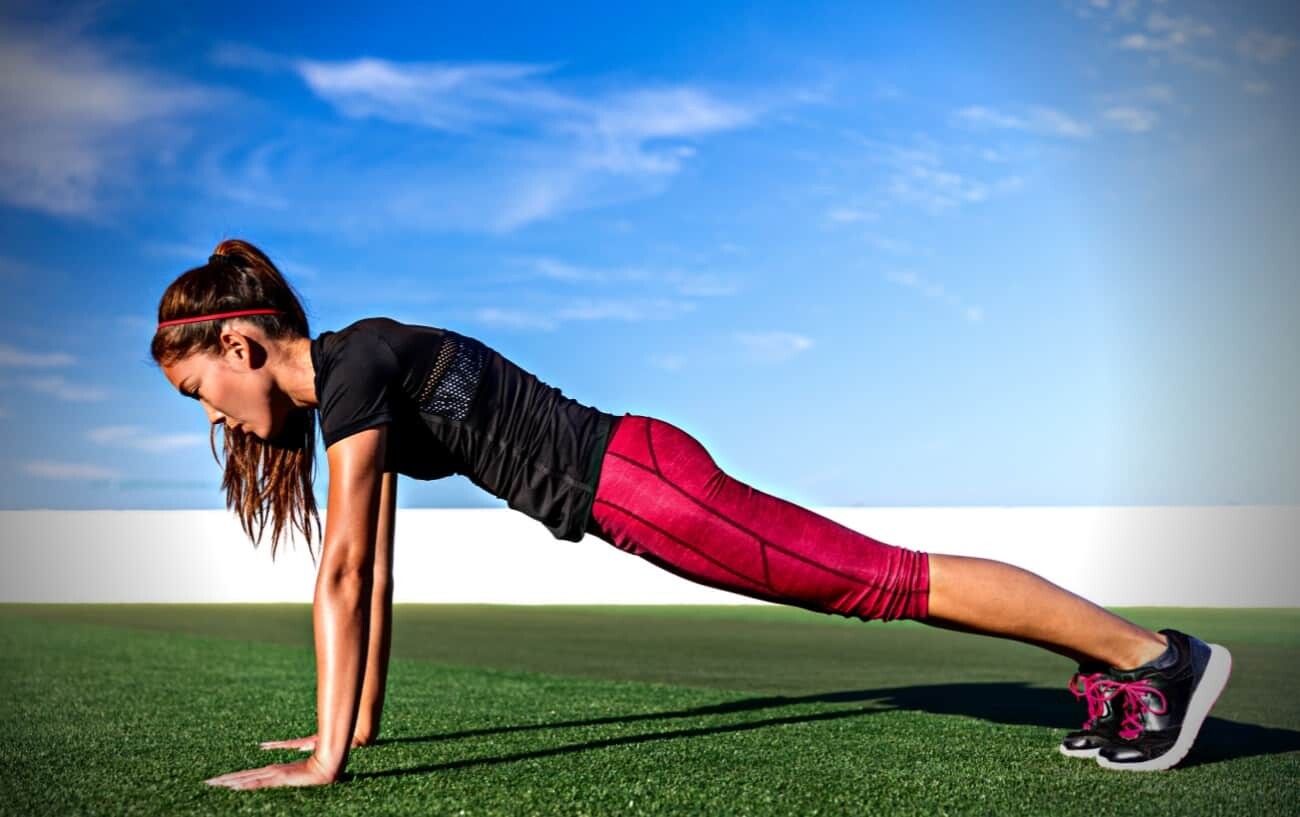
Exercise 1: Pallof press
Step 1. Wrap a resistance band around a pole or stable object, holding the opposite end of the band in both hands at your chest. (note this can also be done using a cable machine at a gym)
Step 2: Standing so that the pole is to your left, take a few steps to your right until there is some tension on the band.
Step 3: Brace your core and press your hands out in front of you until your arms are straight, resisting the urge to allow your torso to turn toward the pole.
Step 4: Briefly pause once your arms are fully extended, then slowly return to the starting position. Repeat 10-20 times on both sides, for three sets.
Exercise 2: Pallof press holds
Step 1. Wrap a resistance band around a pole or stable object, holding the opposite end of the band in both hands at your chest. (note this can also be done using a cable machine at a gym)
Step 2: Standing so that the pole is to your left, take a few steps to your right until there is some tension on the band.
Step 3: Brace your core and press your hands out in front of you until your arms are straight, resisting the urge to allow your torso to turn toward the pole.
Step 4: Hold your arms out straight for up to 30 seconds, then return to the starting position. Repeat three times on each side.
Exercise 3: Plank taps
Step 1: Get into a plank position, either on your elbows or your hands.
Step 2: Bracing your core and keeping your back flat, reach out in front of you, extending your arm as far as you can, and tap the ground (you can also place a small object in front of you if you prefer).
Step 3: Return to the starting position, and repeat on the other side. Throughout the movement, resist the urge for your body to drop or shift to one side or the other. Repeat 10 times on each side, for three sets.
Exercise 4: Half-kneeling single-arm row
Step 1: Loop an exercise band around a sturdy object. Get into a half-kneeling position with your left leg in front of you bent at 90 degrees. (note this can also be done using a cable machine at a gym)
Step 2: Grasp the band with your right hand, leaving your left arm at your side (try not to use this arm for stability).
Step 3: Squeezing your shoulder blade, pull the band back until your right elbow is in line with your torso. Hold, then slowly return to the starting position.
Step 4: Repeat for 10 repetitions on your right, then do the same on your left. Do this three times for each side.
(08/10/2023) Views: 473 ⚡AMPby Brittany Hambleton
Record breakers and winners in Budapest to get huge perks
Over 2,000 athletes from around 200 countries-including Kenya are set to benefit from the world record programme during this month's World Athletics Championships in Budapest.
During the nine-day global extravaganza, World Athletics will once again run its world record programme that rewards record breakers.

Athletes who will set a world record will be eligible for a special award of US$100,000 offered by TDK and World Athletics’ new Inside Track platform.
The performance must be an improvement on the existing World Athletics world record. Performances that equal the existing world record will not be eligible for a world record award.

During last year's World Athletics Championships in Oregon, Eugene, USA’s Sydney McLaughlin-Levrone and Sweden’s Mondo Duplantis were rewarded for their performances.
McLaughlin-Levrone clocked 50.68 setting a new 400m hurdles world record bettering her previous time of 51.41.
Duplantis took the pole vault to another level again by clearing the 6.21m mark also bettering his previous jump of 6.20 set during the World Athletics Indoor Championships in Serbia in March.
The Japanese electronics company TDK will offer the awards for men's events while the women’s world record programme will be supported by Inside Track.
For the mixed 4x400m relay, the programme will be supported by both TDK and Inside Track. Aside from the world record programme, a total of US$8,498,000 in prize money will be on offer in Budapest.
Individual winners will get US$70,000, US$35,000 for second-placed and US$22,000 for bronze. Positions four to eight will receive between US$16,000 and US$5000.
Relays winners will get US$80,000 with second and third placed receiving US$40,000 and US$20,000 respectively. Positions four to eight will get between US$16,000 and US$4000.
(08/10/2023) Views: 442 ⚡AMPby Samuel Nganga
World Athletics Championships Budapest 23
From August 19-27, 2023, Budapest will host the world's third largest sporting event, the World Athletics Championships. It is the largest sporting event in the history of Hungary, attended by athletes from more than 200 countries, whose news will reach more than one billion people. Athletics is the foundation of all sports. It represents strength, speed, dexterity and endurance, the...
more...The story behind the success of the Dicks Sporting Good Pittsburg Marathon
Pittsburgh hosted its first Dick’s Sporting Good Marathon on May 5th, 1985. The streets were closed to traffic as music filled the air. People lined the streets to cheer on the racers that went by. In addition to the marathon, there was a half marathon, a team relay, a kids’ race and 5K. Elite and seeded runners, wheelchair racers, and walkers took to the street each May.
Certified Marathon
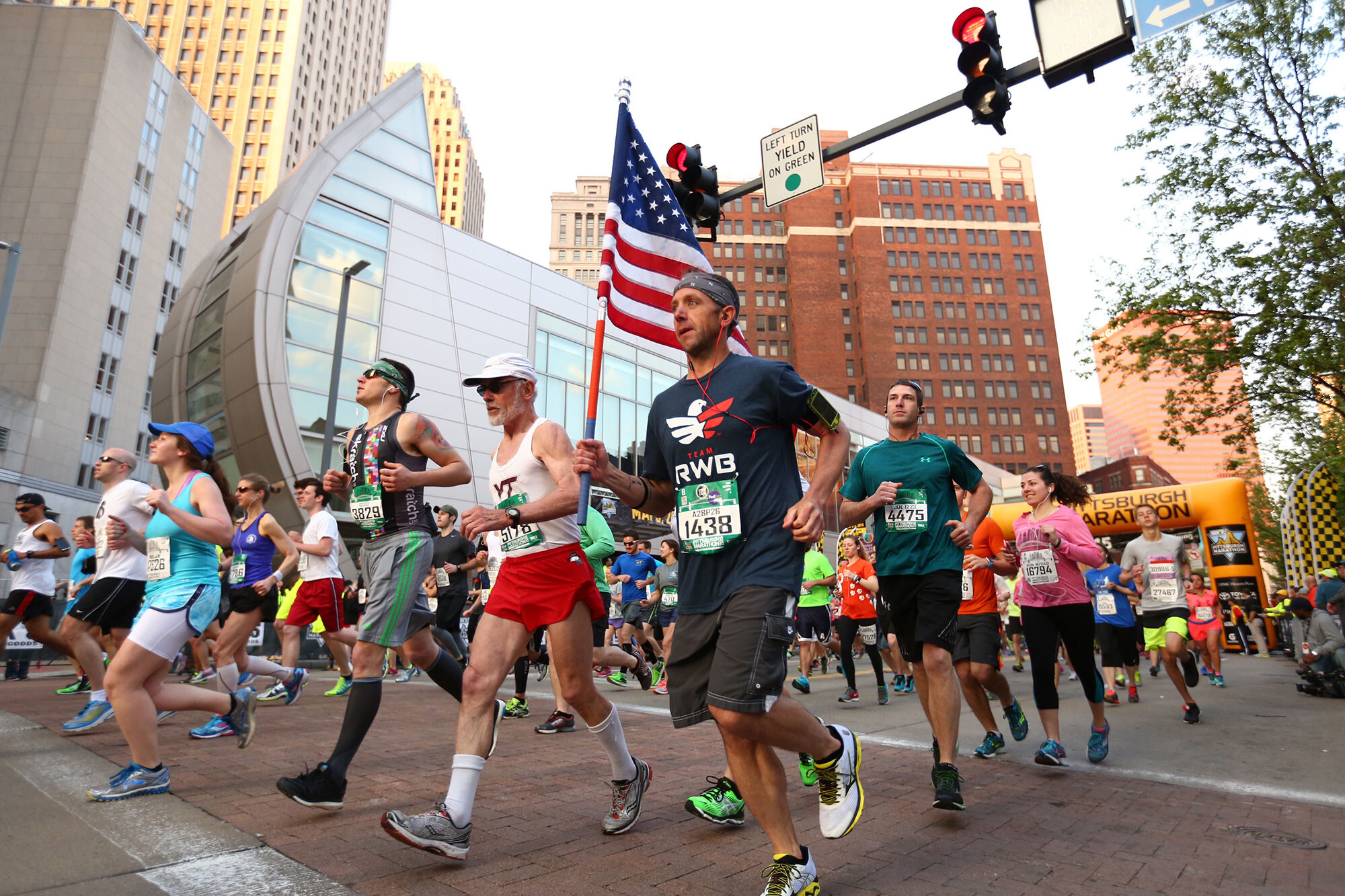
The Dick’s Sporting Goods Pittsburgh Marathon course is certified by USA Track and Field. The purpose of such a certification program is to produce racecourses of accurately measured distances. The USATF explains, “for any road running performance to be accepted as a record or be nationally ranked, it must be run on a USATF-certified course”.The Pittsburgh Marathon is also a qualifying course for the Boston Marathon. In 1998 The Pittsburgh Marathon hosted the U.S. Olympic Women’s Trials. It hosted the Men’s Trials in 2000. It has also served as the U.S. Men’s National Championship course three times. In 1986 it was the site of the National Wheelchair Championship.
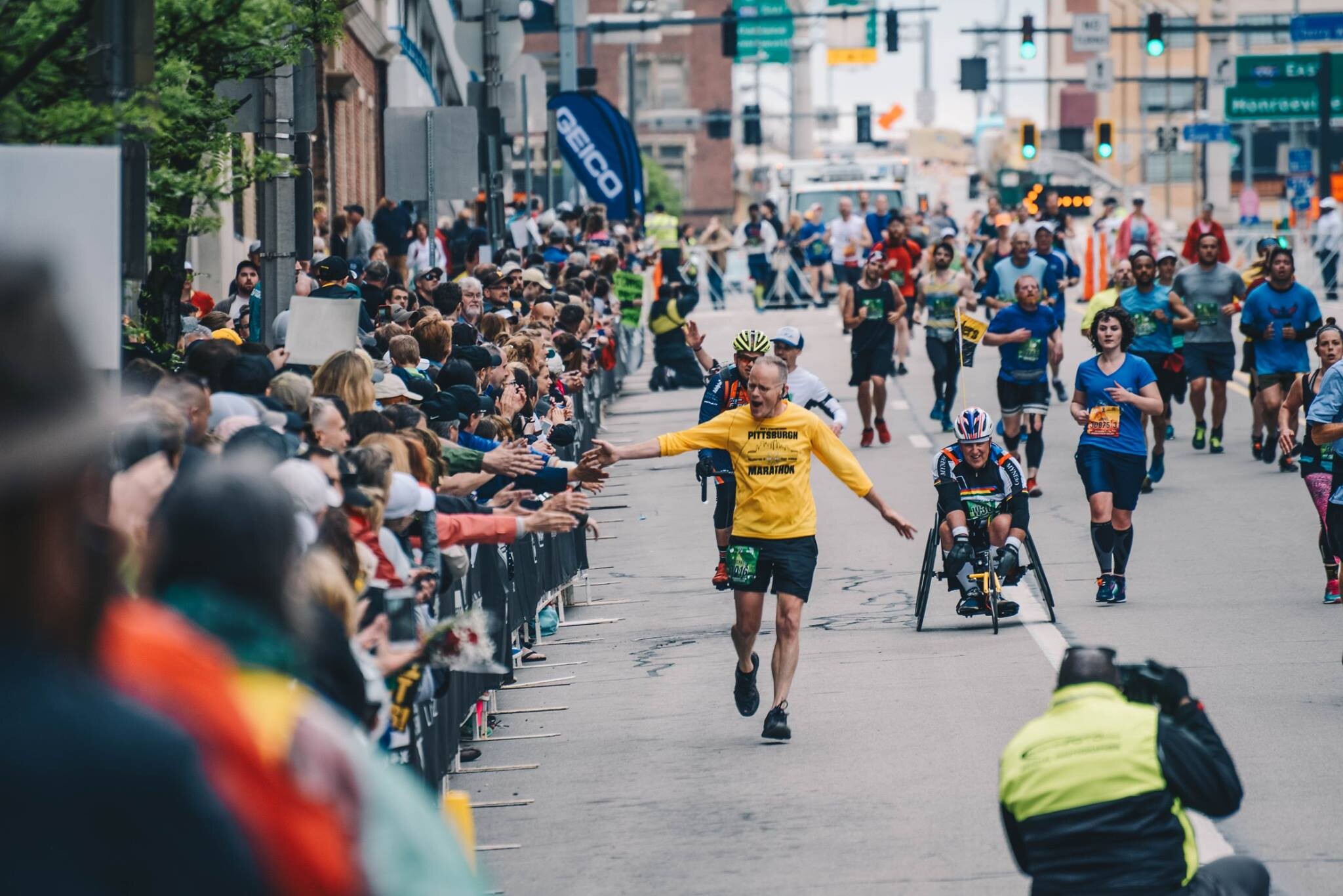
The race attracts athletes from all over the globe. John Kagwe, from Kenya, holds the men’s course record. He set the record in 1995 with a staggering 2 hours, 10 minutes and 24 second time. American, Margaret Groos set the course record for women in 1988. She ran the course at the incredible time of 2 hours, 29 minutes and 50 seconds. In 1994 and then again in 2000, Pittsburgh resident Tammy Slusser won the women’s title.
As you are getting ready to run a marathon you also might enjoy making some money online. Many runners are enjoying the challenge. Click on link to find out more.
https://www.slotozilla.com/au/best-payout-casinos
The Pittsburgh Marathon ran consecutively until 2003. During those years, UPMC was the largest sponsor. Unfortunately, when the city experienced financial distress UPMC pulled out. Mayor Tom Murphy concluded that the city couldn’t handle the financial burden of hosting the marathon that year, so he canceled it.
Thankfully, after a five-year hiatus, Dick’s Sporting Goods revived the marathon in 2009. It came roaring back, attracting 9,000 runners. Participation has increased with each succeeding year. This caused a need for some modifications to the course to handle the increasing number of athletes.
The next marathon is set for May 5, 2024. It is a race you should put on your calendar. And if you are not ready to run 26.2 miles there are other events too.
(08/10/2023) Views: 505 ⚡AMPSharon Lokedi, Hellen Obiri, Peres Jepchirchir and Brigid Kosgei to Race 2023 TCS New York City Marathon
Defending TCS New York City Marathon champion Sharon Lokedi, reigning Boston Marathon and United Airlines NYC Half champion Hellen Obiri, Olympic gold medalist and 2021 TCS New York City Marathon champion Peres Jepchirchir, and marathon world-record holder Brigid Kosgei will headline the women’s professional athlete field at the 2023 TCS New York City Marathon on Sunday, November 5.
When the four Kenyans line up in New York, it will be the first time in event history the reigning TCS New York City Marathon champion, Boston Marathon champion, Olympic champion, and world-record holder line up against each other in the TCS New York City Marathon.
Lokedi won the TCS New York City Marathon in her marathon debut last year, pulling away in the final two miles to finish in 2:23:23 and became the eighth athlete to win the race in their true 26.2-mile debut. In preparation for the marathon, Lokedi had raced the United Airlines NYC Half and the Mastercard New York Mini 10K, finishing fourth and second, respectively, in those races.
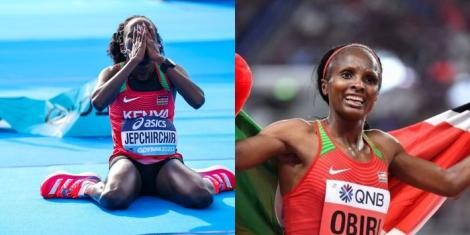
“Last year, I came into the TCS New York City Marathon with the goal of being in the thick of the race, and the result was better than I could have ever hoped for,” Lokedi said. “This year, I’m returning with a different mindset, hungry to defend my title and race against the fastest women in the world.”
Obiri is a two-time Olympic medalist and seven-time world championships individual medalist who earlier this year won the Boston Marathon in her second-ever attempt at the distance, in addition to winning the United Airlines NYC Half in her event debut. Obiri holds the Kenyan record for 3,000 meters and represented Kenya at the Rio 2016 and Tokyo 2020 Olympics, earning silver medals in the 5,000 meters at both. In her marathon debut last year in New York, she finished sixth.
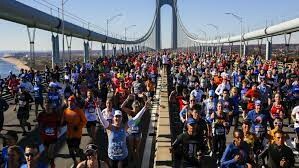
“With a year of marathon experience now under my belt, a win in Boston, and my move to the U.S., I’m coming to New York this year with more confidence and in search of a title,” Obiri said. “I’m excited to show the people of New York what I’m capable of and that my win at the United Airlines NYC Half in March was just the beginning.”
Jepchirchir is the only athlete to have won the Olympic marathon, TCS New York City Marathon, and Boston Marathon. She is also a two-time world championships gold medalist in the half marathon. In 2021, she won the Tokyo Olympic marathon to claim Kenya’s second consecutive gold medal in the event. Four months later, she won the TCS New York City Marathon, finishing in 2:22:39, the third-fastest time in event history and eight seconds off the event record. In April 2022, in a back-and-forth race that came down to the final mile, she fended off Ethiopian Ababel Yeshaneh to take the Boston Maraton title on Boylston Street in her debut in the race in 2:21:02. This April, she recorded another podium finish, taking third at the TCS London Marathon.
“I was so disappointed that I couldn’t defend my title in New York last year due to an injury, and winning again in Central Park has been my main motivation as I begin my preparations for the autumn,” Jepchirchir said. “New York is an important step in defending my Olympic gold medal next summer in Paris, and I will do my best to make my family and my country proud.”
Kosgei is the world-record holder in the marathon and has won an Olympic silver medal and five Abbott World Marathon Majors races; she will now make her TCS New York City Marathon debut. In 2019, Kosgei broke Paula Radcliffe’s 16-year-old world record by 81 seconds, running 2:14:04 to win the Chicago Marathon. It was her second Chicago Marathon victory, as she’d also won in 2018. Additionally, she won back-to-back London Marathons in 2019 and 2020, the Tokyo Marathon in 2022, and the silver medal at the Tokyo Olympic marathon.
“I am very excited to make my New York City debut this fall, and attempt to win my fourth different Major,” Kosgei said. “I am not worried about the course, as I have had success in hilly marathons before, but New York has always been about head-to-head competition, and I know I must be in the best possible shape to compete with the other women in the race.”
The 2023 TCS New York City Marathon women’s professional athlete field is presented by Mastercard®. The full professional athlete fields will be announced at a later date.
The 2023 TCS New York City Marathon on Sunday, November 5 will have 50,000 runners and be televised live on WABC-TV Channel 7 in the New York tristate area, throughout the rest of the nation on ESPN2, and around the world by various international broadcasters.
(08/10/2023) Views: 444 ⚡AMPby Running USA
TCS New York City Marathon
The first New York City Marathon, organized in 1970 by Fred Lebow and Vince Chiappetta, was held entirely in Central Park. Of 127 entrants, only 55 men finished; the sole female entrant dropped out due to illness. Winners were given inexpensive wristwatches and recycled baseball and bowling trophies. The entry fee was $1 and the total event budget...
more...Three signs you may be running too much
Feeling sluggish and worn out, even after a great night’s sleep and some nutritious food? Overtraining may be the culprit, and while it can be challenging to pinpoint, there are a few red flags to look out for. Defined as a condition that can occur when a runner pushes their training beyond what their body can adequately recover from, overtraining can lead to a decline in performance and potential health issues.
While some fatigue is normal in a tough training block, over time the effects of training too hard add up and can lead to burnout or other running-related ailments. Here’s how to know whether you are overdoing it.
1.- Performance plateau or decline
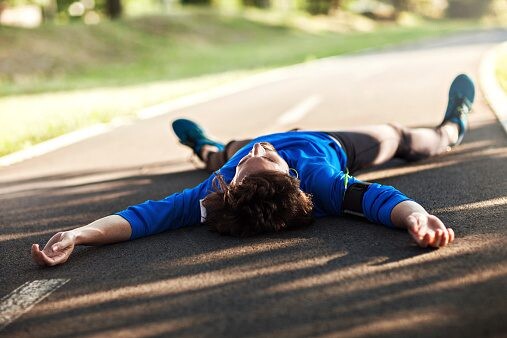
Performance decline is one of the most noticeable signs of overtraining. Take note if you suddenly have a tough time hitting paces that used to be easy for you, or if your performance plateaus or starts to decline despite consistent training efforts. Your body may be struggling to recover adequately if you’re getting slower even when you’re putting in more effort.
2.- Persistent fatigue and loss of motivation

Feeling exhausted despite fitting in adequate rest? Overtraining (or overreaching) often leads to chronic fatigue that just doesn’t seem to get better, even when you’re logging a solid night of sleep and taking rest days. If you feel tired, lethargic, and lack motivation to run or train, it might be a sign that your body is overstressed. If a few extra recovery days don’t get some pep back in your step, make some adjustments to your schedule and check in with your physician or a registered dietician.
3.- Increased resting heart rate and insomnia
Overtraining can disrupt your sleep patterns and lead to difficulties falling or staying asleep. Monitoring your resting heart rate (RHR) can also provide valuable insight into your body’s stress levels, with a continuously elevated resting heart rate potentially indicating overtraining or illness.
What to do
Take a few extra days off, and notice if you bounce back. If you’re experiencing the same challenges even after some time on the couch, it may be time to check in with a medical professional.
(08/09/2023) Views: 416 ⚡AMPby Keeley Milne
Florence Kiplagat will make her return into competitive athletics at the Stockholm Marathon
Her last competition was during the 2019 Outdoor Meeting in Israel where she competed over the 10,000m and finished third.
The 2009 World Cross-Country champion Florence Kiplagat will make her return into competitive athletics at the Stockholm Marathon 0n Saturday, 3rd June 2023.
She has been out of competition for four years since her last competition was during the 2019 Outdoor Meeting in Israel where she competed over the 10,000m and finished third. The Sirgoech Secondary School alumnus is one of the leading entrants to the event.
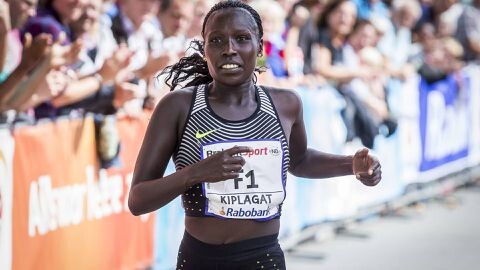
She will be lining up with a Personal Best time of 2:19:44, a time she clocked while winning the 2011 Berlin Marathon. She is the fastest in the field that has also attracted the Ethiopian duo of Tadelech Bekele and Sifan Melaku.
Kiplagat will be testing if she still has the mileage in her against the duo who unlike her, have been competing. Melaku opened her season with an impressive fifth-place finish at the Mumbai Marathon and she will be keen to improve on that as she takes on her opponents.
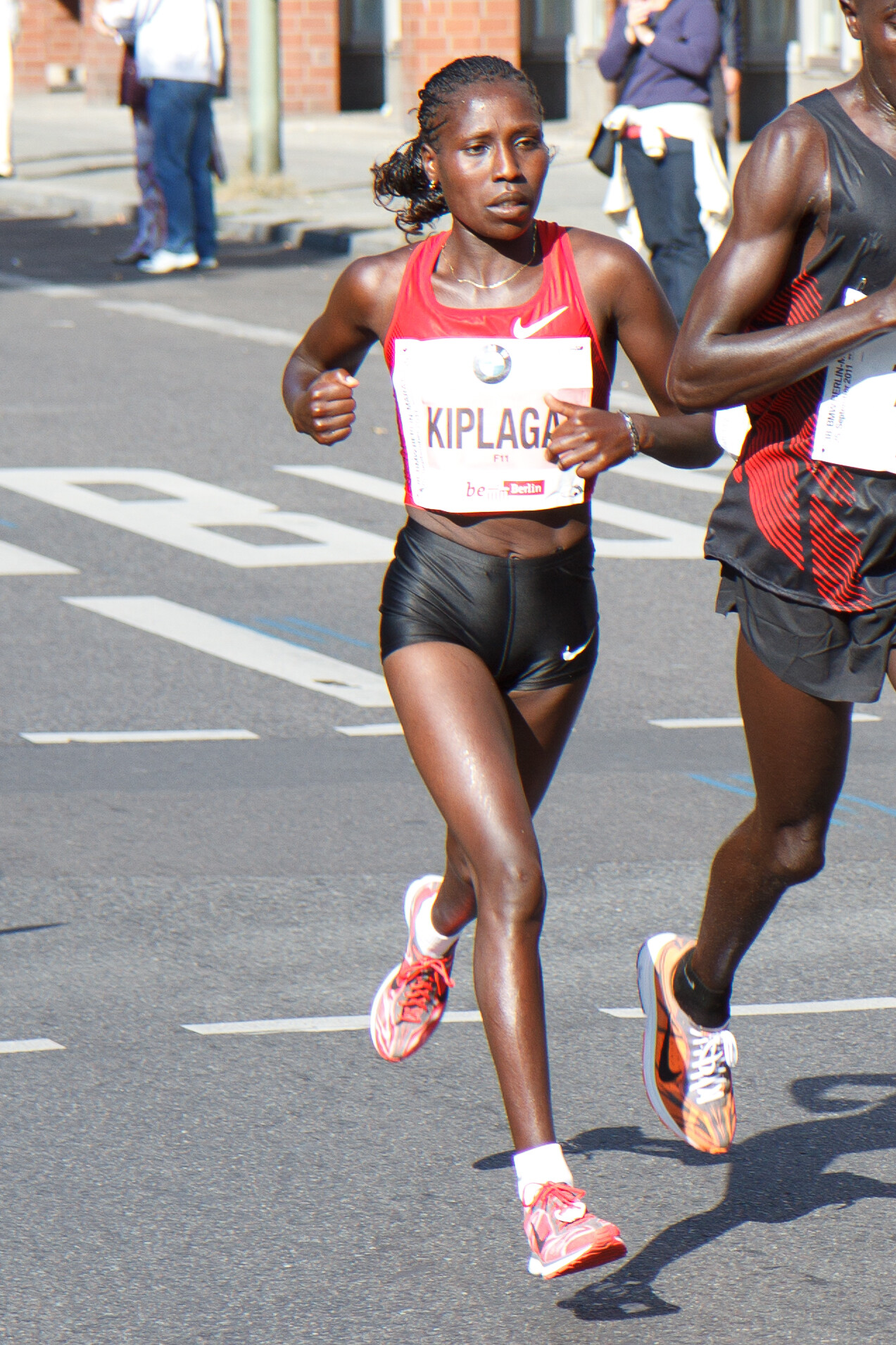
On her part, Tadelech will be opening her season in Stockholm. The last time she was in competition was during the Zurich Marathon in May 2022 where she also finished fifth.
Kiplagat has a decorated career owing to the fact that she ruled the track and road races before taking the break.
She is a former world half marathon record holder, status she achieved after winning the Barcelona Half Marathon in 2015. Winning the cross-country senior race title in 2009 also saw her become the second Kenyan to achieve the gong after Hellen Chepngeno who won in 1994.
Kiplagat also boasts of two Berlin Marathon titles, one in 2011 when she was debuting and the other one during the 2013 edition. She is also a two-time Chicago Marathon champion.
(08/09/2023) Views: 490 ⚡AMPby Abigael Wuafula
Stockholm Half Marathon
Stockholm Half marathon has a unique course. Starting and running in the area between the castle, the Riksdaghuset and the Opera is special. And running in the middle of town is really a special feeling. The half marathon in Stockholm has been called Stockholm Halvmarathon (Stockholm Half Marathon) since 2007 but the race is actually much older. In 1927, the...
more...Brit who once beat Mo Farah jailed for stealing from bed and breakfast
Ricky Stevenson, who in 2010 beat fellow Brit Mo Farah to the finish line on the short course of the Great Edinburgh Cross Country International, was recently sentenced to two-and-a-half years in prison for stealing nearly C$70,000 from a bed and breakfast he was managing.
Stevenson, 34, of Skelton-in-Cleveland in North Yorkshire was handed the sentence in late June after admitting in February to stealing from the business in the village of Hinderwell in northeast England to fund his addiction to cocaine and gambling, according to North Yorkshire Police.
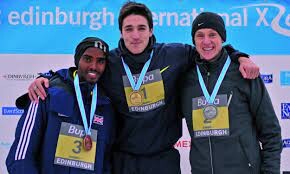
In a statement, police say the thefts, which occurred in 2020 as businesses were struggling to survive during COVID-19 pandemic, left the business “on the brink of collapse” as it continued to scrape by with the help of government-backed pandemic loans. In December of that year, the owner of the B&B started to receive warning letters from utility companies and other businesses over unpaid bills.
Police say Stevenson initially blamed shortfalls in the business’s bank account on guests not showing up due to COVID restrictions. In January 2021, however, Stevenson broke down and admitted to stealing the money to fund his addiction to cocaine and gambling.
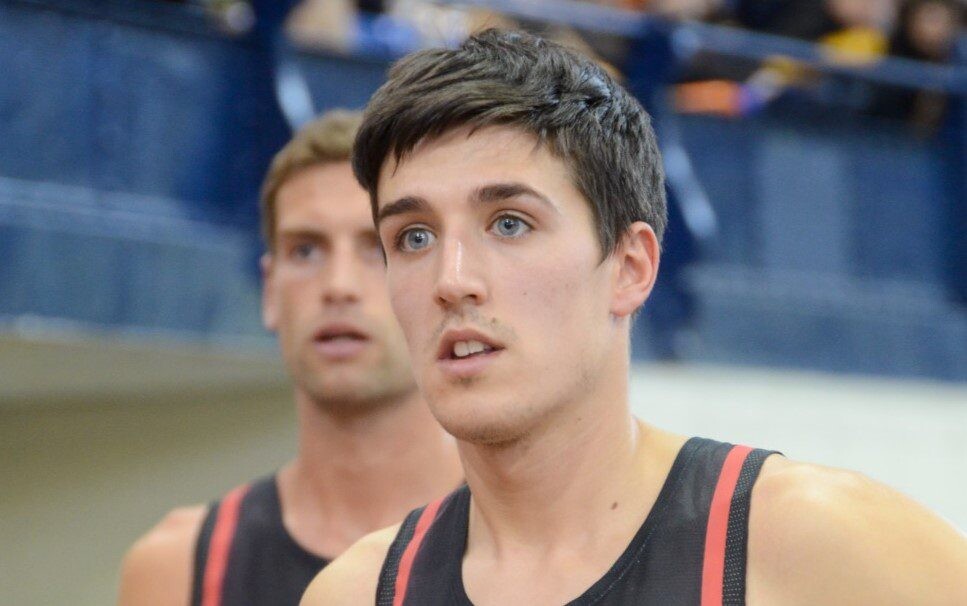
Stevenson stole the money through unauthorized transactions from the business account to his personal account, cheques made out to himself, cash withdrawals using the business’s bank card and taking cash payments directly from guests who were told the card machine was out of order, said Police Staff Investigator Rob Henderson.
“Ricky Stevenson was a close acquaintance of the owner who placed him in a position of trust to manage the holiday business and even let him live rent-free on the site where he worked. He breached this trust in a most outrageous and calculated way for his own selfish gain,” said Henderson. “Stevenson’s actions almost brought about the collapse of the business and caused untold upset and stress for the owner.”
In 2010, Stevenson pulled off a dramatic win over Farah at the Great Edinburgh Cross Country International, when he and Steve Vernon passed Farah in the final section of the snow-covered course to take first and second place respectively.
Athletics Weekly reports Stevenson shifted to music after failing to qualify for the 2012 Olympics, pursuing a career as a DJ. Farah, of course, famously went on to take gold in the 5,000m and 10, 000m at the 2012 London Games.
“I could have chosen to get my head down and done it all again for the next Olympic cycle,” Stevenson told Athletics Weekly at the time. “But for me it was a case of: ‘Do I really want to put all that effort in for something that can be taken away so quickly?’”
(08/09/2023) Views: 505 ⚡AMPby Paul Baswick
What to do the week before a half marathon
The week before a half marathon can make or break one’s performance. Months of training can be wasted by trying to fit in one last workout. On the other hand, resting too much in the week before a half marathon (or even the week before a 5k) can leave one feeling flat and low-energy on race day.
Tapering is a training microcycle that usually takes place the week before a key event, such as a half marathon or a 5k. Longer events like marathons or ultramarathons require longer tapers. Tapering for an event is one of the most complicated and mysterious aspects of athletic performance.
Learn the seven most common tapering mistakes people make the week before a half marathon. Follow the training plan for the week before the race to arrive fresh, fit and fast at the start line!
AVOID THE 7 MOST COMMON TAPERING MISTAKES THE WEEK BEFORE A HALF MARATHON
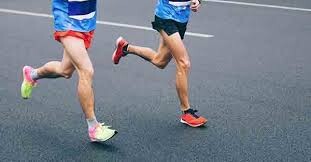
Tapering for a half marathon the week before is easy to mess up. Don’t make these seven mistakes!
1. TRAINING TOO MUCH BEFORE THE RACE

Many amateur runners think it is good to train hard right up until the race, particularly in the last few weeks. But these efforts turn out to be counterproductive. Standing at the start feeling tired is a recipe for disaster.
Instead, decrease total training volume by 30-50% in the week before a half marathon, but not the number of intensity sessions. For example, if the total distance ran two-weeks before the event was 50 km, the total distance should be no more than 35 – 25 km in the final week before the event.
Intensity should not drastically decrease despite overall distance dropping. For example, if a training plan usually calls for two days of intensity per week, still perform those two days of intense training during the final week before the event.
Reduce the number of intervals in a session by 20% of what they were in the last hard week of training. Even though overall running distance decreases, intensity may actually increase relative to the amount of total distance.
The bottom line: a good taper focuses on quality, not quantity. Do short and fast runs; decrease overall training distance by cutting back on endurance run distance.
A good half marathon training plan will have a built-in taper. Check out this FREE half marathon training plan pdf for a good example. Premium adidas Running members also receive exclusive access to customizable training plans from 5k – marathon.
2. NOT WORKING OUT AT ALL
Tapering and reducing training volumes does not mean you should just put your feet up and stop working out. The tricky part about tapering is not to lose the fitness and pace endurance you have built up. The best way to avoid this is by reducing your mileage and focusing on short and intense workout sessions.
In the last week, it is important to get one more hard workout in four or five days before the race. This is designed to give your muscles one last training stimulus and to prepare your body for the demands of the upcoming race.
Retaining intensity while decreasing training volume in the week before a half marathon has been shown to be an effective tapering strategy for most athletes.
3. STRENGTH TRAINING AND UNFAMILIAR EXERCISES
In the week before a half marathon avoid strength training and unfamiliar exercises. Fatigued and/or sore muscles can quickly endanger performance. Of course, continue to do stretching and mobilization exercises if they have been a regular part of training.
One exercise that could be beneficial in the week before a half marathon is a meditation exercise. Often, athletes develop performance anxiety due to the upcoming event and the abundance of energy (if they are tapering correctly). Meditation can help the mind prepare for the demands ahead of it.
Try the guided meditation below by professional ultramarathoner Timothy Olson:
4. CHANGING EQUIPMENT THE WEEK BEFORE AN EVENT
Never change any equipment the week before a key race! This ranges from running shoes to sports nutrition and diet. New running shoes can cause an injury that robs one of even starting a half marathon. Sports nutrition can lead to cramps or GI issues that ruin a race.
5. POOR DIET AND ALCOHOL CONSUMPTION
Letting diet slip the week before a big event is tempting. The body is busy replenishing glycogen stores, appetite is high, but total calorie expenditure should have decreased. This can lead one to give in to sugar cravings, especially if one is nervous about the upcoming event.
Now is more important than ever to eat like an athlete. Give the body the nutrients it needs to freshen up before putting in an amazing performance. Here are the nine best foods for runners. Don’t skimp on carbs the two days before the event, and use this carb calculator.
Having an extra drink or two might feel good and promote relaxation; however, it can also lead to poor sleep and dehydration. If maximal performance is on the line, skip the nightcap in the week before a half marathon.
6. NOT SLEEPING ENOUGH
Sleep is crucial throughout all training phases, but especially in the week before a half marathon. If one has been training hard, the body needs sleep to rebuild and regenerate.
Race nerves can prevent athletes from getting quality sleep in the lead-up to an important event. Here are some practical tips to get fantastic sleep during this crucial week:
Go to bed an hour earlier than usual
Wake up an hour later than usual
Take a nap during the day
Meditate instead of lying in bed awake if having trouble sleeping
If sleep doesn’t come (especially the night before the event), just keep eyes closed and focus on breathing
Don’t stress about not sleeping enough (this will cause sleep issues itself)
7. CATCHING UP ON LIFE
Training for an event sometimes means putting other life factors aside for a time. Weeding the garden, helping kids with homework, cooking dinner or finishing a big project at work all take energy. It can be tempting to finally tackle those life factors that have been put off during training since tapering means less time spent training.
Don’t think of tapering as less time training, but more time for recovering. Because recovering is training too, all those projects can wait one more week. Don’t feel guilty about putting the feet up on the sofa or sneaking off for a nap. Ask partners for continued understanding for one more week and assure them their understanding will mean a lot.
TAPERING PLANS FOR COMMON DISTANCES
Tapering is highly individual. Keep notes about how tapering for various events goes to find the ideal tapering strategy. The following half marathon tapering training plan is an excellent place to start to find one’s perfect tapering strategy. It is built for a race that takes place on Sunday. For a Saturday event, shift all the workouts to the left by one day (e.g., recover on the Sunday before the race, then do the slow long-distance run on Monday instead of Tuesday as shown).
(08/09/2023) Views: 523 ⚡AMPby Morgan Cole
Check out the stunning 2023 World Athletics Championship medals
The medals of the World Athletics Championships Budapest 23 have been unveiled, with 11 days to go until the competition begins. The event's organizers, who have already incorporated several distinctive features into the organizational work, aimed to ensure the medals were truly one-of-a-kind.
The design of the medals was driven by a focus on uniqueness and originality. Deviating from traditional medal designs, the emphasis was placed on representing the host country and capturing the essence of a sporting nation.
On one side of the medals, the central figure is the logo of the WCH Budapest 23: the Statue of Liberty atop Gellért Hill, a prominent and recognizable landmark in Budapest. Standing at a towering height of 14 meters, this charismatic female figure can be seen from various corners of the city, leaving a lasting impression on visitors. The palm branch grasped in the statue's hand has long been a symbol of glory, victory and enlightenment, dating back to ancient times. It serves as a tribute to past athletes and their remarkable achievements.

The reverse side of the medals carries a dual meaning. At the forefront, the brand new National Athletics Center, resembling a crown-like structure, stands as the venue for the World Championships. In the background, the race track serves as the backdrop, where athletics superheroes will etch their names into history.
"It was imperative that our medals connect sports, heroism and national identity. Moreover, all three coaches of the podium finishers will also receive medals," said Balázs Németh, CEO of the LOC.
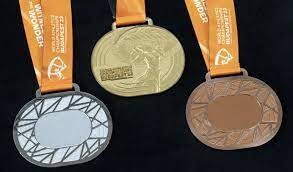
The craftsmanship behind these medals reveals meticulous attention to detail. Crafted from a unique brass alloy, each medal is plated in gold, silver or bronze. The medals’ total composition consists of a staggering 140kg of precious metal and a ribbon spanning 450 meters. The comprehensive process, from initial design to the final touch of tape sewing, culminates in more than 3000 hours of combined effort.
Naturally, sustainability was also a significant factor during the planning phase: the medal packaging comprises responsibly sourced forestry raw materials, weighing a total of 146kg. The distinctive medal case makes the World Championships medals truly exceptional. The designers utilized excess material from the race track at the National Athletics Center to line the box.
Adding to the allure of the World Athletics Championships Budapest 23 is the innovative Medal Plaza, where the medal ceremonies will take place before the sessions each day. This is the first time that the athletes are celebrated outside of the stadium.
The Medal Plaza also serves as a vibrant hub of entertainment. With daily live music, captivating performances and a range of engaging activities, it stands as a dynamic showcase of the World Championships’ festive spirit.
For the cost of a single ticket, visitors can enjoy a three-in-one entertainment package: a sporting spectacle, a fan zone, and a concert experience.
The World Athletics Championships Budapest 23, set to commence on 19 August, promises to show the world a true celebration of sport on a unique stage and welcomes everybody who wishes to witness the wonder.
(08/08/2023) Views: 446 ⚡AMPby World Athletics
World Athletics Championships Budapest 23
From August 19-27, 2023, Budapest will host the world's third largest sporting event, the World Athletics Championships. It is the largest sporting event in the history of Hungary, attended by athletes from more than 200 countries, whose news will reach more than one billion people. Athletics is the foundation of all sports. It represents strength, speed, dexterity and endurance, the...
more...Former Seoul Marathon gold medalist Franklin Chepkwony collapses and dies after training
Former Seoul Marathon gold medalist Franklin Chepkwony passed away after collapsing on Monday in Eldama Ravine, Baringo County.
The 39-year-old had just finished a 23km training schedule when he collapsed on his way home.
According to his training partner Mike Boit, Chepkwony was in high spirits during training before they parted ways.
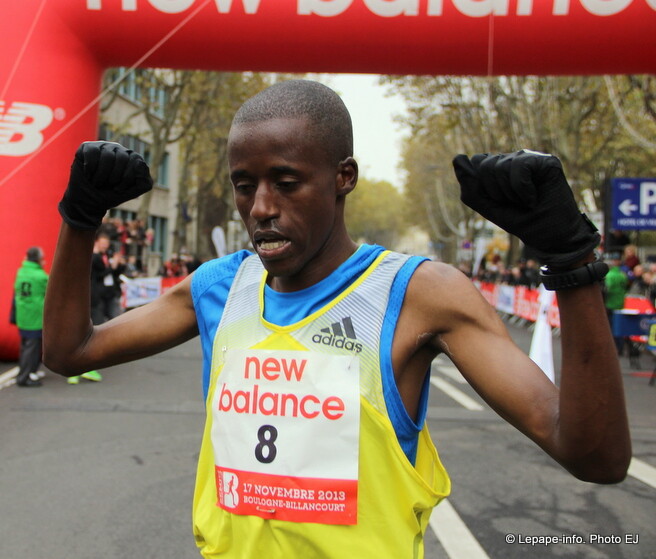
“Our training went well and he was in high spirits. I was called when I got home that my friend had collapsed and died but I couldn’t believe it. I rushed to his home, where I confirmed indeed he was no more,” he said.
Boit said Chepkwony was among the athletes who took part in the Nairobi City Marathon on July 2, where he placed 54th in 2:16:43.
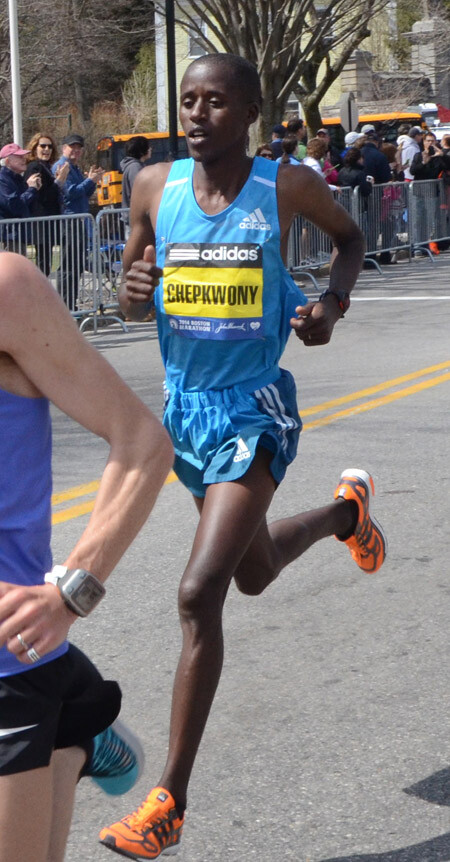
According to his uncle, Joseph Tele, a colleague of his tried to administer first aid before a good Samaritan arrived and rushed him to Eldama Ravine Hospital, where he was pronounced dead on arrival.
“I was called when he was rushed to the hospital and unfortunately he passed on. We are now planning his burial. We shall announce the date of his burial once we agree as a family,” Tele said.
His body has since been moved to Eldama Ravine Mortuary awaiting his burial.
Chepkwony first burst into the limelight in 2011 during the Standard Chartered Nairobi Marathon, where he came in second in 2:11:00 just five seconds behind Ernest Kebenei who won in 2:10:55.
His international debut came in 2012 at the Zurich Marathon, Switzerland, where he won with a time of 2:10:57.
Later that year, he set a personal best of 2:06:11 after finishing second at the Eindhoven Marathon in the Netherlands just 25 seconds behind the winner. The time ranked him 26th in the world that year.
In 2013, Chepkwony won the Seoul International Marathon on March 17th in a time of 2:06:59, bagging $80,000 for finishing the race under 2:10:00.He later ran his second marathon in the Netherlands in October but disappointingly finished seventh with a time of 2:09:53.
He later bounced back with an emphatic win at the Boulogne-Billancourt Half Marathon in France setting a course record of 1:00:11.
In 2014, Chepkwony participated in the Boston Marathon and finished third, his first top finish in World Marathon Majors.
Various Kenyan athletes took to social media to express their sorrow for the loss of a marathon great.
(08/08/2023) Views: 518 ⚡AMPby Teddy Mulei
World medalists Yamanishi and Kitaguchi on Japan's team for WCH Budapest 23
Two-time defending 20km race walk champion Toshikazu Yamanishi and world javelin bronze medalist Haruka Kitaguchi feature on Japan’s team for the World Athletics Championships Budapest 23.
Yamanishi won his first world gold in Doha in 2019 and retained his title in Oregon. He will be joined by Koki Ikeda, Eiki Takahashi and Yuta Koga in the men’s 20km race walk, which is the opening event of the championships on the morning of 19 August.
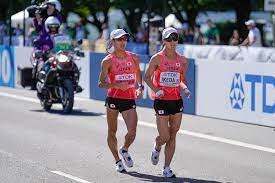
Kitaguchi finished third behind Kelsey-Lee Barber and Kara Winger in Oregon last year and goes into this year’s event as the women's world javelin leader thanks to the 67.04m national record she achieved in Silesia last month.
Other athletes on the team include national record-holders Shunsuke Izumiya in the 110m hurdles and Nozomi Tanaka in the 1500m and 5000m, plus Sumire Hata and Hiromichi Yoshida in the long jump.
After Budapest, Japan will host the next edition of the World Championships, in Tokyo in 2025.
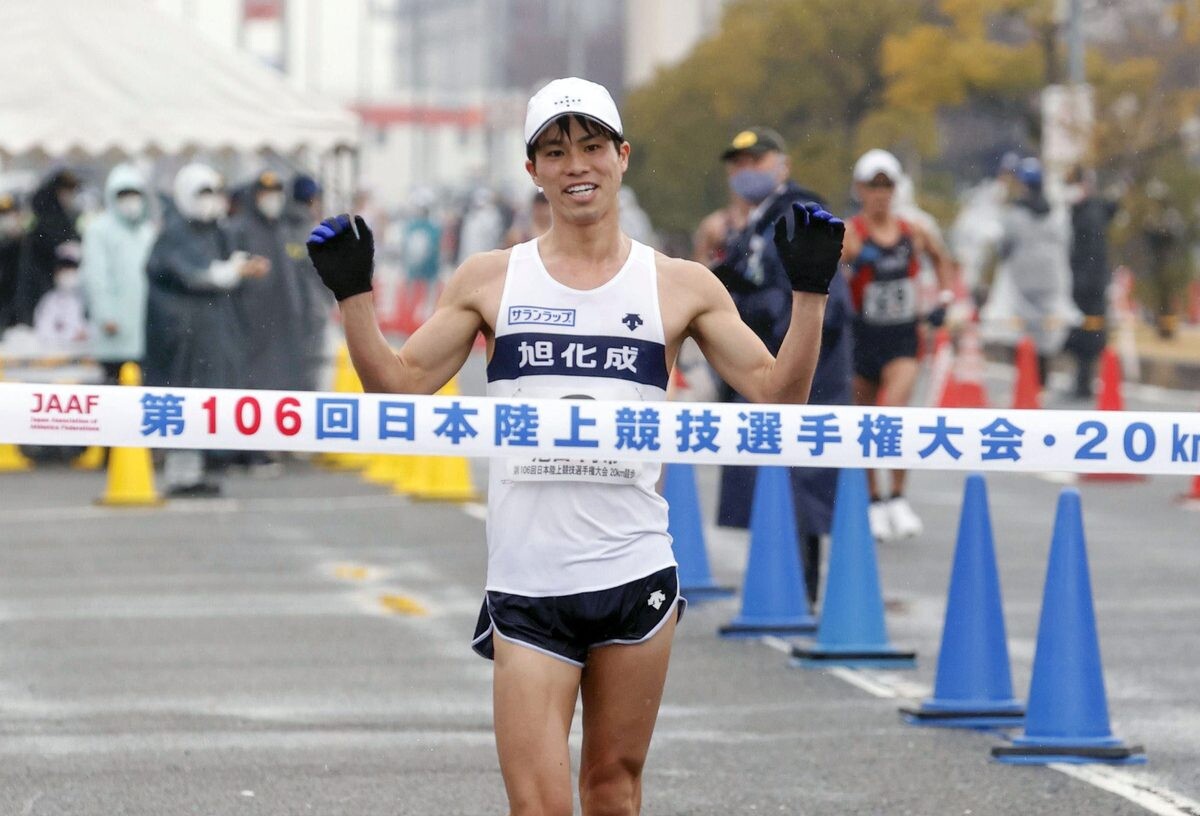
Japanese team for Budapest
WOMEN
100m: Arisu Kimishima
200m: Remi Tsuruta
1500m: Yume Goto, Nozomi Tanaka
5000m: Ririka Hironaka, Nozomi Tanaka, Yuma Yamamoto
10,000m: Rino Goshima, Ririka Hironaka
Marathon: Rika Kaseda, Mizuki Matsuda, Sayaka Sato
100m hurdles: Masumi Aoki, Yumi Tanaka, Asuka Terada
400m hurdles: Eri Utsunomiya, Ami Yamamoto
Long jump: Sumire Hata
Triple jump: Mariko Morimoto, Naoko Takashima
Discus: Maki Saito
Javelin: Haruka Kitaguchi, Marina Saito, Momone Ueda
20km race walk: Nanako Fujii, Ayane Yanai, Yukiko Umeno
35km race walk: Masumi Fuchise, Kumiko Okada, Serena Sonoda
MEN
100m: Ryuichiro Sakai, Abdul Hakim Sani Brown, Hiroki Yanagita
200m: Shota Iizuka, Koki Ueyama, Towa Uzawa
400m: Yuki Joseph Nakajima, Fuga Sato, Kentaro Sato
5000m: Hyuga Endo, Kazuya Shiojiri
10,000m: Ren Tazawa
Marathon: Kazuya Nishiyama, Kenya Sonota, Ichitaka Yamashita
3000m steeplechase: Ryoma Aoki, Ryuji Miura, Seiya Sunada
Decathlon: Yuma Maruyama
110m hurdles: Shunsuke Izumiya, Shunya Takayama, Taiga Yokochi
400m hurdles: Takayuki Kishimoto, Yusaku Kodama, Kazuki Kurokawa
High jump: Ryoichi Akamatsu, Naoto Hasegawa, Tomohiro Shinno
Pole vault: Tomoya Karasawa
Long jump: Yuki Hashioka, Shotaro Shiroyama, Hiromichi Yoshida
Triple jump: Hikaru Ikehata
Javelin: Roderick Genki Dean, Kenji Ogura, Yuta Sakiyama
20km race walk: Koki Ikeda, Yuta Koga, Eiki Takahashi, Toshikazu Yamanishi
35km race walk: Masatora Kawano, Satoshi Maruo, Tomohiro Noda
4x100m: Shota Iizuka, Yuki Koike, Soshi Mizukubo, Ryuichiro Sakai, Abdul Hakim Sani Brown, Hiroki Yanagita
4x400m: Kenki Imaizumi, Ryuki Iwasaki, Naohiro Jinushi, Yuki Joseph Nakajima, Fuga Sato, Kentaro Sato
(08/08/2023) Views: 462 ⚡AMPby World Athletics
World Athletics Championships Budapest 23
From August 19-27, 2023, Budapest will host the world's third largest sporting event, the World Athletics Championships. It is the largest sporting event in the history of Hungary, attended by athletes from more than 200 countries, whose news will reach more than one billion people. Athletics is the foundation of all sports. It represents strength, speed, dexterity and endurance, the...
more...Tempo sessions for the time-crunched runner
Even the most dedicated runner occasionally finds herself squeezing in frenzied workouts, especially when it comes to those essential harder training sessions. Look no further: you’ll be able to fit any of these challenging tempo sessions in your lunch break and still have time for a quick shower.
A tempo session usually involves a prolonged or sustained moderate effort and is the perfect practice for race day. (The key to avoiding injury while doing them is not starting too hard.)

Colorado-based coach and author David Roche suggests breaking up a tempo session into three parts: for the first third, focus on running smoothly. On the second section, think “relaxed,” and for the final section, think fast(er). “A perfect tempo gets slightly faster as it goes, but is enjoyable until the very last push at the end (when you might even sprint for one minute, if you’re feeling strong),” says Roche.
Broken-up tempo workout

10 minutes easy running to warm up
2 x 10 minutes tempo run (moderate) with 5 minutes easy recovery in between
10 minutes easy running with 4 x 30 seconds fast running mixed in
Short tempo run
10 minutes easy running to warm up
21-minute tempo run at moderate effort
10 minutes easy running to cool down, with 4 x 30 seconds fast running mixed in
Simple tempo repeats
10 minutes easy running to warm up
3 x 8 minutes tempo run at moderate effort, with 3 minutes easy recovery running between intervals
10 minutes easy running to cool down
Remember to follow a hard workout session with an easy running or recovery day.
(08/08/2023) Views: 625 ⚡AMPby Keeley Milne
Should you warm up before your marathon?
Two-time Canadian Olympic marathoner, Reid Coolsaet, insists that a warm-up is a good idea, but it's important to not go overboard.
Most runners understand the purpose of warming up before a race, but the question remains: should you be doing a warm up before your marathon?
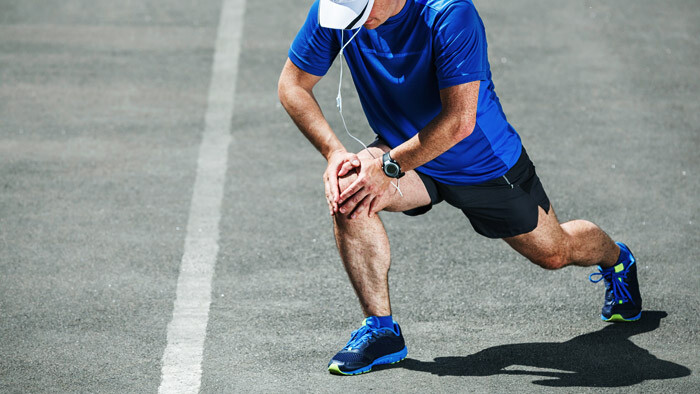
The warm up is a crucial activity to prep your muscles for the demanding marathon ahead. By increasing your core body temperature, a warm up speeds up the supply of oxygen to your hardworking muscles, promoting optimal performance. Additionally, this procedure boosts blood flow to the working muscles, priming them for the effort and effectively reducing the risk of injury.
While warming up is essential, it’s important to be mindful of the energy it requires. For shorter races like 5K or 10K, running out of energy is not a concern, given the race’s briefness. However, when you’re gearing up for a marathon that spans three-to-four hours, conserving energy and glycogen (stored carbohydrate) is vital.
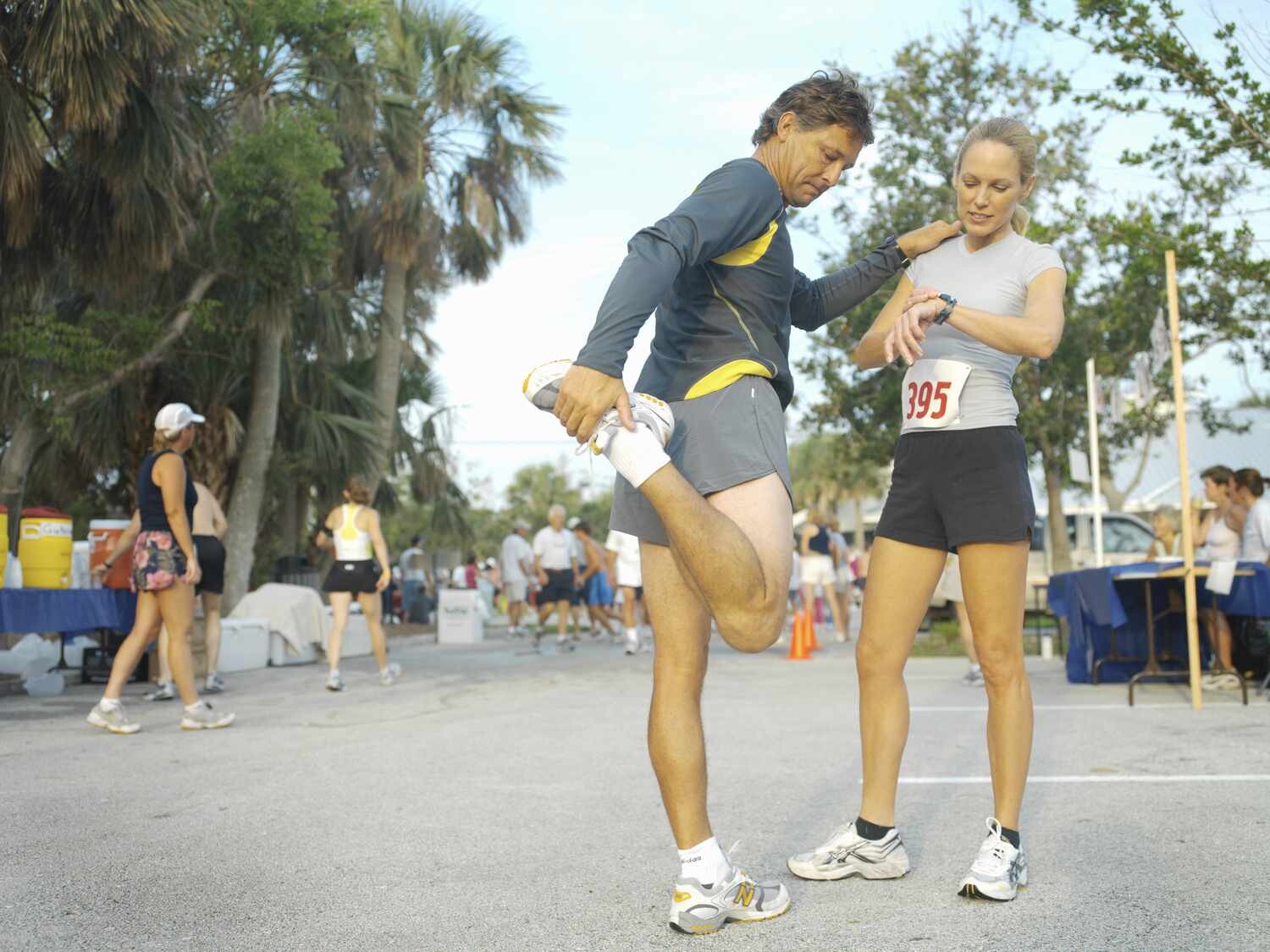
Two-time Canadian Olympic marathoner and head coach of CoolsaetGo, Reid Coolsaet, advocates for a warm up but emphasizes not overdoing it. He suggests running enough before the race to hit your race pace off the start line. “You want to run enough before the race to hit your race pace off the start line,” says Coolsaet. “Five to 10 minutes of running and a few strides is plenty.”
He notes that many marathon runners find themselves running at around warm-up pace for the first five or 10 minutes into the race. “Going beyond a 10-minute warm up may prove counterproductive, as it could lead to regrets later on, especially around the 40-kilometer mark,” says Coolsaet.
Another thing Coolsaet mentioned is to leave enough time between your warm up and the start of the race to navigate the porta-potty lines. GI issues can be a runner’s worst nightmare, especially only 10 kilometers into the race.
So don’t overlook the importance of a warm up, as it can be a gateway to ensuring that your body is primed to take on the distance and conquer your personal best. Get your muscles ready, conserve energy and tackle those 42.2 kilometers like a champion!
(08/07/2023) Views: 550 ⚡AMPby Marley Dickinson
16-year-old Texas sprinter breaks ridiculous record for 400m
While most 16-year-olds are learning to drive and being pressured by their parents to figure out their career path, Jonathan Simms of Allen, Texas, shattered a near three-decade junior world record in the men’s 400m at the AAU Junior Olympic Games on Saturday.
Simms ran a new personal record to win the 15-16-year-old boys’ championship in a U16 world record of 45.12 seconds.
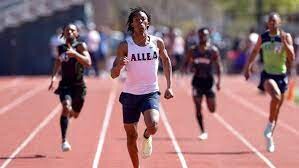
Simms entered the race as the U.S. national champion with a 46.09-second run at the Nike Outdoor Nationals in June, but his personal best was 45.90, set at the Texas state championships earlier in the season. Simms won the race handily by two and a half seconds and followed up his win with a gold medal in the 4x400m relay later where he split 44.76.
His new record time eclipses Obea Moore’s previous mark of 45.14 from 1995 as the U16 world record. Moore held the record in this event for 28 years. He was expected to be the next great American quarter-miler, to follow the great Michael Johnson, but he never lived up to expectations.
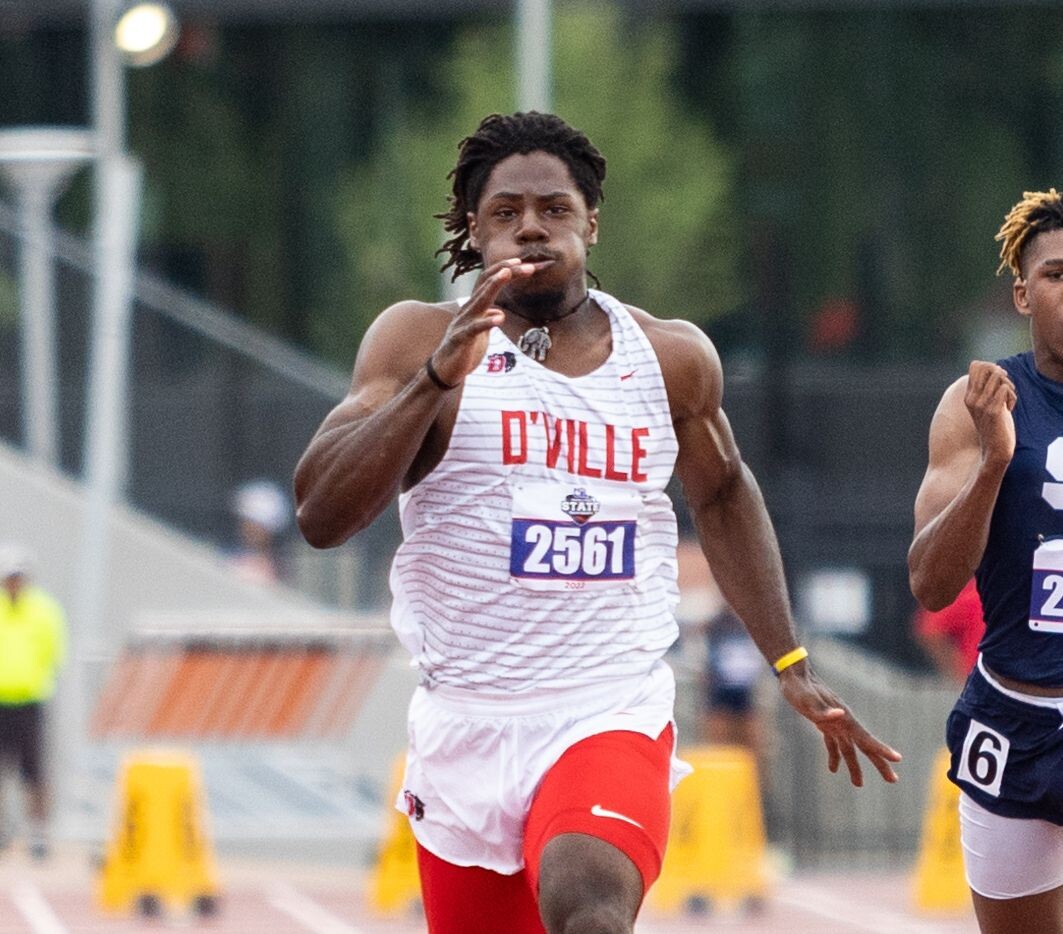
Simms’s new record time is only a tenth of a second shy of the 2024 Olympic standard for the 400m (45.00). Earlier in the week, Simms also won the 800m at the AAU Junior Olympics in 1:51.69, a new personal best.
With such remarkable performances at a young age, Simms has undoubtedly captured the attention of the track and field world as a rising star with immense potential for the future.
(08/07/2023) Views: 502 ⚡AMPby Marley Dickinson
Injury-plagued Emmanuel Korir ready to 'fight' to defend his world title
Korir has failed to impress since the start of the 2023 season due to his injury.
Despite an injury setback that has seen him struggle to make an impact since the 2023 season started, reigning World and Olympic 800m champion Emmanuel Korir is ready to fight as he seeks to defend his title at the World Championships in Budapest, Hungary.
The US-based athlete insisted that he cannot just sit and watch the title being snatched from him and he has promised to bring back something better.
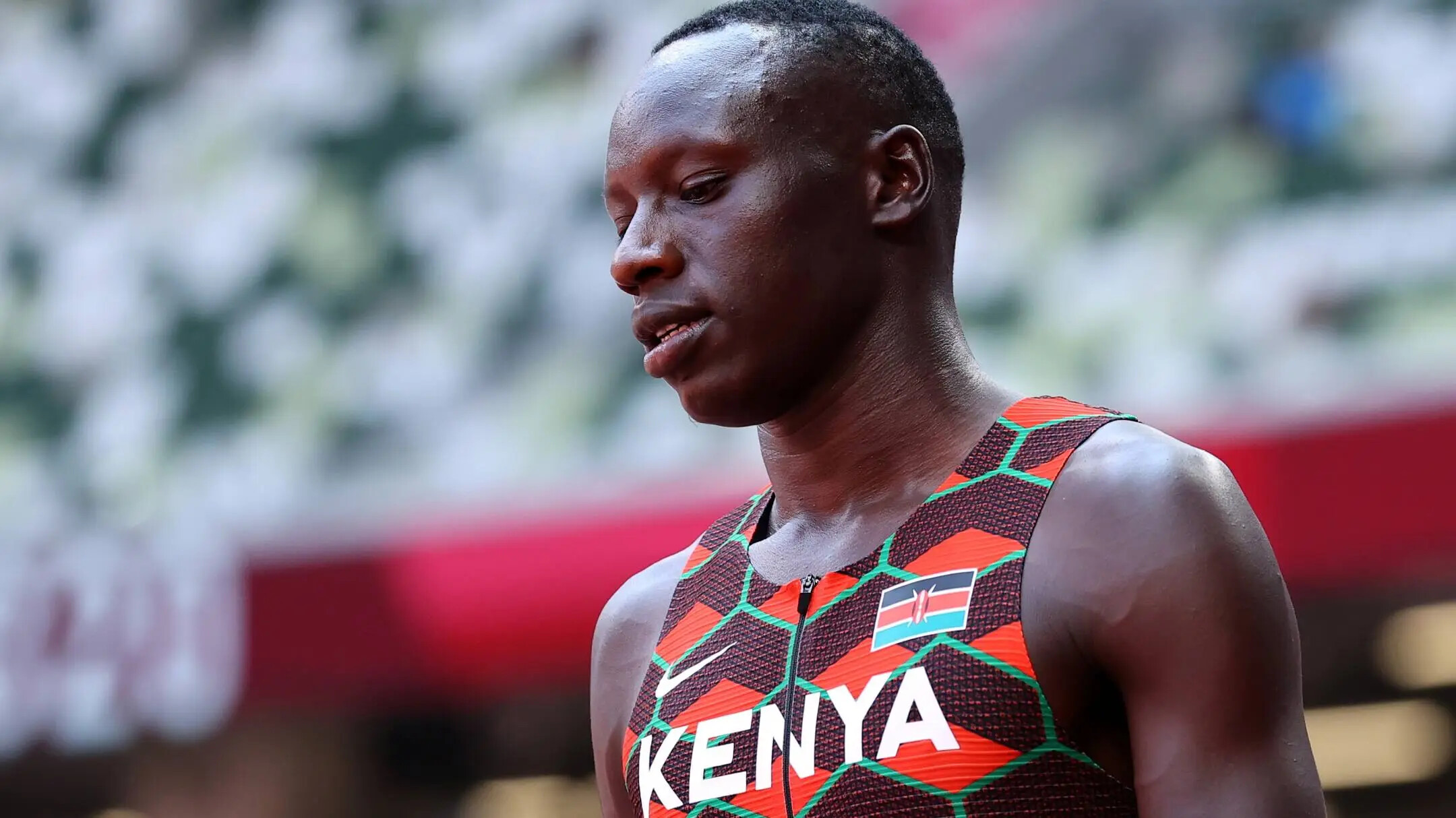
“I’m going there for it (the title) …I’m very hungry. I am not going to let it go to someone else. We shall fight and definitely bring something better back home…that’s for sure,” Korir told Nation Sport.
Korir started off his outdoor season with an eight-place finish at the Diamond League Meeting in Rabat, Morocco where he fizzled out to finish eighth.
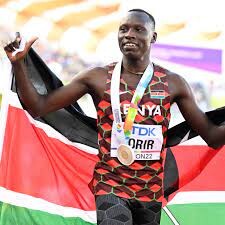
He then proceeded to the Diamond League Meeting in Paris, France where he also failed to impress by finishing 10th. Korir’s most recent race was at the Diamond League Meeting in Stockholm, Sweden, where he also finished a distant eighth.
As he heads to Budapest, he is bound to face a stern test from the upcoming duo of Djamel Sedjati and Slimane Moula who have done pretty well in the Diamond League Meetings this season.
Canada’s Marco Arop will also be in the mix seeking to improve on his third-place finish during last year’s World Championships in Eugene, Oregon.
Korir will enjoy the company of youngsters Emmanuel Wanyonyi and Kipng’etich Ngeno who will also be seeking to make a statement on the global stage.
(08/07/2023) Views: 412 ⚡AMPby Abigael Wuafula
World Athletics Championships Budapest 23
From August 19-27, 2023, Budapest will host the world's third largest sporting event, the World Athletics Championships. It is the largest sporting event in the history of Hungary, attended by athletes from more than 200 countries, whose news will reach more than one billion people. Athletics is the foundation of all sports. It represents strength, speed, dexterity and endurance, the...
more...Try this short tune-up workout ahead of your next race
Figuring out what to do in the last few days or weeks leading up to your goal race is tricky. Do too much, and you risk being tired and burnt out when race day rolls around. Do too little, and you feel sluggish and stiff–like you forgot how to run in the days since your last workout. This quick session is a great way to put in some work before your race without tiring you out before you toe the line.
The idea behind this workout is to practise the pace you’re going to run on race day, so that the “memory” of what that speed should feel like is fresh in your legs when you get to the start line. A small amount of faster work in the middle keeps you from feeling stale or sluggish and builds confidence, and returning to race pace for the final section of the workout forces you to find that speed again, which is good practice if you accidentally go out a bit too hard on race day.
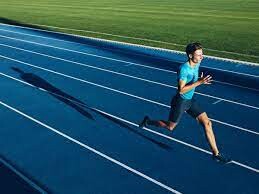
When you do this workout depends on what type of race you have on the calendar. If it’s a marathon, you should do this no closer than a week before your race. If you’re running a half-marathon, you could do it five to seven days ahead of your race, and if you’ve got a 10K or 5K on the calendar, you could slot this into your schedule three to five days out.
The workout
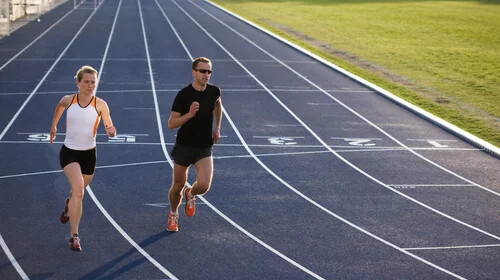
Warmup: 10 minutes’ easy jog
Workout:
10 minutes at goal pace/3 minutes easy jog
5 minutes at slightly faster than goal pace/2 minutes easy jog
10 minutes at goal pace
Cooldown: 5-10 minutes’ easy jog, followed by light stretching.
(08/07/2023) Views: 449 ⚡AMPby Brittany Hambleton
Two world bests set at the 9th Annual Golden Gate Double 8k today August 6
We had an amazing morning in San Francisco for our 9th annual Golden Gate Double 8k (5k+break+3k) and our Golden Gate 10k/5k. We had 452 registered runners. The weather was perfect. Like in the 50-60’s with hardly any wind. And we could see the GG bridge the whole time.
Congrats to our Double winners: the current king of the Double Anthony Cortes clocked 25:20 (15:52 + 9:28) for the win. 14-yearly-old Caroline Chang did her first double today and won clocking 32:03.
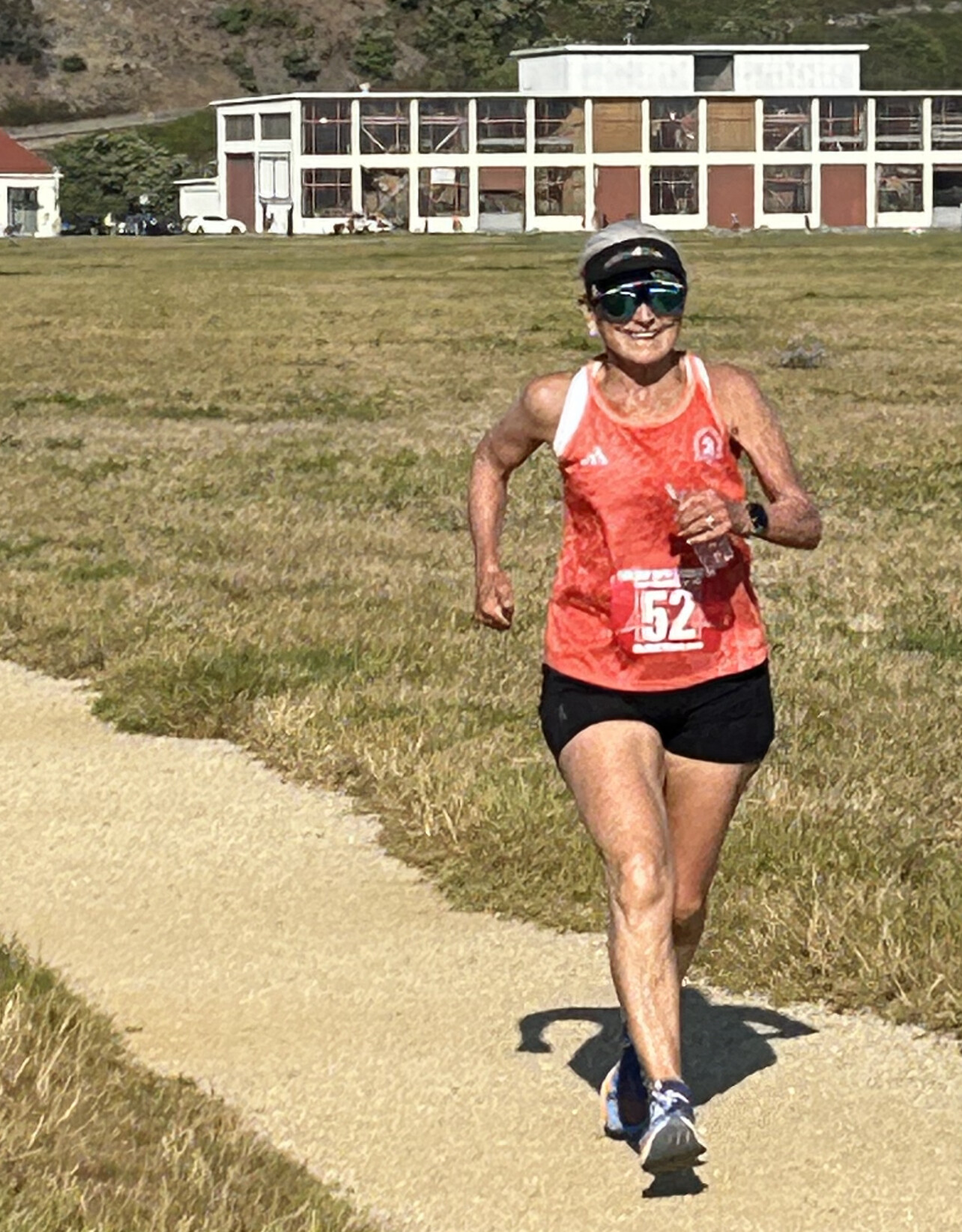
There were two world bests set today. 71-year-old Suzanne Koonce (second photo) from Menlo Park, California smashed the current 70 plus record set by Sharlet Gilbert of 43:38. Suzanne clocked 41:48 today.

Bobby Hastings of Chico, California set the record for 60-69 a couple of years back of 31:39, a time that was nearly two minutes ahead of everyone else. Today he focused on beating that time and he did clocking 31:29.
The next double racing event is set for Dec 16th in Palo Alto California. The featured event, the Double 15k (10k+test+5k) will be run. There will also be the Palo Alto 10k/5k and the Bob Anderson’s one mile kids run (kids 13 and under).
(08/06/2023) Views: 549 ⚡AMPGolden Gate 10k/5k DOUBLE 8K
The Golden Gate courses offers unparalleled views of the Golden Gate Bridge for more than 80% of the way! The course will begin at historic Crissy Field near the Presidio of San Francisco. Runners will enjoy the gorgeous vistas of the Golden Gate National Recreation Area. We are offering three races: Golden Gate 10K and 5K (run/walk) and Golden Gate...
more...New study shows athletes how to beat competition heat
The potentially lethal cocktail of high heat and humidity, strenuous exercise and dehydration hit Czech endurance athlete Hana Švestková Stružková so hard during a championship event that her body went into meltdown mid-race and she lost consciousness.
Stružková was racing in the classic up and down 8.2km mountain event at the inaugural World Mountain and Trail Running Championships in Chiang Mai, Thailand last year when, 1.5km from the finish, she succumbed to heat stroke and lost control of her body.
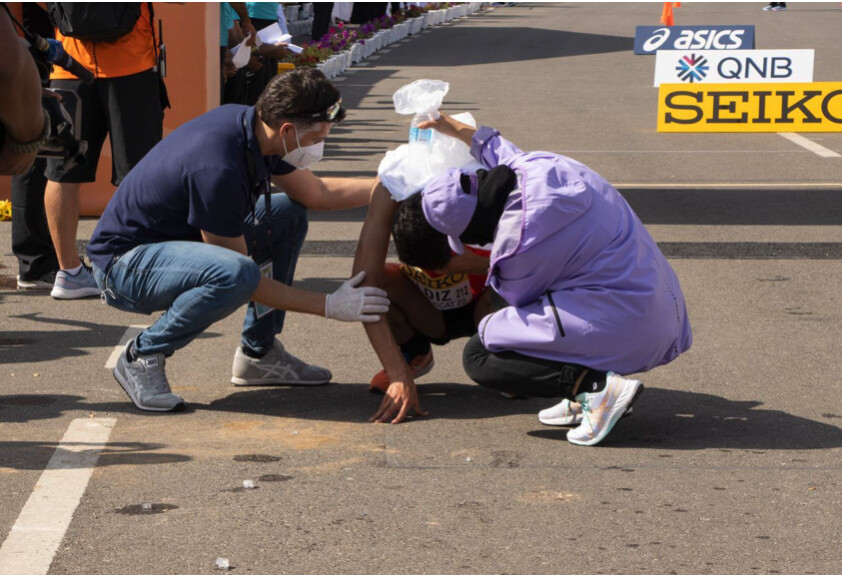

“Every step became harder, I couldn't run straight, my body became weaker and I couldn't control my legs,” Stružková recalled. “I fell down many times. Over the last 200 metres I could only scramble. It felt like a dream. After coming to the finish I was unconscious for one to two minutes and woke up in the medical tent. I couldn’t drink anything for about an hour and a half. I felt I would vomit. I felt very bad.”
Stružková admits she drastically underestimated the severity of the race conditions, she didn’t acclimate properly, and she didn’t drink enough water.
The urgent need to educate endurance athletes about the dangers to their health and performance posed by hot and humid competition conditions and how they can mitigate the risks were among the key findings of a new heat acclimatisation study by World Athletics.
Checking the weather before heading to a foreign climate may be standard practice for travellers, but the study found elite endurance athletes like Stružková were failing to check and prepare for the hot and humid conditions they’d encounter at championship events.
The study also found that while heat preparation information and strategies were available to all athletes and teams, ignorance prevailed and logistical, practical and financial barriers were proving too high.
World Athletics recruited 66 elite athletes – 42 men and 24 women – from 16 countries who competed at the World Athletics Race Walking Team Championships Muscat 22.
The study recorded the athletes’ preparation, knowledge and health, and the effects of competition heat, which can range from dehydration to death.
Race temperatures during the championships in Oman’s port capital of Muscat were 31.3C and higher than historical weather data which predicted average race-start environmental temperatures of 22.5C (morning) and 25.5C (evening).
The three race walk events held over 10km, 20km and 35km resulted in athletes being exposed to these race conditions for between 44 minutes and up to almost four hours, depending on the distance.
The study found a high number of athletes (83%) surveyed were ignorant of heat-related material that could aid their health and performance and 43 per cent did not prepare for the expected hot conditions, blaming the cost and availability of suitable equipment and facilities.
More startling was the lack of knowledge among female competitors in particular, with 42% of women compared with 14% of men surveyed more likely not to know the expected conditions they faced in Muscat for the championships.
Not surprisingly, athletes who implemented heat acclimatisation strategies were more likely to perform better. The study found that athletes who did pre-event heat training were more likely to earn a medal or finish in the top 10. The four surveyed athletes who earn medals did heat preparation and of the 15 surveyed who finished within the top 10, 80% prepared for the heat.
The study, Heat Preparation and Knowledge at the World Athletics Race Walking Team Championships Muscat 2022, was conducted by a 13-member international team led by the World Athletics’ Health and Science Department – whose primary mission is to protect athlete health – in conjunction with the School of Sport, Exercise and Health Sciences at the National Centre for Sport and Exercise Medicine at Loughborough University, UK.
Study lead Frederic Garrandes, World Athletics’ Health & Science Department Scientific Manager, said the reason for athlete, coach and team ignorance and inaction regarding heat acclimatisation was multifaceted. “A certain naivety, underestimation of risk, lack of communication and a lack of professionalism on the part of team managers and athletes,” Garrandes said.
“With global warming, we're increasingly faced with the problem of organising competitions in hot, humid conditions. This poses a health and performance problem for the athletes. The higher the temperature, the greater the number of medical encounters we have in the medical tent.”
The Muscat study builds on work carried out at the World Athletics Championships Doha 2019 by the World Athletics’ Health and Science department to also investigate heat preparation strategies used by endurance athletes.
In Doha, the capital of Qatar, 23% of road race athletes had a medical event, despite events being scheduled to start close to midnight to avoid the heat.
The 2022 Muscat study showed that despite the ready availability of educational resources, including a ‘Beat the Heat’ leaflet developed by World Athletics, a lack of knowledge persists – highlighting the urgent need to increase awareness and action.
Garrandes said publicising the study results far and wide could help bridge the knowledge gap. Making the findings and lessons “accessible in a comprehensible, simplified and multilingual way for lay athletes” was also vital.
There was also a pressing need to educate elite female athletes and athletes from cold/temperate climates in particular about the dangers of competing in high heat.
“Research in this area gives us a better understanding of the incidence of the problem, enables us to treat our athletes more effectively and to build educational programmes to educate our athletes and mitigate the risks,” Garrandes said.
Stružková has this advice for fellow athletes after suffering the debilitating effects of heat stroke while competing in Thailand: “You have to take the opportunity to acclimatise to hot and humid weather before racing in devil conditions.”
(08/06/2023) Views: 441 ⚡AMP
by Louise Evans for World Athletics
Ethiopia’s Addisu Yihune, Kenya’s Hellen Obiri win Beach to Beacon 10k
Ethiopia’s Addisu Yihune and Kenya’s Hellen Obiri won the men’s and women’s titles at the 2023 TD Beach to Beacon 10K on Saturday morning.
Yihune crossed the finish line in an unofficial time of 27 minutes, 56 seconds. Conner Mantz of Utah was second (27:58) and Muktar Edris of Ethiopia was third (28:06).
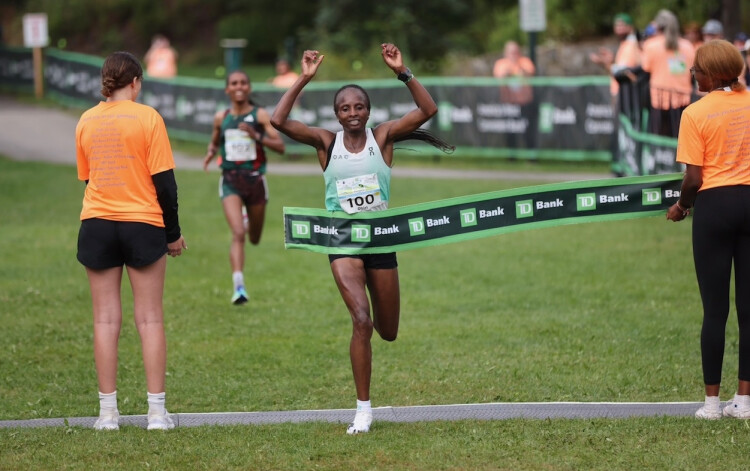
Obiri won the women’s race in an unofficial time of 31:36, followed by Ethiopia’s Fotyen Tesfay (31:38) and Keira D’Amato of Virginia (31:58).
Matt Rand of Portland was the top finisher among the Maine men in an unofficial time of 30 minutes, 44 seconds, followed by Grady Satterfield of Bowdoinham (30:52) and Ryan Jara of Gorham (30:55).
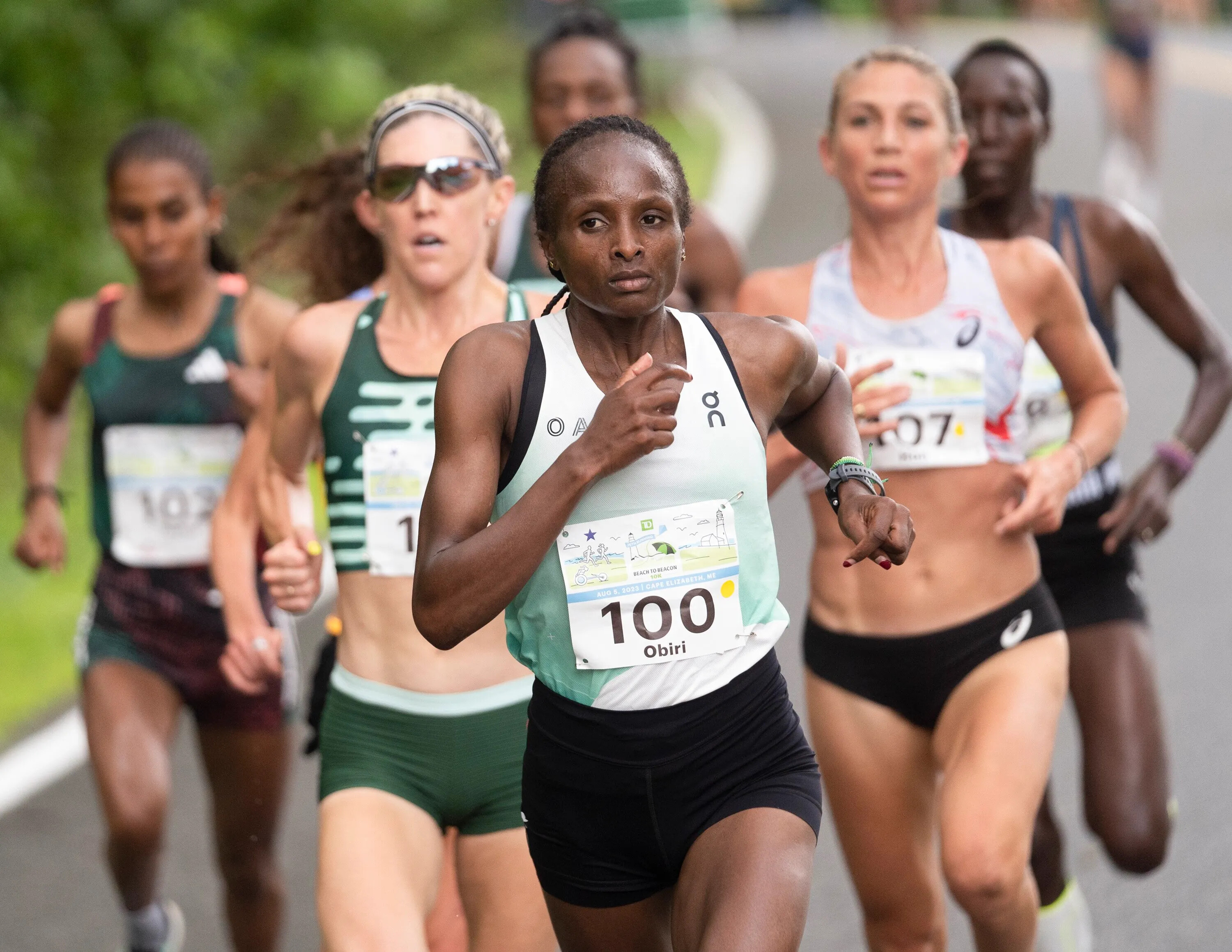
Ruth White, who will be a senior this fall at Orono High, was the top finisher among Maine women in an unofficial time of 34:56. Alexis Wilbert of Cumberland placed second (35:46) and Veronica Graziano of Falmouth was third (36:15).
Hermin Garic of Utica, New York, won the men’s wheelchair division in an unofficial time of 23 minutes, 20 seconds. Yen Hoang of Vancouver, Washington, won the women’s wheelchair division in 28:24.
In the men’s race, Mantz, 26, was visibly upset when he finished the race. He said Yihune, 20, twice pushed him in the final quater-mile, both times causing him to break stride and bang into the fencing that separated the runners from the crowd. Yihune, through the translation of countryman Edris, said he did not push Mantz. Yihune, competing in his first road race, said he was merely closing the lane to block Mantz’s path. Mantz, who had a fresh abrasion on his upper left arm, said that possibly the first incident with about 400 meters could have been accidental or unintended.
The second time, with about 200 meters to go, “The second time I tried to pass him there was plenty of room. Enough for two people to pass on his left. The second time I hit the fence pretty hard. I hate this because there’s a part of me that feels like I got gypped but I also don’t want to go out and protest and like make it into somebody else’s bad experience.”
Yihune won $10,000 for the victory. Mantz also earned $10,000 – $5,000 for finishing second and another $5,000 as the top American.
“I feel like I had first in me today and when you lose by just that much and you lose your momentum, it’s easy to get upset,” Mantz said.
Beach to Beacon, founded by 1984 Olympic women’s marathon champion Joan Benoit Samuelson, is celebrating its 25th anniversary. More than 8,000 people registered for the event, Maine’s largest road race and one of the premier road races in America, with over 6,400 finishing.
(08/05/2023) Views: 601 ⚡AMPTD Beach to Beacon 10K
Joan Benoit Samuelson, a native of Cape Elizabeth, Maine, won the first-ever women's Marathon at the 1984 Olympics in Los Angeles and is founder and chair of the TD Bank Beach to Beacon 10K. "A long time dream of mine has been realized" says Samuelson. "I've always wanted to create a race that brings runners to some of my most...
more...Hassan and Bol feature on Dutch team for WCH Budapest 23
Double Olympic champion Sifan Hassan and triple European champion Femke Bol will represent the Netherlands in multiple disciplines at the World Athletics Championships Budapest 23.
Hassan has been entered in the 1500m, 5000m and 10,000m – the same three disciplines she contested at the Tokyo Olympic Games, where she landed two gold medals and a bronze.
Bol, meanwhile, will have her sights set on gold in the 400m hurdles, having recently reduced her own European record to 51.45. As was the case at the past two global championships, she is also in the pools for the women’s and mixed 4x400m events.
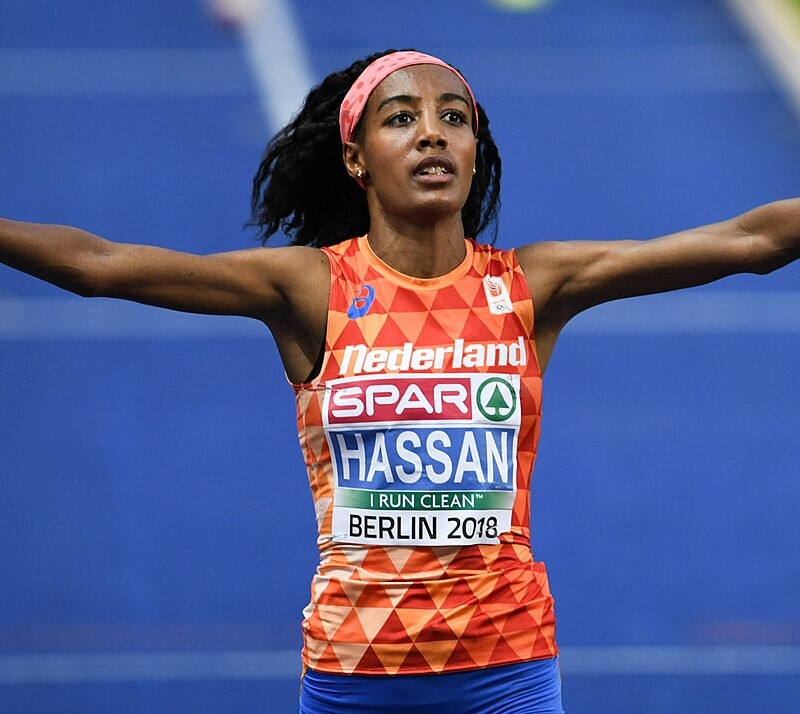
Dutch team for Budapest
WOMEN 100m: N’Ketia Seedo
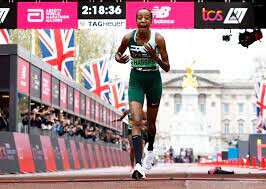
200m: Tasa Jiya
400m: Lieke Klaver
1500m: Sifan Hassan
5000m: Sifan Hassan, Maureen Koster
10,000m: Sifan Hassan, Diane van Es
100m hurdles: Maayke Tijn A-Lim, Nadine Visser
400m hurdles: Femke Bol, Cathelijn Peeters
Long jump: Pauline Hondema
Shot put: Jessica Schilder, Alida van Daalen, Jorinde van Klinken
Discus: Jorinde van Klinken
Heptathlon: Sofie Dokter, Emma Oosterwegel, Anouk Vetter
4x100m: Tasa Jiya, Lieke Klaver, Jamile Samuel, N’Ketia Seedo, Marije van Hunenstijn, Nadine Visser
4x400m: Femke Bol, Lisanne de Witte, Lieke Klaver, Cathelijn Peeters, Eveline Saalberg, Zoe Sedney
MEN 100m: Raphael Bouju
200m: Taymir Burnet
400m: Liemarvin Bonevacia
1500m: Niels Laros
5000m: Mike Foppen
Marathon: Abdi Nageeye
High jump: Douwe Amels
Pole vault: Menno Vloon
Hammer: Denzel Comenentia
Decathlon: Rik Taam
4x100m: Raphael Bouju, Taymir Burnet, Nsikak Ekpo, Churandy Martina, Xavi Mo-Ajok, Hensley Paulina
4x400m: Terrence Agard, Ramsey Angela, Isayah Boers, Liemarvin Bonevacia, Isaya Klein Ikkink, Nick Smidt
Mixed 4x400m: athletes drawn from men’s and women’s 4x400m pools.
(08/05/2023) Views: 437 ⚡AMPby World Athletics
World Athletics Championships Budapest 23
From August 19-27, 2023, Budapest will host the world's third largest sporting event, the World Athletics Championships. It is the largest sporting event in the history of Hungary, attended by athletes from more than 200 countries, whose news will reach more than one billion people. Athletics is the foundation of all sports. It represents strength, speed, dexterity and endurance, the...
more...Four exercises to combat shin splints
A bad case of shin splints can sideline even a very experienced runner. Also known as medial tibial stress syndrome, shin splints refer to pain and discomfort along the shinbone (tibia) at the front of the lower leg. They are caused by overuse or excessive stress on the shinbone and surrounding area, with tissues that attach the muscles to the bone becoming inflamed.
There are a few ways to prevent and treat shin splints. Resting your legs (cross-training with low-impact activities like swimming are OK) is a great first step. Next, check your shoes: ensure you’re wearing the right shoes with adequate cushioning and support to minimize impact–and that they are not worn out. (Great idea, if you run regularly, to replace your shoes at least once a year.)
Make sure you gradually progress your training, avoiding sudden increases in the intensity or duration of your runs. Finally, strengthen the shin muscles: add these exercises to your post-run routine to combat and prevent that nagging leg pain.
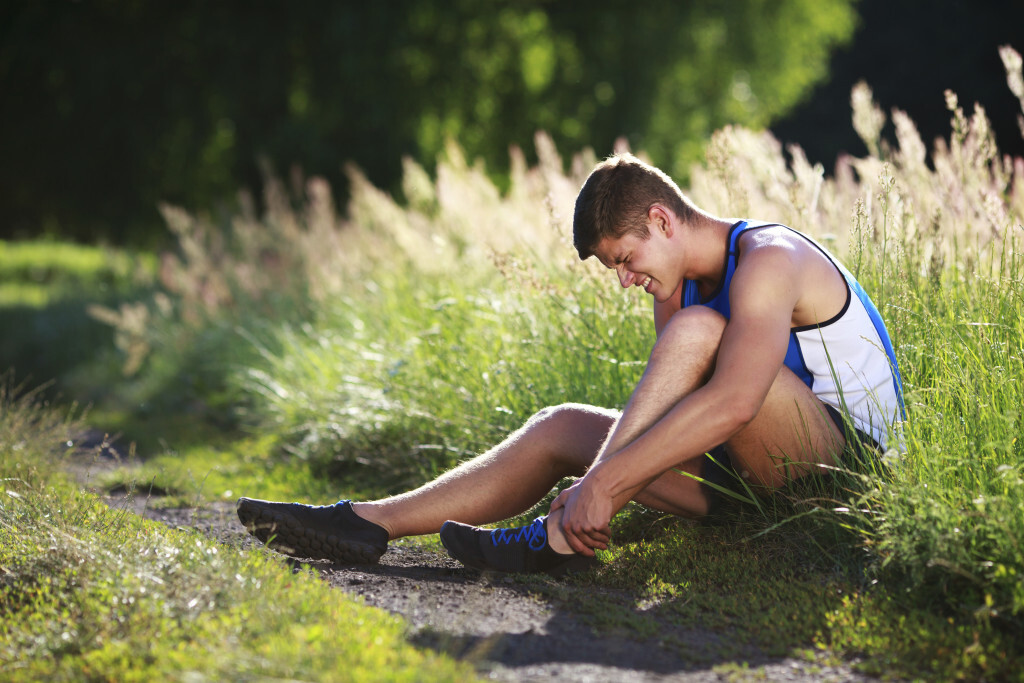
Toe Taps
Sit on a chair with your feet flat on the ground, and lift your toes upward, keeping your heels on the ground. Tap your toes on the ground rapidly for 20-30 seconds, and repeat for a few sets.
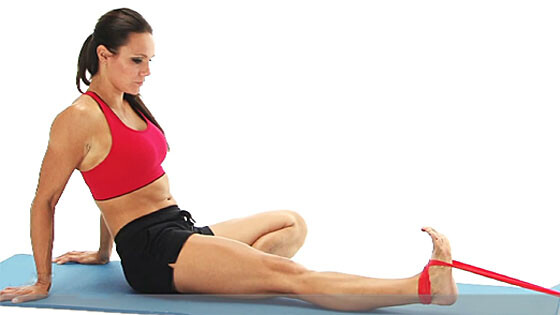
Resisted dorsiflexion
Attach a resistance band to a stable anchor, like a heavy chair or stair railing. Sit on the floor with your legs extended in front of you, and loop the band around your toes. Gently pull your toes toward you against the band’s resistance. Hold for a few seconds, then release. Try 2–3 sets of 10–15 reps.
Calf raises (eccentric focus)
Stand on a step or a platform with your heels hanging off the edge, rise onto your tiptoes, then slowly lower your heels as far as possible below the step. Use your non-injured leg or support, as needed, to rise back up to the starting position. Perform 2-3 sets of 10-15 reps.
Ankle alphabet
Sit on a chair with one leg extended. Pretend your big toe is a pen and write the letters of the alphabet in the air using your ankle and foot. This exercise engages the muscles around your shins, promoting strength and mobility.
Despite doing everything right, some runners still get sore shins. To tackle the pain, try applying ice to the area for 15 minutes at a time, three or four times a day. Ice slows the blood flow to the area and should help decrease pain.
Once you have rested your shins and dealt with the soreness, ease back into your running and strengthening routine. If shin pain is persistent or feels sharp and stabbing, visit a medical practitioner to make sure it isn’t a more serious injury, like a stress fracture.
(08/05/2023) Views: 497 ⚡AMPby Keeley Milne
It’s Official! 92-Year-Old’s Marathon World Record Finally Approved
Mathea Allansmith now holds the Guinness World Record as the oldest woman to have completed a marathon.
In December 2022, 92-year-old Mathea Allansmith crossed the Honolulu Marathon finish line, becoming the oldest woman to have ever completed a 26.2-mile race. She surpassed the former record holder, Harriette Thompson, by over three months. Half a year later, after a thorough ratification process, Guinness World Records has given their nod of approval, making the record official.
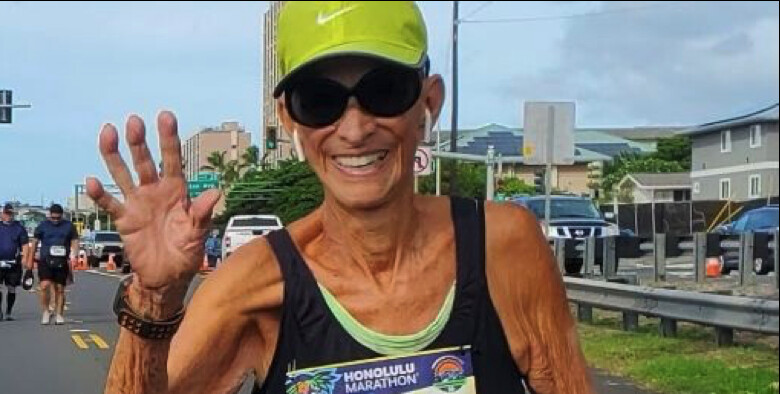
Rain or shine, Allansmith, now 93, runs six days per week all throughout the year, maintaining a training volume of about 36 weekly miles, even on vacation, and steadily increasing her mileage about 18 weeks prior to a marathon.
The retired doctor lives in Koloa, Hawaii, and didn’t start her running journey until she was 46 years old, after a colleague suggested running two miles per day. “I took up running in 1977 and fell in love with the feeling of exercising outside,” she told GuinnessWorldRecords.com. She credits her healthy running lifestyle with her high quality of life, and while her stamina has decreased over time, she’s making the most of what she’s got at any given moment. “I see the direct connection between moving and health,” she said.
The 1982 Boston Marathon was her first experience racing 26.2 miles, but the Honolulu Marathon is her favorite, partly because the race organizers don’t have a time cutoff, so even slower runners have an opportunity to complete the course.
“It’s one of the best-executed races,” she said to Guinness. “Fantastic registration, set up and management makes it a joy to participate in.”
On the day of her world record, Allansmith’s six children surprised her by wearing matching T-shirts denoting their mother’s achievement. “I felt an enormous sense of accomplishment and joy,” she told Guinness.
Allansmith plans to continue running marathons for as long as possible, and hopes to nab some other world records along the way, for other distances like the 10K and half marathon.
(08/05/2023) Views: 756 ⚡AMPby Runner’s World
Expert Strategies for Eating to Boost Energy
YOU SLEPT EIGHT hours, snuck in an early run, and made time to meditate before jumping on your first Zoom call. Still, your brain feels fuzzy all morning. By the time afternoon hits, you’re ready for a long, hard nap. What gives?
Though many factors can influence energy levels, perhaps one of the biggest (and most understated) is your diet, including what you nosh on, how much, and when.

“Everything that we eat can impact how we feel and what we’re able to do throughout the day,” says Amity Lui, MS, RD, a New York City–based sports dietitian who works with runners.
High-quality fueling can mean the difference between navigating life in a fog and consistently crushing your days. Good nutrition can also better your running and overall health, allowing you to exercise with less fatigue, which boosts your performance and decreases risk of injury—all while supporting hormone health, digestion, metabolism, and immune functioning, says sports dietitian Yasi Ansari, MS, RDN, CSSD, spokesperson for the Academy of Nutrition and Dietetics.
In short, there’s a lot to gain from optimizing your eating habits. Here’s what experts recommend.
• Eat often during the day
The trend of intermittent fasting—where people abstain from eating for certain stretches of time—may have health benefits for some, such as those with type 2 diabetes. But what about for runners looking to optimize performance and feel energized? “You really need to have steady fuel throughout the day,” says Selvi Rajagopal, MD, MPH, assistant professor of medicine at Johns Hopkins University School of Medicine. That means no skipping breakfast or “forgetting” to eat lunch.
Rajagopal recommends eating every three to four hours to prevent drastic dips in blood glucose levels, which can lead to plummeting energy levels.
A better bet is to strive for three well-balanced meals spaced throughout the day plus several snacks in between. “Eating consistently is going to make a huge difference,” says Lui, who recommends runners fuel as often as every two hours, or even more frequently if hunger strikes.
• Strive for well-balanced meals and snacks
Carbs are commonly vilified, but they are an essential macronutrient, especially for runners. “Carbohydrates are the number-one source of fuel for endurance runners,” says Ansari, because they get broken down into glucose, which your body prefers to use for energy. Don’t skimp on carbs if you want to avoid fatigue.
At the same time, unless you’re fueling for a run, avoid eating simple carbs by themselves, as that leads to a rapid spike in energy followed by a drop, according to research. Instead, pair carbs with the two other macronutrients: fats and protein. This will help stabilize your blood sugar and provide sustained, steady energy.
Here’s a sample day of balanced fueling, from Rajagopal. Of course, tailor this to your preferences.
Breakfast: Oatmeal with fruit and peanut butter or Greek yogurt
Mid-morning snack: Apple with nut butter or carrots, hummus, and whole-wheat crackers
Lunch: A quinoa, farrow, or brown rice bowl with sweet potatoes, vegetables, and a lean protein, like chicken or canned tuna
Mid-afternoon snack: Cottage cheese or Greek yogurt with granola
Dinner: Half a plate full of veggies, a quarter or third filled with a starchy carb like potatoes, and the last quarter protein
• Refuel after you run–even if you’re not hungry
While the general advice of “eat when you’re hungry, stop when you’re full” can help you eat mindfully, exercise—especially intense exercise—can suppress hunger due to the release of certain hormones and the fact that blood gets diverted from the GI system toward working muscles. In fact, according to a recent poll of nearly 3,000 people on Runner’s World Instagram, 61 percent of respondents said they find it difficult to eat after a long run or hard workout. “It’s really hard to identify if you’re actually hungry immediately after a really hard run,” says Ansari. But waiting to eat can hinder your recovery and lead to a crash in energy, she says. So no matter how you feel postworkout, aim to consume at least a snack within 30 minutes and then follow that up with a full meal within one to two hours later, advises Lui.
If the thought of solid food soon after a hard run makes you queasy, turn to liquid nutrition, like smoothies and protein shakes. Prioritize carbs and protein, and aim for a ratio of 3 grams of carbs to 1 gram of protein following intense training, says Ansari. One of her go-tos is a smoothie with kefir, almond milk, or cow’s milk, 1 cup frozen mango, 1 banana, a scoop of protein powder, and granola or a side of toast and nut butter.
• Load up on micronutrients
High-intensity exercise—ahem, running—can stress your body and lead to feelings of fatigue. However, eating antioxidant-rich foods like fruits, vegetables, and leafy greens in particular can help combat those effects, says Ansari. Antioxidants help to fight free radicals and oxidative stress postrun, aiding in your recovery. To get your dose of these health- and energy-boosting nutrients, incorporate produce into your meals: Eat a cup of fruit at breakfast, have a side salad at lunch, and load up your dinner plate with veggies.
There are several other micronutrients commonly found in fruits and veggies (as well as other foods) worth adding to your plate. While a doctor can help you determine if you have a deficiency and need a supplement, it’s still important to consume foods that contain these nutrients.
Iron: A deficiency in this mineral can lead to fatigue and tiredness, both cognitively and while exercising, says Ansari. Vegan and vegetarian runners may be at increased risk of deficiency, as red meat is one of the best sources of bioavailable iron. Those who menstruate are also at increased risk, says Rajagopal. Increase iron stores by eating leafy greens (spinach, broccoli, and kale), whole grains, nuts, and tofu. Enhance iron absorption by pairing iron-rich foods with those high in vitamin C, such as fruits, bell peppers, and berries, says Lui.
Vitamin B12: Deficiencies can result in fatigue and shortness of breath, says Lui. Vegetarian and vegan runners may be more at risk of low stores, as animal products provide the highest sources. Seek it out in products like meat, fish, and eggs, as well as fortified cereals, whole grains, plant-based milks, and nutritional yeast.
Vitamin D: A deficiency that affects 42 percent of all Americans (not just runners), according to a survey, too little vitamin D can cause fatigue, increased muscle weakness, and pain, says Lui. Eat foods like canned fish, dairy products, and fortified products like plant milks and orange juice. The caveat: It can be hard to get enough vitamin D, says Rajagopal, so you may need a supplement. Again, consult your doctor.
• Avoid making dinner your biggest meal
Dinner is typically the biggest meal of the day, but that doesn’t necessarily support a solid night’s slumber, which is essential for optimal energy. “Most folks sleep better if dinner isn’t the largest meal,” says Rajagopal, explaining that “our bodies don’t digest and metabolize things as quickly in the evening” compared to earlier in the day.
Instead of getting the bulk of your nutrition at dusk, eat consistently throughout the day. Also have dinner about three hours before bed to lower your risk of sleep-harming issues, like acid reflux.
• Have a slumber-inducing evening snack
If you end up feeling hungry between dinner and bed, reach for a small snack an hour or two before snooze time, says Lui, and get strategic about which snack you choose to best support sleep (and thus improve your overall energy). Ansari recommends Greek yogurt with fruit and a side of trail mix—a combo that provides magnesium, a nutrient that in one study of older adults helped them fall asleep faster.
You may also consider foods containing tryptophan, an amino acid that plays a role in the production of serotonin and melatonin, which support the onset of sleep and relaxation, Ansari says. Options include turkey, banana, oats, and tart cherry juice.
WHAT ZAPS YOUR ENERGY
Minimize energy dips by avoiding these foods and habits.
ULTRA-PROCESSED FOODS / Foods high in sugar and low in protein, fat, and fiber can provide an energy jolt if eaten soon before and during a run. But chowing on them in your day-to-day can lead to a rapid spike in energy followed by a slump, says Selvi Rajagopal, MD. Instead, eat snacks that offer macronutrients (carbs, protein, and fat) and fiber, and those low in added sugar, says Rajagopal.
DEHYDRATION / Research shows that as little as 2 percent dehydration can negatively affect performance, says Amity Lui, RD. “Not being adequately hydrated can make the body feel like it’s working harder,” adds Yasi Ansari, RDN. Lui says a good rule of thumb is to check the color of your pee. If it’s the shade of lemonade, you’re hydrated; if it’s akin to apple juice, you need a drink.
SPORTS DRINKS OUTSIDE OF A WORKOUT / Unless you’re hydrating during or after a workout, steer clear of sugary beverages, including sports drinks and hydration aids, says Rajagopal. Instead, consider water with a squeeze of citrus fruit.
UNDERFUELING / When athletes feel fatigued, it can sometimes be because of nutrient deficiencies, but most often, it’s because they simply aren’t eating enough, says Ansari. Research identifies low energy availability as one of the most significant factors associated with illness and injury risk in endurance athletes.
(08/05/2023) Views: 399 ⚡AMPFEEL LIKE QUITTING YOUR RUN?
There are various reasons to want to quit a dreadful run: The weather conditions may not be in your favor, maybe you didn’t get enough sleep, or perhaps you’re sore from previous workouts and now feel sluggish. You know your body is capable of finishing—you’ve been here before—but your brain is just not on board. Unless you’re physically hurt (in which case, you should stop immediately), it’s time to pull some serious motivational self-talk from deep inside your pockets to get in the final miles.
What else helps? Knowing that you’re not alone. It happens to most runners, including Runner’s World staffers and RW+ members alike. They have bad days as well but also their own tricks to turn them around. Here are some of them.
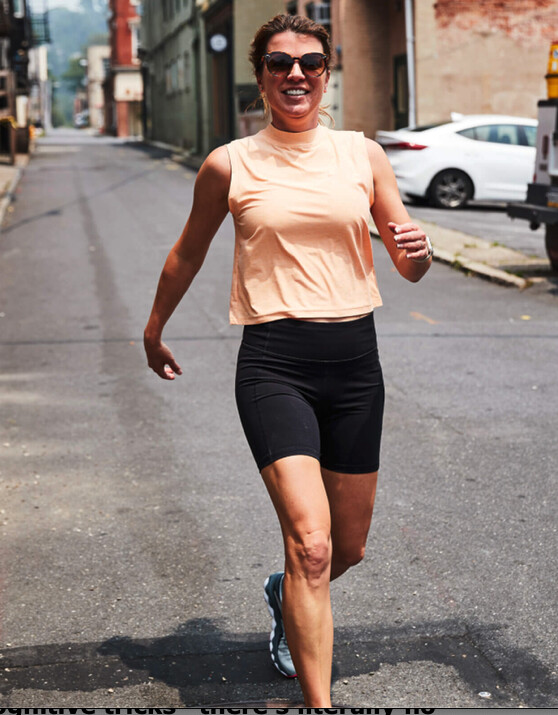
KEEP SPEED UNDER CONTROL
Midrun, usually I’ll just tell myself to slow down for the next mile so I can relax and get back into a groove. What I find always happens is I end up slowing my pace for only a few seconds, maybe a minute, and end up right back at my usual pace feeling okay.
In a race, it’s a different story. I’ll usually force myself to take a look at my heart rate or breathing. If it’s all under control for the given speed, I tell myself that everything is fine and that I have no reason to bail. I’m not big on mantras, personally, so using whatever data I have at hand helps me get past those moments when it gets hard. JEFF DENGATE // Director of Product Testing
GIVE LINGUISTIC ZOOMING A SHOT
I ’m sure you’ve heard about the value of positive self-talk. But did you know that switching the point of view can make a difference? During tough track intervals, I’ve been trying out something called linguistic zooming, which is when you use the second- or third-person point of view to talk to yourself. This creates distance between yourself and the stress you encounter. So instead of saying, “I’m crushing this run. I’m gonna be done before I know it,” I’ll say, “Theo is crushing this run. He’s gonna be done before he knows it.” It’s a little weird at first, but it helps. And if I’m feeling brave, I’ll even talk to myself out loud. I love trying out these cognitive tricks—there’s literally no downside! THEO KAHLER // News Editor
IMAGINE THE POSTRUN FEELING
Take a quick rest, catch your breath, inhale and exhale deeply for a few breaths, do a little scream if you need to, and then tell yourself this: You’ve made the commitment to get out there. How are you going to feel later today if you throw in the towel now? Will your future self like your decision to quit when the going gets tough? No? Then just go! Change the narrative and start daydreaming about how good you’ll feel when you’re finished with the run and attack the rest of the run like it’s your only job in the world. Outrun the voice that tells you to quit. Not every run is going to feel amazing, but you’ll feel amazing at the end of the day knowing that you quieted the voice that said you couldn’t do it. JENNIFER ACKER // Health & Fitness Editor
DO IT FOR YOUR RACE DAY
We all get in the mental game: I’m done, I’m thirsty, my legs feel heavy, it’s too hot, and so many more! I coach my athletes to “run with joy” for every run—not just the glory of the big race. I want them to remember why they run. For me, I keep thinking of the actual race finish. I remind myself that without this effort, I cannot experience the glory of a race day. When training for my marathon two summers ago, while on a 15-miler on a very humid day, I was running the second half as a test. Mile 11 is when the doubt started to set in. I brought on the mindset that if I cannot finish this run, how the heck will I do it on race day? I pushed through successfully and had a good run, smiling in the end. So remember your “why” and let that push you to the finish of every long run. ADAM TILLS // RW+ Member
THINK OF RUNNING AS A GAME
A few years ago, I was caught in a torrential downpour while listening to “The Hero” theme song from the anime series One Punch Man. It reminded me of how my passion for running came from being a gamer, and suddenly I was in love with running in the rain. Why? Because running is exactly like gaming.
In a game, you often encounter enemies when you’re tired of battles/hills, down to your last potion, and ready to rest and heal/head home and drink a protein shake. But face them and you get experience points (EXP) and rewards like weapons and armor. How is pressing on in bad weather or tough terrain any different? It isn’t. ERIN FAN // RW+ Member
FOCUS ON ONE STEP AT A TIME
When training for my first half marathon, I was scared and doubted I could do it. This is what my trainer suggested after one training session: If I get to the point when I feel like quitting, I should stop, breathe, and instead of looking at the finish line, focus on the step in front of me and do what I can to make it the best step possible. We talked about setting points ahead to run toward to give myself smaller challenges. This advice has helped me get through seven marathons, including the time when I cussed my way up the San Francisco hills. So here I am, making those little goals, focusing on making my each next step the best step possible. BONNIE WILSON // RW+ Member
(08/05/2023) Views: 613 ⚡AMP9 Things Every Running Shop Employee Wishes You Knew
Yes, this shoe comes in other colors. No, that doesn’t mean you should buy it.
For two years, I worked at the best run specialty store in Minneapolis-St. Paul, Minnesota. For seven years after that, I worked for a running shoe brand. In that time, I learned there’s a sizable knowledge gulf between folks in the industry and most consumers. Even many consumers who pay pretty close attention to racing and shoe reviews weren’t always up-to-speed on the latest tech, how a certain brand fits or whether they need a neutral. stability, minimal, or trail shoe.

It’s our own fault. Brands create so many SKUs that it can be hard to keep up with each development. Stores stack so many models next to each other on the wall that it can seem impossible to know where to start.
I can ensure you we didn’t keep things convoluted on purpose. On the brand side, we wanted people to feel like they knew enough about our footwear to confidently buy shoes from our website. In the shop, we knew customers appreciated feeling like they were empowered to pick the right pair. If they felt overwhelmed at our store, we knew, they probably wouldn’t come back.
That got me thinking: What else did I wish every runner out there knew about shoes? So I jotted down this list. It’s far from comprehensive. Maybe there’ll be a part two.
Full disclosure: My wife works on the product team for the aforementioned shoe brand. But I think that gives me a valuable window into how brands ideate and produce their products, and I’ll do my best to be objective. Besides, I didn’t consult her on this. To counterbalance this, I’m going to go make some major purchases, also without consulting her!
One person I did consult, since he’s been in the shop game a lot longer than I have, is Jeff Metzdorff, co-owner of Mill City Running and Saint City Running. He will really hate that I called his cross-town rival the best shop in the Twin Cities, but them’s the breaks. In any case, here’s what came up for us.
Your coworker might love Asics. Your run club friend might hate Nike. That doesn’t mean you should buy Asics or avoid Nike. You should try both—and a bunch of others—to see what works for you. (FYI: Sizing can be different from brand to brand, so don’t be alarmed if you’re a full size bigger or smaller than you thought, or even a full size different from brand to brand.)
Every set of feet is different, and shoe choice is highly individual. Anyone who tells you with broad strokes to avoid or buy any one brand across the board might mean well, but they’re probably wrong. (And if they’re right, it’s a coincidence.)
So how do you know if a shoe is for you? It’s simple—if it’s comfortable when you put it on, there’s a really good chance it’ll serve you well. Shoes shouldn’t require a break-in period to feel good. (This is in addition to other considerations you should address before you’re trying them on, like whether the tread pattern will be sufficient for the surface on which you plan to run.)
Not to get all hippy-dippy, but your body is a pretty good judge of this sort of thing—and the (albeit very limited) science seems to agree.
They can absolutely contribute, to be sure, but it’s also tempting (and lazy) to point the finger to shoes alone when injuries happen. They’re part of an ecosystem that includes individual mechanics, stressors, your training, and other factors.
Being in the wrong pair of shoes won’t help your odds of avoiding injury, but if you’re in the wrong pair, you won’t blow out your knee in the first few steps. You’ll get some warning signs before an injury, so make sure you heed them if they appear.
Things like ramping up your mileage too quickly, or neglecting ancillary strength and mobility, probably play a bigger role in injuries than shoe choice alone. You’re not Indiana Jones trying to pick out the Holy Grail, so don’t stress too much.
All it often means is that the shoe contains more physical material like midsole cushion, or more expensive material like carbon fiber, and therefore was more expensive to produce. That doesn’t mean the $200 shoe won’t work for you, but don’t rule out the $130 shoe on this basis alone.
I’ve already covered this on the brand front—that just because your favorite athlete wears Hoka or On doesn’t mean you should—but this applies to shoe type, too. A lot of pros train and race in shoes that are lighter-weight and lower-profile than many of us should be using. They tend to be lighter, more efficient, and in more dire need of shedding ounces. (It’s their job to go fast, after all.) If you try and wear road racing flats in a 100-mile trail race because your favorite pro did it, there’s a good chance you’ll regret it after mile 50.
Of course, there are exceptions, but a lot of pros know very little about the shoes and brands they’re endorsing. So take those endorsements with a grain of salt.
“I need support.” I’ve heard it a thousand times, and I was only working the floor for two years. “Support” can mean more cushion. It can mean more medial stability, designed to mitigate overpronation. For a handful of people, it means the feeling that the arch is hugging the bottom of their foot when they step into the shoe. The list goes on.
Cushion can be good if it’s more comfortable for you – but an ultra-cushioned shoe won’t necessarily prevent injury at a higher rate than its more moderately-cushioned peers.
Medial stability is something pronators might need, although there’s been a move away from overtly-prescriptive footwear in favor of “inherently stable” shoes that work for a broader variety of folks in the last decade or so. (A shop employee should be able to help you decide whether you want a stability shoe.)
As for the arch, an insole that hugs the foot tightly might feel good at the outset, but it could be a one-way ticket to blister city. (Earlier I noted that comfort is king, but here’s one case where comfort now doesn’t necessarily translate to comfort later. Just don’t view arch-hugging fit as a dealbreaker.)
So, are you sure you need “more support,” whatever that means to you? Try some shoes on and find out!
I know, I know. They ruined your favorite shoe. Or even worse, they discontinued it. I certainly won’t try to convince you that the last model didn’t fit you just a little better, or feel a little more right. And this probably won’t ease the pain. But I can assure you that brands aren’t updating their shoes arbitrarily, or—as conspiratorially-minded YouTube reviewers occasionally insinuate—for marketing alone.
When a new shoe hits the market, the brands get a deluge of feedback from customer reviews, media reviews, store staff, and reps in the field. It’s too wide, it’s too narrow, the upper rips after 100 miles—stuff they would’ve liked to catch in testing, but didn’t until their sample size was the entire marketplace.
From the noise, some signals emerge, and they’ll chart a plan to address the most consistent pieces of feedback. It might be delayed by a model, because it’s usually a 12- to 18-month process to brief, build, and iterate a shoe before it launches. So the fifth version of a shoe often addresses the feedback they hear from the third version, for example.
That doesn’t mean you’ll like the new version as much as the old one. It would be ideal if everyone loved every update, but that’s not realistic, so the brands’ big bet is that more people will prefer the new version. That’s just business.
Does that mean they always get it right? (Stares at a pile of unused Hoka Clifton 2s in the corner.) Heck no. But they aren’t doing it just to mess with you. And let’s be real—sometimes your old favorite wasn’t quite as perfect as you remember it.
Where are you now, guy who took that size 8 Brooks Dyad off the wall, squeezed your toes into it, and declared: “This doesn’t fit!” without remorse? Did you think that ruled out the Dyad entirely? Did you tell your friends that Brooks shoes are too narrow? Did you not think we had a size 12 in the back that you could try on? Did you wonder why there was only one shoe, and where the matching half was? I think about you often.
And no, we don’t mind checking for you. If getting the color you want means you’re more likely to run, we’re more than happy to help.
To that end, we know it can be a touch intimidating to make your first run specialty visit. A display wall brimming with technical-looking choices and a floor staffed by serious (nutritionally- and sleep-deprived)-looking runners.
But, don’t be scared. Don’t worry about saying the wrong thing. Good shop staff meets you where you’re at, and wants to help get you on your way to enjoying a new pair of shoes. With any luck, you’ll turn into a lifelong runner and a lifelong customer.
You see, the stores need you more than you need them. If any staff treats you otherwise—and I know it happens—go shop at their competitor across town.
(08/05/2023) Views: 394 ⚡AMPby Outside online
New to Pacing? Three Expert Running Pacers Share Their Best Practices.
acing at long distance running events is common in North America, but it can also be intimidating. Here are seven essential tips from veteran ultra athletes. Emily’s stomach had definitely gone south. She couldn’t keep anything down, vomiting every few steps. Her pacer Buzz Burrell, a fixture in the ultra scene, had encouraged various forms of nutrition and drink with a side of optimism—it’s just a rough patch, aid station’s in a half-mile, the sun will be up soon. After all, that was his job, right? To lend the moral, emotional, and logistical support Emily needed to get to the finish line.
But when the hurling continued, he got out a flashlight and inspected the latest effluent. “It was blackish red, like a stomach lining,” he noticed. “And that’s when I said to my runner: ‘You know, I don’t think we ought to do this.’”
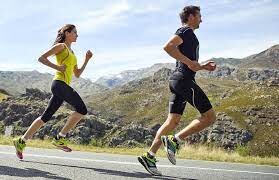
While that scene might be uncommon, it’s an example of the dire scenarios a pacer might encounter during an ultra-distance race. A pacer may need to be prepared to play all sorts of roles in service of helping a runner achieve their goals, even if it means knowing when to call it quits. They can be cheerleaders, drill sergeants, nutritionists, aide-de-camps, trail doctors, raconteurs, and comedians. It’s an art, one that requires close communication between pacer and runner.
While pacing is uncommon in European ultras (it’s not permitted in UTMB races, for example), it is a frequent feature in the U.S. Both on the track and in marathons, pacers are in from the start and step off somewhere halfway, but those who are pacing an ultra usually pick up their runner after the halfway point and accompany them for some or all of the last part of the race.
Some purists argue that the psychological advantage of having clear-thinking, uplifting company in the later stages contravenes the spirit of the endeavor, while others find it a way for friends or family to share in what might otherwise be a time-consuming and self-centered undertaking.
The practice of pacing originated as a safety precaution—race directors didn’t want runners to get lost or collapse out on the trail alone. The 345 percent increase in participation in ultras over the last twelve years guarantees that, while some runners are very experienced, there’s also an influx of neophytes who could benefit from the company of a pacer. And yet, at the same time, there’s a contingent who have never worn a pacer bib.
For those new to pacing, or some of us who have been thrown into the fire to pace a friend without any guidance, here are seven essential insights on the art of pacing from a few of the sport’s veteran pacers. Unsurprisingly, these three pacing pros are also experienced ultrarunners. In fact, it’s been suggested that pacing is an excellent way to learn the tricks of the trade before signing up as a competitor.
After interviewing these three experts, several themes emerged on what to expect when pacing a runner, and how to prepare and execute on your responsibilities:
Buzz Burrell: “You might be trudging along while your runner is throwing up, but I put a different spin on it. As a pacer, I’ve skipped the first 50 miles of the race, which means I’m feeling good, walking into aid stations, eating sandwiches. I haven’t paid a thing for this race! As a pacer, I can enjoy the beauty of the course. This runner might be a dear friend of mine, and I want to help him, but I’m also a free food kind of guy.”
Justin Grunewald: “I think the most common reason is to help someone you care about conquer their demons, and get from point A to point Z. For me, Tyler [Green] is a friend, but he’s also hugely accomplished. I learned so much from him by pacing, I think I could take 30 to 60 minutes off my time from what I learned from pacing.”
Nicole Bitter: “To be a part of a loved one’s attempt at achieving a goal, that’s almost better than if I did it myself. Some people can’t run 100 miles or don’t want to—pacing is a way to share in the experience. A lot of people find fulfillment in pacing, maybe more so than racing.”
BB: “This is critical. It’s not just two friends saying ‘Let’s go for a run together.’ First, discuss goals. Talk about possible scenarios.”
JG: “We talked about Tyler’s objectives. He’d finished second and fourth at States in past years and was completely overlooked as a top finisher this year, so he really wanted to go for it. He had dropped his pacer before, so he wanted someone who could go 32-33 miles. We talked about his intricate cooling routine and how it was going to go at aid stations.”
NB: “It’s critical to understand your runner and what makes them tick. I love to talk when I have a pacer. I want them to tell me funny stories, what happened earlier in the day. Some people don’t want to talk; they’re just in the zone.”
BB: “Be well-fed and well-hydrated, and know when your start time will be. Never become part of the problem; don’t be a liability. Know the pacer rules, like no physical assistance. Usually “muling”—carrying your runner’s food or gear—is not allowed, though it is at Leadville, so be aware of the rules. Know the course, the aid stations, and cut-off times.”
JG: “At Western States, cooling is 15 percent of the race, so everything had to go right at aid stations. Typically, about a half-mile out from an aid station, I’d ask what he wanted to drink. I’d get Coke, ice cubes, water in one bottle, Tailwind in the other.”
NB: “Make sure you and your runner are a good fit, that you’d want to spend some time with this person. Be confident you can cover the distance you’ll be pacing easily. Take care of yourself or you won’t be equipped to pace.”
BB: “It’s unlikely your runner will be feeling great. They may be sick. They may be on a bummer. It might be hot or stormy. I tell first-timers: ‘You feel bad. So does everybody else. This is what it looks like.’”
JG: “They might be too mentally fatigued to know what they need. Tyler told me his arms were numb, which told me he needed electrolytes. Hyponatremia and dehydration are really tricky to differentiate, but, in my experience, they almost always need more electrolytes.”
NB: “Expect the unexpected. You don’t know what could happen. You might not even get the chance to pace if your runner drops out. Keep a positive outlook, and be a problem-solver.”
BB: “The first-time runner needs stability, support, and mild encouragement. Remind them to start eating and drinking 45 minutes into it. Don’t wait until your stomach starts to go. The veteran probably knows this so you can get into actual pacing, behind or in front of them, moderating the ups and downs. For someone who just wants to finish, concentrate on putting one foot in front of the other.”
JG: “Normally, Tyler takes it out slower and picks people off, but this time the theme was ‘no regrets,’ so I reminded him of his objectives, of who he is, of how proud his family will be. He ran in front of me so I wouldn’t distort his view of rocks and roots.”
NB: “It’s nuanced. My husband is competitive so I usually talk about how we need to catch that runner in front of us. The hunt mentality. Or if we need to pick it up, I joke, ‘Wow, are you keeping up with me?’ Some races, like Western States, are dialed in to the tech, and can feed the pacer info on how far ahead or behind their runner is.”
BB: “‘It’ll be fine’ is our mantra, as long as it’s just a mental or emotional low. You can always come back from that. I’ve had runners say, ‘I’m out. I can’t do this.’ I have them sit down, take some deep breaths, let their heart rate come down. Heck, you can take 30 minutes at an aid station, change your socks, and march back out.”
JG: “I told him [Tyler Green] he was looking great. He hit a rough patch, so we focused on hiking 10 steps, running 10 steps. Relentless forward progress. I’d tell him things like, ‘In 800 meters there’s a downhill.’ Late in the race, no one wants to eat, so I kept thinking of what’s going to sound good, to get in some calories.”
NB: “My husband is usually in the zone, not talking, but he enjoys when I tell him stories and point out nice views.”
BB: “Personally, I’m always going to protect my runner’s health first. Finishing is second. There are thousands of stories of people getting through awful circumstances, but I’m not going to encourage them to go on if I think it’s damaging to their health.”
NB: “In the 2016 Western States, my pacer called my day. I had hyponatremia and we didn’t feel it was safe. It’s good to have a close friend make those tough calls.”
Being a good pacer is perfect training for becoming an accomplished ultrarunner. All of our expert pacers routinely switched roles in their many years in the sport. And for those new to the sport, pacing is a great way to dip your toes before actually signing up for a long-distance race. Regardless of whether you ever intend to go the full distance or not, the many roles of the pacer make for a rich, fulfilling experience.
(08/05/2023) Views: 351 ⚡AMPby Outside Online
South Africa’s fastest sprinter receives six-year doping ban
On Friday, the South African 100m record holder, Carina Horn, received a six-year ban from all track and field competitions due to her second doping offense in the last four years. The Athletics Integrity Unit (AIU) confirmed that Horn tested positive for clenbuterol, a prohibited substance, at a track meeting in Spain in June 2022.
Both Horn’s A and B samples tested positive for clenbuterol, a steroid known for enhancing athletic performance by increasing the body’s metabolic rate. This marks her second doping violation after a previous suspension in September 2019 for testing positive for ibutamoren and ligandrol. Horn proclaimed her supplements were contaminated, which led to a reduced suspension of two years instead of a potential four-year ban.
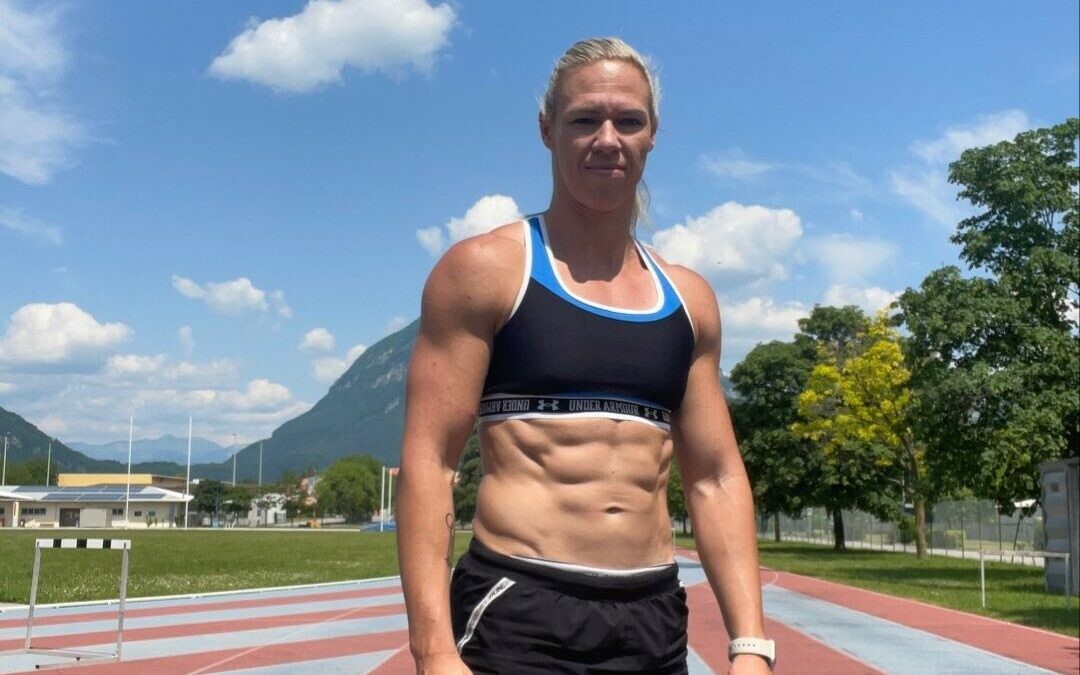
As a consequence of the recent violation, all of Horn’s results after June 18, 2022, have been DQ’d, including victories in several World Athletics Continental Tour events and a South African national championship in the 100m.
In 2018 Horn became the first South African woman to break the 11-second barrier in the 100m with a time of 10.98. However, her career now faces a significant setback, as she will be ineligible for competition until 2029.
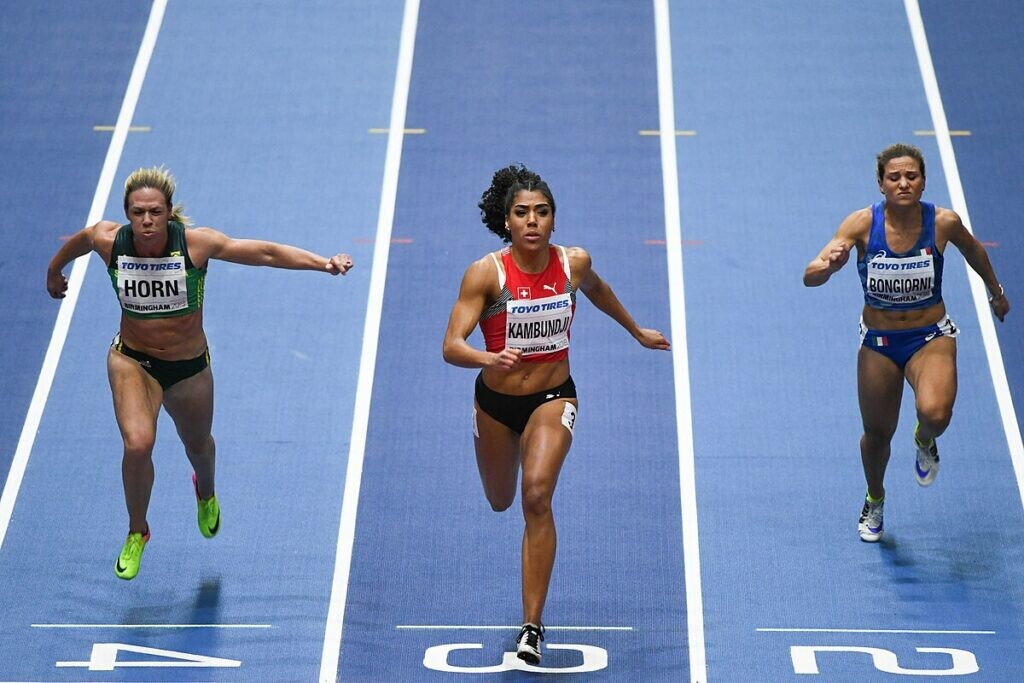
Following her previous ban, Horn came back to represent South Africa in the women’s 100m at the 2022 World Athletics Championships. Additionally, she won a bronze medal in the 100m at the 2022 African Championships in Mauritius, just two weeks before her positive test in Spain. Throughout her senior career, Horn has been the top female sprinter for South Africa, participating in five world championships and the Rio 2016 Olympic Games.
She has also earned accolades such as 4x100m relay gold and 100m silver at the 2016 African Championships in Durban, South Africa.
(08/04/2023) Views: 463 ⚡AMPby Running Magazine


